By Rick VanSickle
It was a dickens of a year for growing grapes in Ontario in 2023, but don’t take our word for it, read what dozens of winemakers and growers had to say about it.
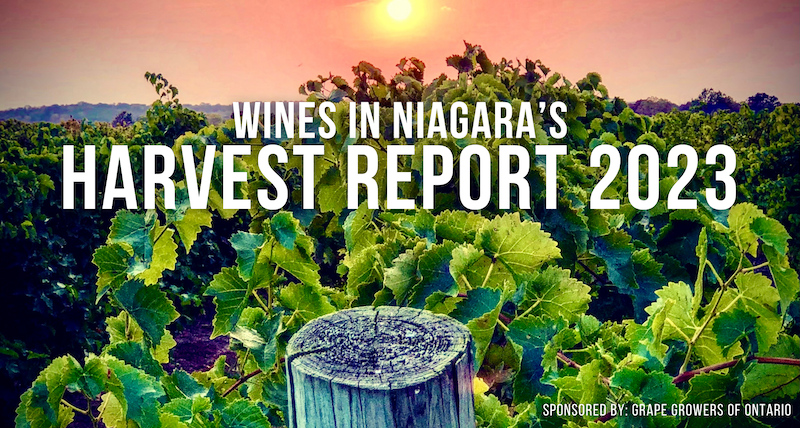
Evoking Charles Dickens, Vineland Estates winemaker Brian Schmidt said, “it was the best of times, it was the worst of times, then it was the best of times again.” A twist on Dickens’ A Tale of Two Cities, but perfectly apt for the year that was. That is the theme that runs through this Ontario Harvest Report, sponsored by the Grape Growers of Ontario, with variations on the good-bad-good theme. It went “from a sow’s ear to a silk purse,” noted Last House Vineyard owner Andre Gagne, describing the harvest season in Prince Edward County:
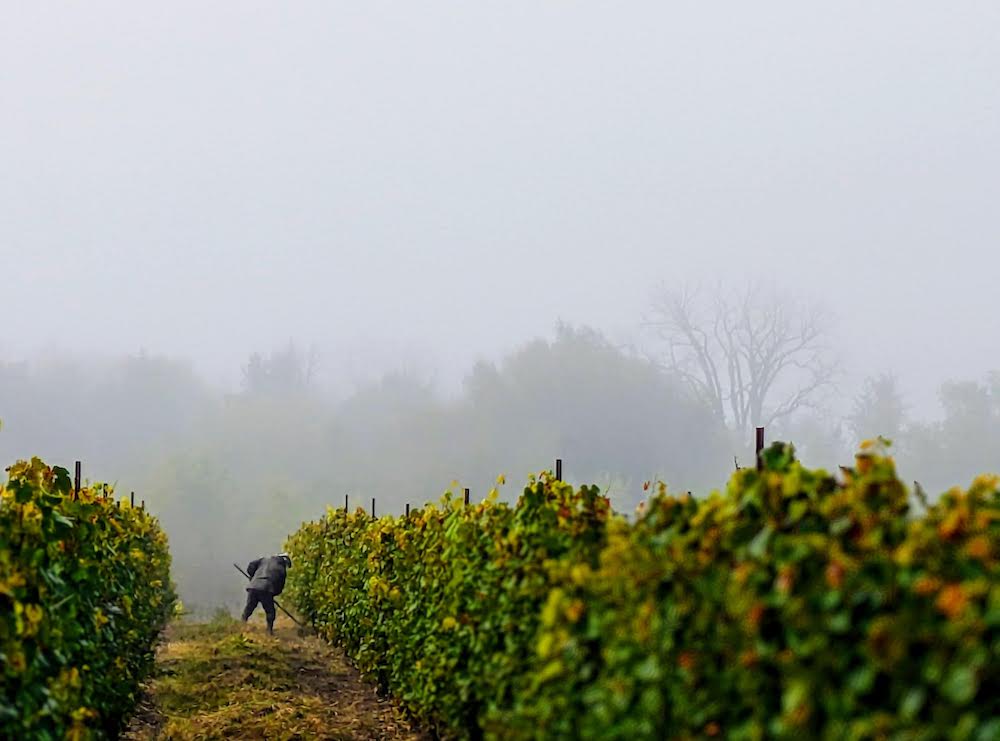
Note: Very top photo was taken by Elena Galey-Pride at Winestains. The photo is of a Gamay bunch undergoing véraison in the Stratus vineyard taken on Aug. 27, 2023.
In the end, winemakers in all regions of Ontario rejoiced with a beautiful fall harvest, when it really counted, to produce a healthy, plentiful, and classic harvest for the varieties that define the main regions — Riesling, Chardonnay, Cabernet Franc, Gamay, and Pinot Noir.
“A hot dry fall is beautiful for wine grapes as there is less risk of disease, acidy drops, brix (sugar) climb, and fruit ripens,” said Pillitteri Estate’s viticulturist Jamie Slingerland. “The appearance of El Nino in the fall saved the crop.”
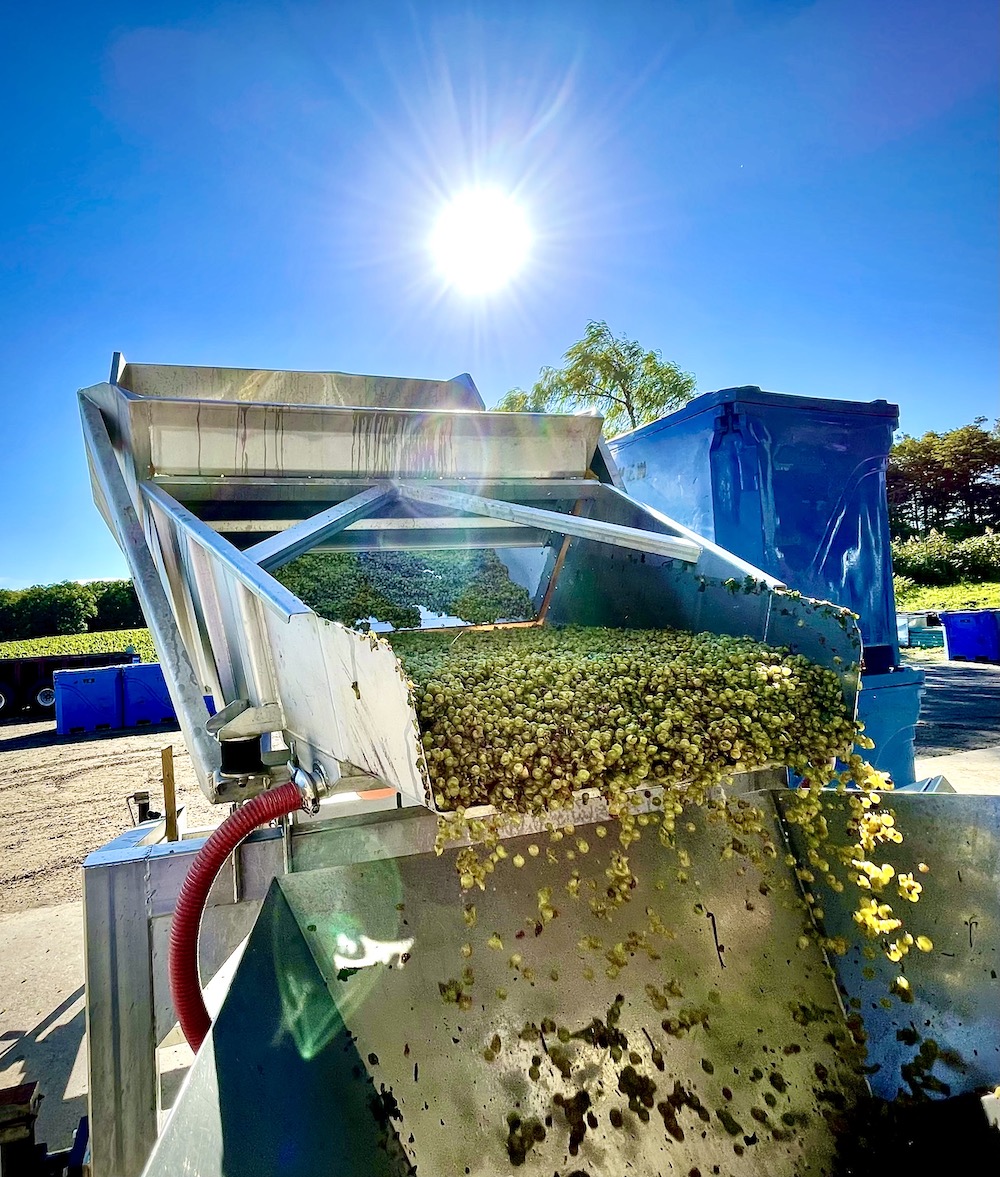
If there was a downside, it would be with the largest grape surplus since 2008 in Niagara. Depending on who you talk to, there was up to 6,000 tonnes of Niagara grapes worth millions of dollars cut to the ground with no takers. What was even more shocking was the fact that the surplus came after a shortfall just the vintage prior.
The B.C. wine industry, which suffered a significant shortfall of grapes in 2022, just wasn’t interested in purchasing any of Niagara’s surplus, but another “catastrophic” freeze, impacting up to 99% of the 2023 harvest, mostly in the Okanagan Valley, had wineries rethinking that position with many looking to Niagara and Washington to help them through their difficult times.
Another unintended connection to the B.C. wine industry, was the summer haze that cast a pall over Ontario wine regions. “Then the smoke rolled in,” said Craig Wismer, manager of Glen Elgin Vineyard Management. “We didn’t see Toronto for a month. No one had Ontario forest-fire smoke on their bingo card for 2023, surely a Niagara first.”
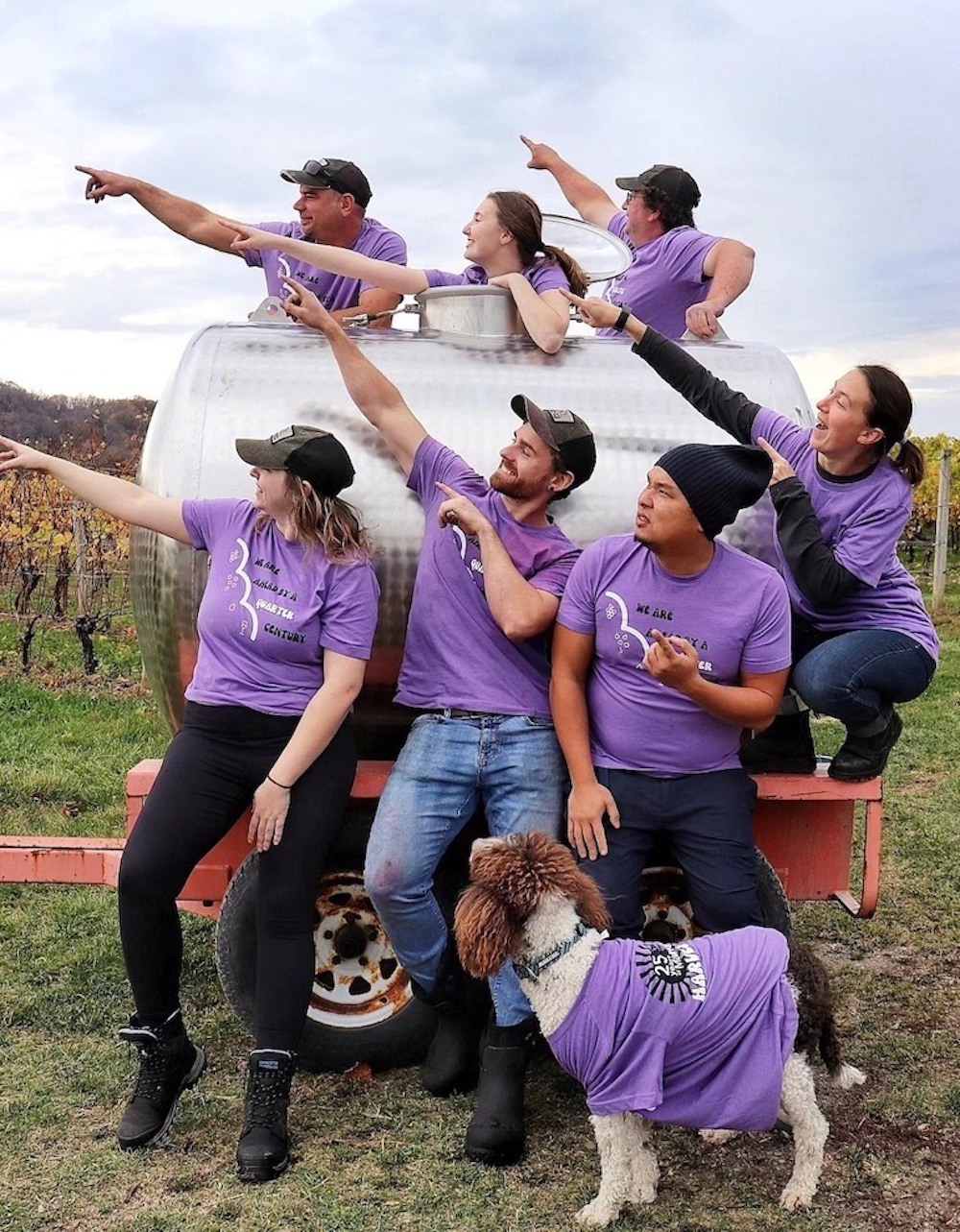
Debbie Zimmerman, CEO of the Grape Growers of Ontario, said that “despite the winter damage of 2021-2022, the grape yield and quality in 2023 was high. Overall, 75,727 tonnes were harvested with a $113.5 million farm gate value.”
Paul Franciosa, co-owner of Grimsby Hillside Vineyard, said that “overall, we’re very happy with the quality from 2023, disappointed with the yields, and would love to never see another anxiety-inducing year like that again.”
Domain Queylus and Mason Vineyard winemaker, Kelly Mason noted that the 2023 harvest needed help to save the vintage. “I remember saying to friends, ‘we need a miracle: a completely dry September.’ Without that, there was the potential for a lot of rosé being made from Pinot Noir in 2023. The dry miracle of September was welcomed and had it not been for the sun and minimal precipitation, we would have experienced a different harvest — with all varietals.”
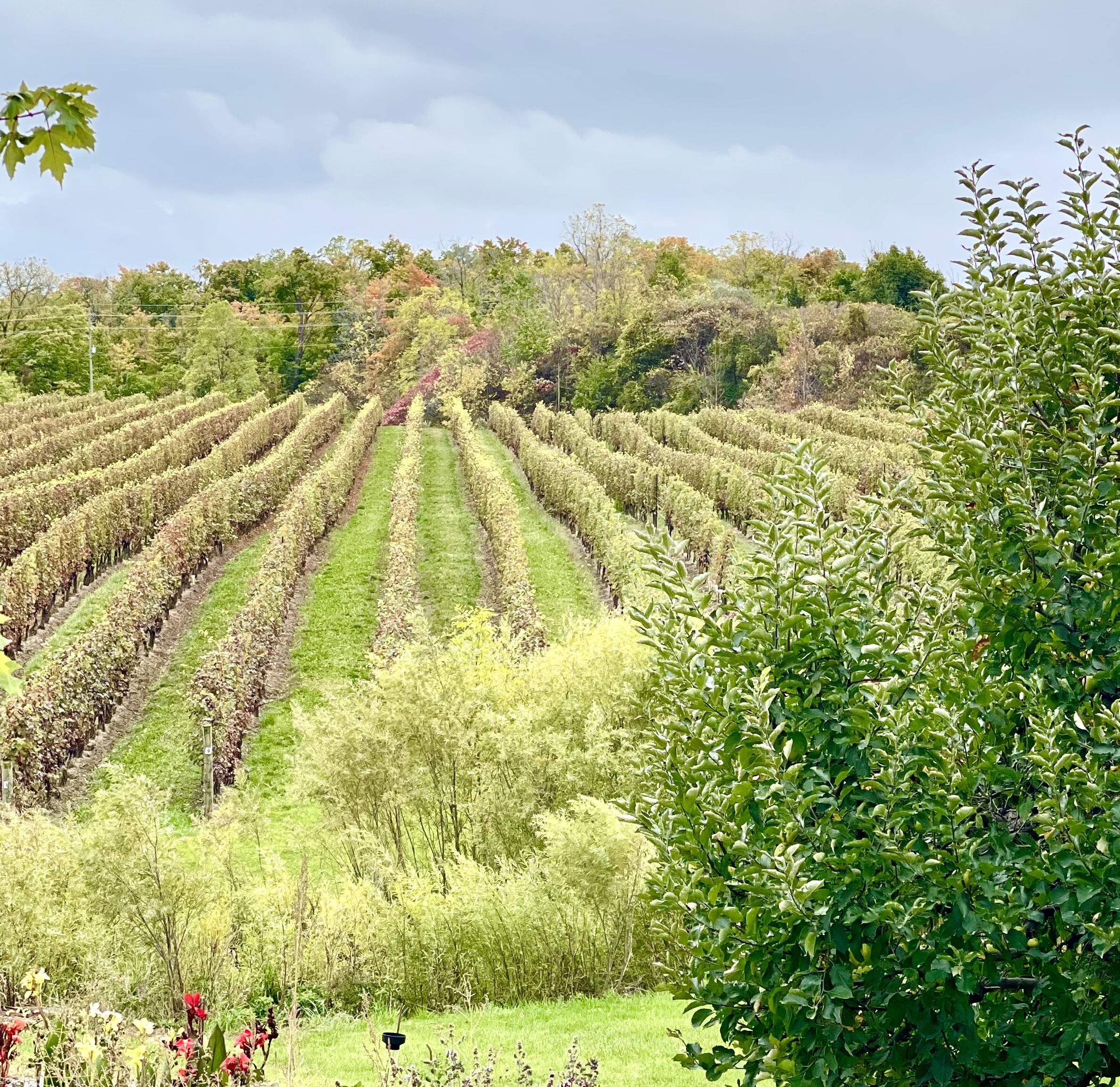
In its summary of the 2023 vintage in Ontario, Vintner’s Quality Alliance (VQA) said the harvest was “a testament to the resilience of the region’s vineyards and the craftsmanship of its winemakers. Despite some challenges posed by weather fluctuations, the overall quality of the wines from this vintage promises to be exceptional. This vintage has delivered wines that reflect the unique characteristics of the region.”
VQA noted that Chardonnay and Riesling have “once again demonstrated their suitability to the Ontario terroir” while “red varieties, such as Pinot Noir and Cabernet Franc, also fared well. The cooler nights during the growing season helped retain the acidity in these red grapes.”
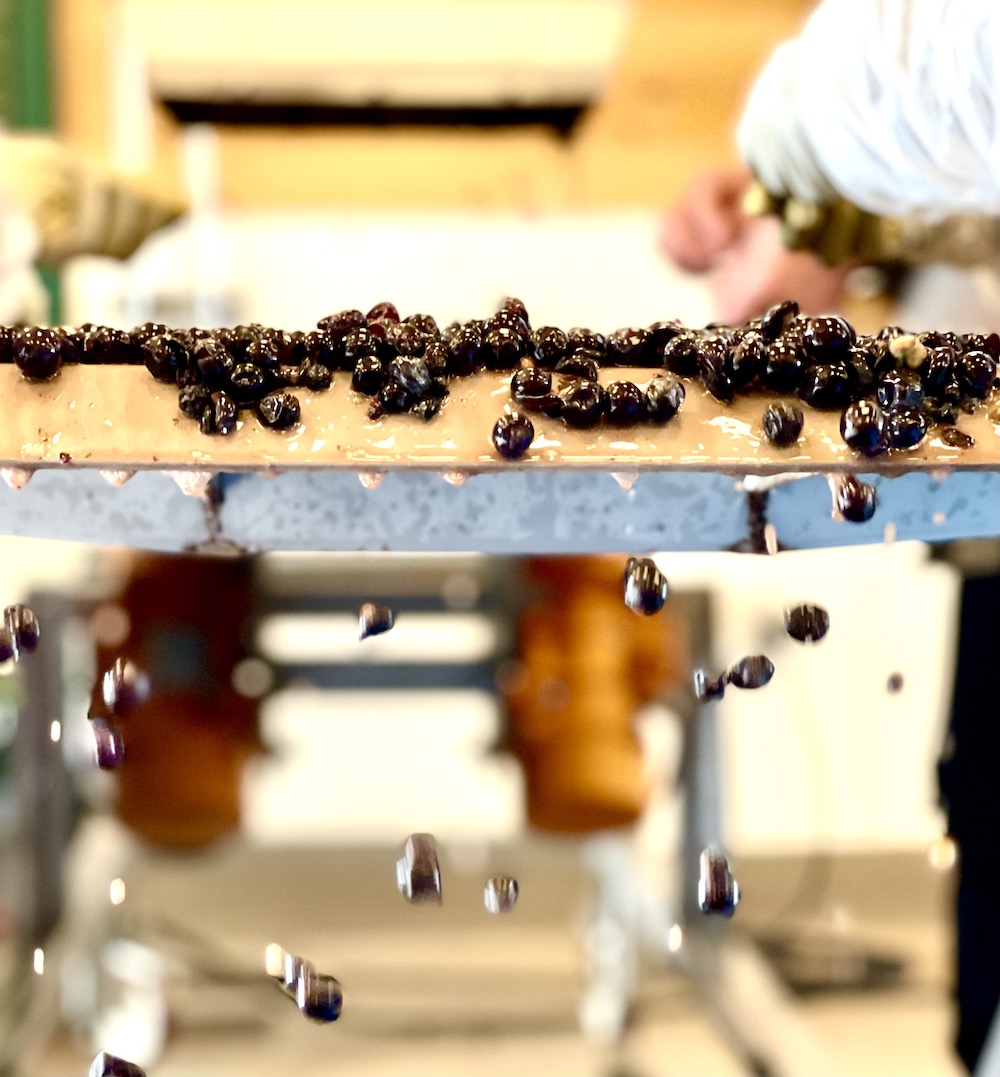
Winemakers and growers harvested grapes will into November to take advantage of the warmth and the achieve phenolic ripeness. “Luckily, the weather held and was relatively mild and dry across all Ontario wine appellations,” VQA noted. By Nov. 15, the customary deadline for late harvest and icewine registration, many wineries were still actively harvesting grapes for table wine. Reflecting the unusually long and drawn-out harvest season, the late harvest and icewine registration deadline was extended to Nov. 30.
The yields varied across sub-regions, with some areas experiencing slightly lower quantities across specific varieties due to weather-related stress on the vines, while other areas experienced yields above average. “Despite these challenges, the grapes that were harvested displayed excellent phenolic development, promising wines with depth and complexity,” VQA concluded.
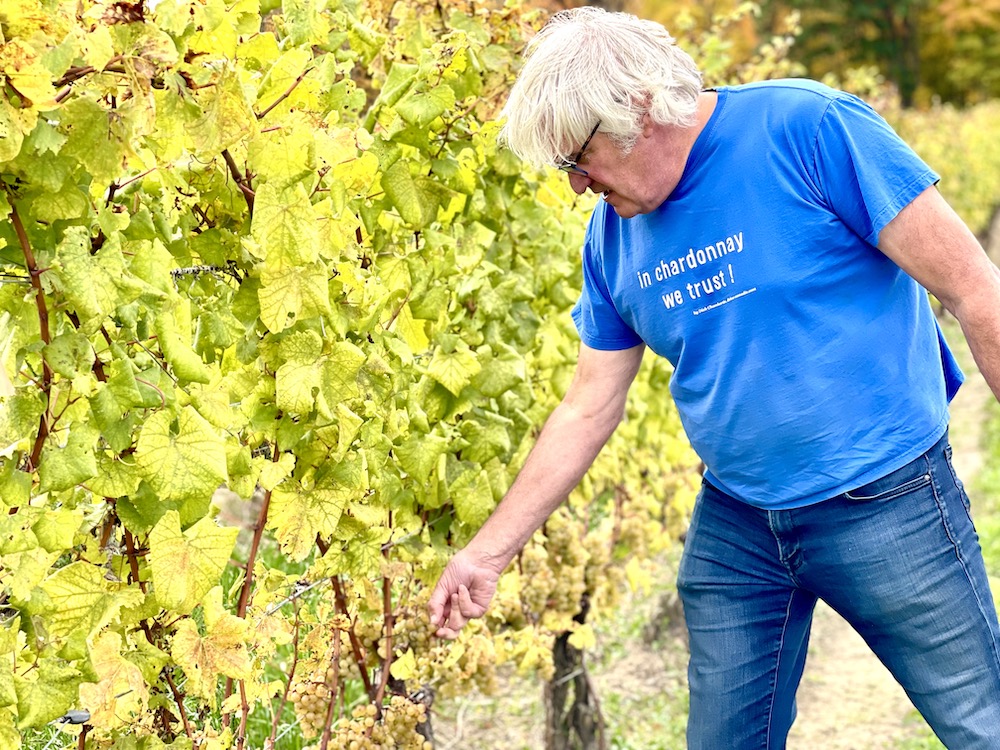
Thomas Bachelder (above), winemaker/owner of Bachelder Wines and winemaker for Domaine du Clos Jordanne, is excited for the wines he will be making from 2023. “A vintage to remember and cherish, once bottled and in the cellar,” he said. “All in all, for the Burgundian varieties, 2023 will equal great, ripe wines, excitingly-fresh-fruited wines with depth that will age on their freshness, dry extract, and acidity. Alcohols will be 12%-ish, with the odd wine reaching 13%.”
In this annual Wines in Niagara harvest report, we reached out to dozens of winemakers and growers across the main regions in Ontario for their direct input into the harvest and what to expect from the 2023 wines once they are bottled released into the wild. These assessments from the winemakers and growers who know best is an invaluable resource, and Wines in Niagara could not produce this report without their input. We thank everyone who contributed. We’ve divided their reports (submitted in their own words) into sections: Niagara, Prince Edward County, Lake Erie North Shore, growers and other. The Niagara Peninsula report from winemakers and growers kicks off their vignettes.
Niagara Peninsula
The weather in 2023 played a crucial role in shaping the vintage in the Niagara Peninsula appellation, according to VQA. A mild winter followed by a warm spring led to an early bud break, raising hopes for an abundant harvest. However, the summer brought some unexpected challenges, including sporadic heatwaves and intermittent rainfall. Winemakers had to closely monitor their vineyards to mitigate potential issues such as disease and uneven ripening. The careful management of the vines, coupled with the utilization of advanced viticultural practices, ensured the grapes reached optimal maturity.
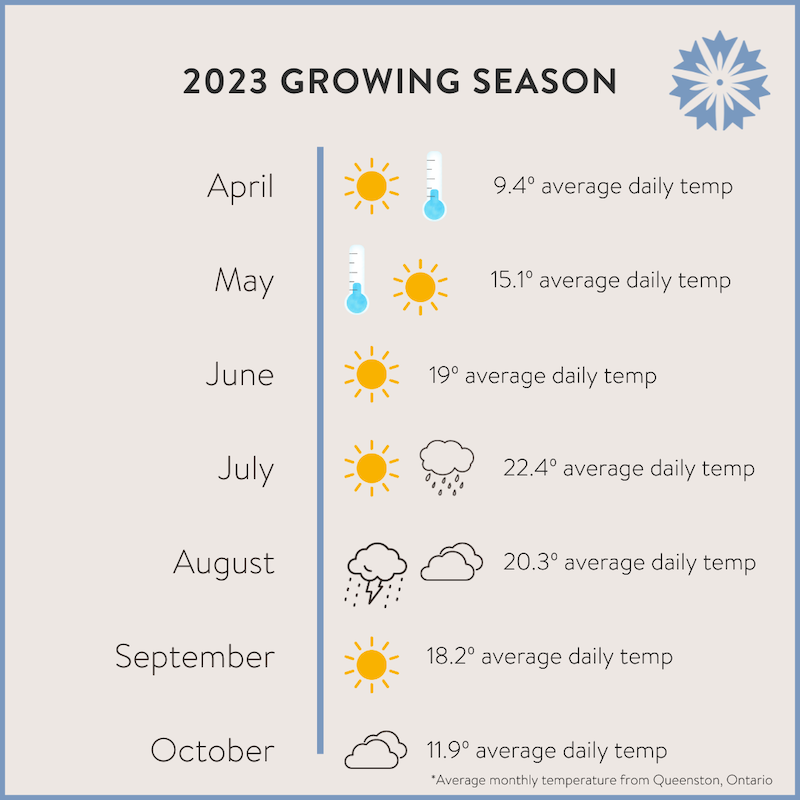
Conditions for harvest were quite favourable, with wineries reporting a broad window of opportunity to bring in grapes. September was dry and reasonably warm compared to 2022, and enthusiastic growers made quick work of the relatively light harvest.
Crop size was the main story, but fruit quality was excellent and the grapes that were brought in had winemakers wishing for more.
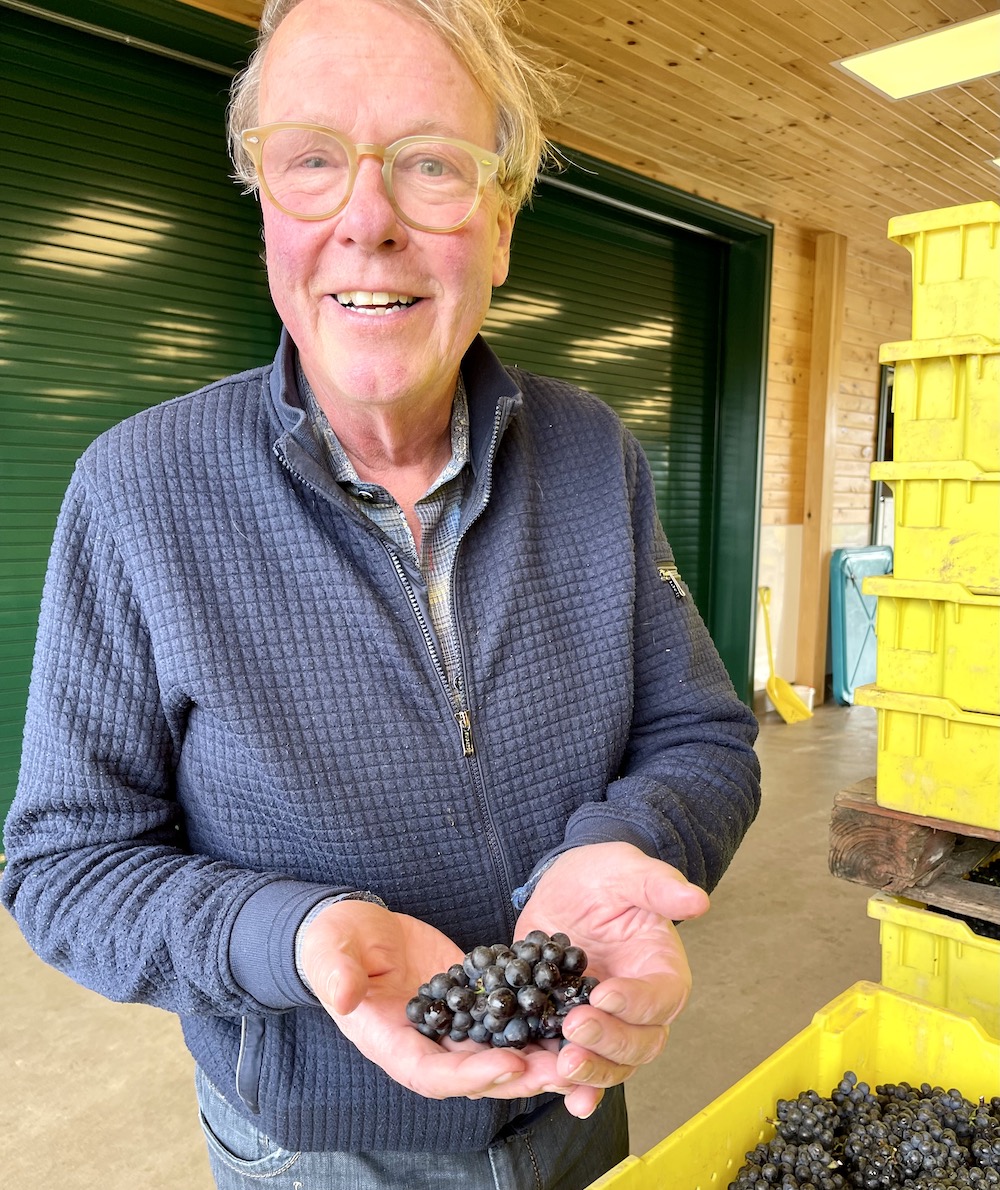
Harald Thiel, vigneron/proprietor,
Hidden Bench Estate Winery, Beamsville Bench
The spring was moderate with bud break on May 12 followed by some warmer temperatures of 25 to 32 C at the end of May and beginning of June. Full bloom was June 20 and came with some rain. This seemed to affect the fruit set of the Pinot Noir, so not as much thinning was required in those blocks this year.
Our main challenge this year, as an organic vineyard, was managing a healthy canopy as the humidity was very high from June to August. As we moved into the harvest period in September and October, we had good, dry weather which allowed us to time our picks for when physiological ripeness and flavour were best balanced, ensuring the resulting wines would be of the highest quality possible.
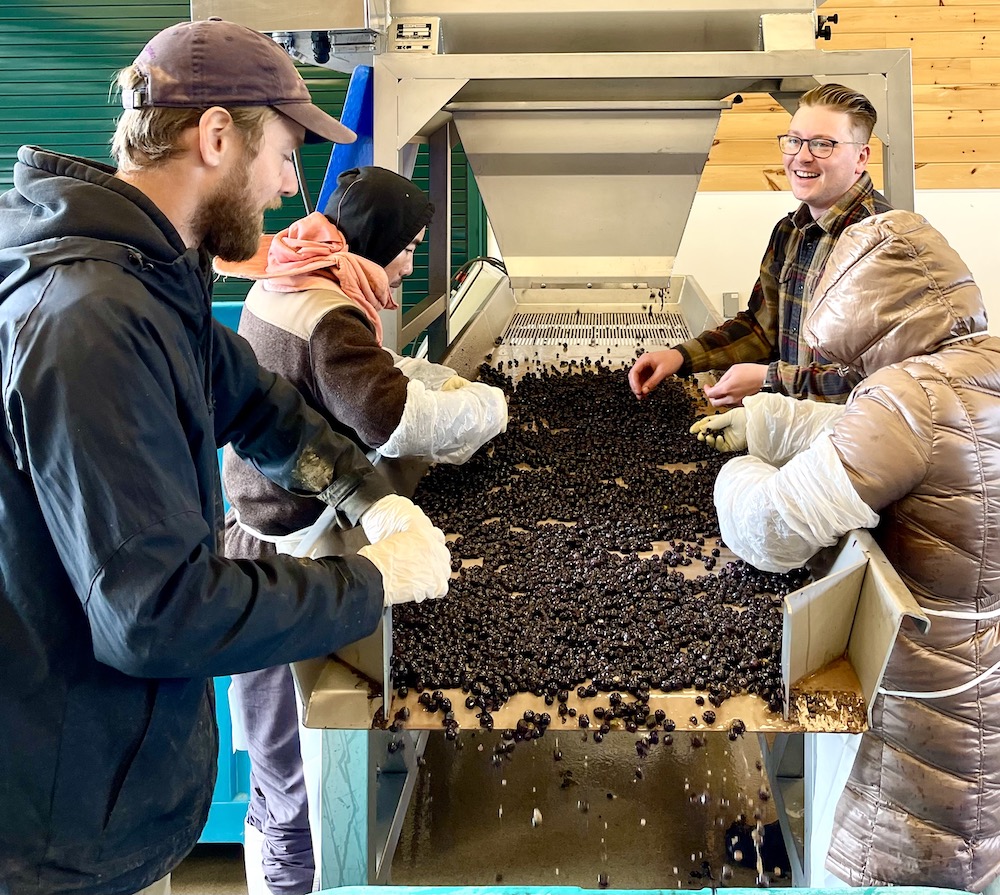
Overall, I am very pleased with the quality the young wines from 2023 are showing in the cellar. Riesling and Chardonnay seemed to be showing exceptionally well from this year. The Riesling reached brix of 19-20, which we haven’t seen for a while and as a result shows great concentration of flavour.
Across all varieties from 2023, our estate fruit reached exceptional levels of ripeness and concentration this year. However, cool nights at harvest meant we were also able to retain freshness and acidity in the fruit. I see the wines from 2023 landing somewhere in between the delicate, acid driven wines of 2019 and the ripe, structured wines of 2022.
It is still early to tell, but I am quietly confident that the wines from 2023 will be among some of the top vintages we have produced to date.
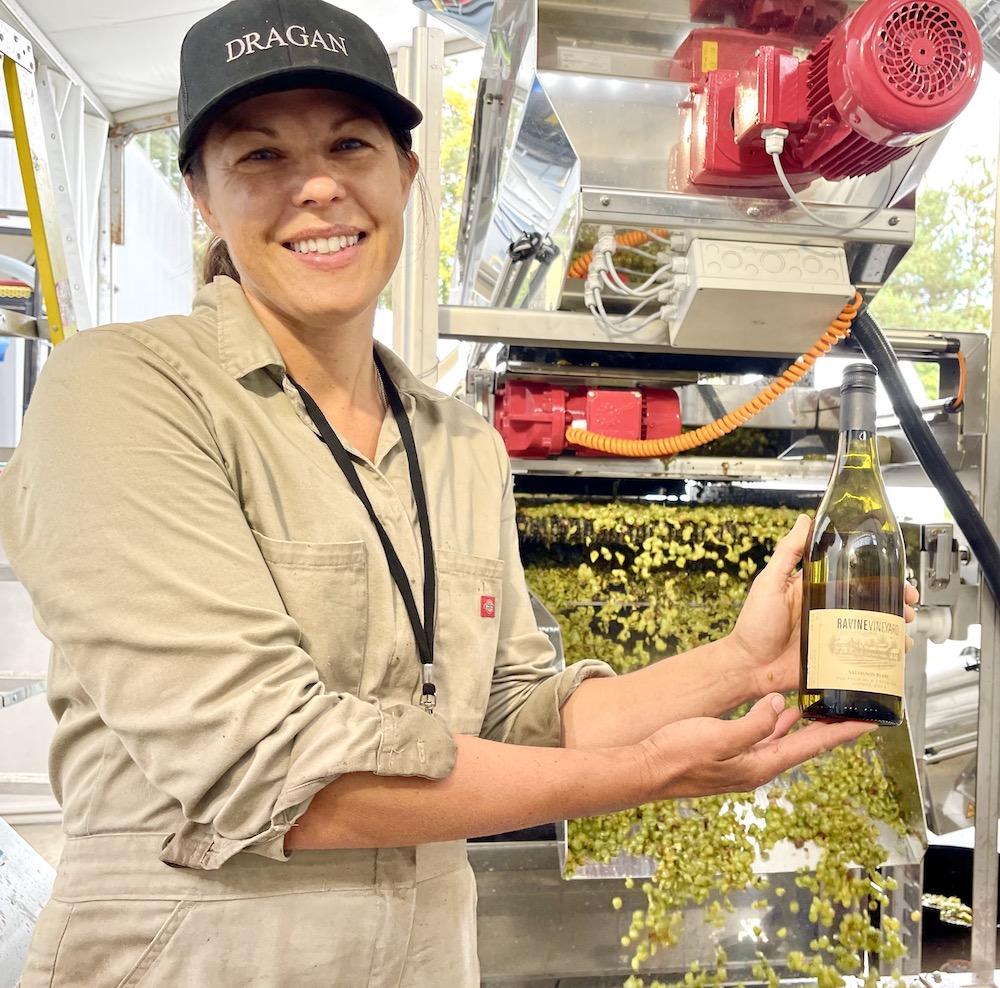
Lydia Tomek, winemaker, Ravine Vineyard, St. David’s Bench
Vintage 2023 definitely goes down as one of the longer and more demanding harvests of the last 20 years. The latter part of summer was wet, and it seemed to throw typical ripening cycles off. I sometimes wonder if maybe the unpredictability of the harvest was also the result of the thick haze we experienced throughout the summer from all the forest fires … who knows.
We were fortunate to have decent weather in September and October for sugars to develop and lovely flavours. Some interesting observations from 2023 were that varieties like Sauvignon Blanc, Pinot Gris and Gamay Noir became some of the stars of the vintage and Cabernet Franc was once again that reliable bold red that took a couple weeks longer than usual but hit the mark for us. With those mentioned four varieties, I was extremely impressed with their perfect chemistry on their respective harvest dates, as well how pronounced and deep their flavour profiles became.
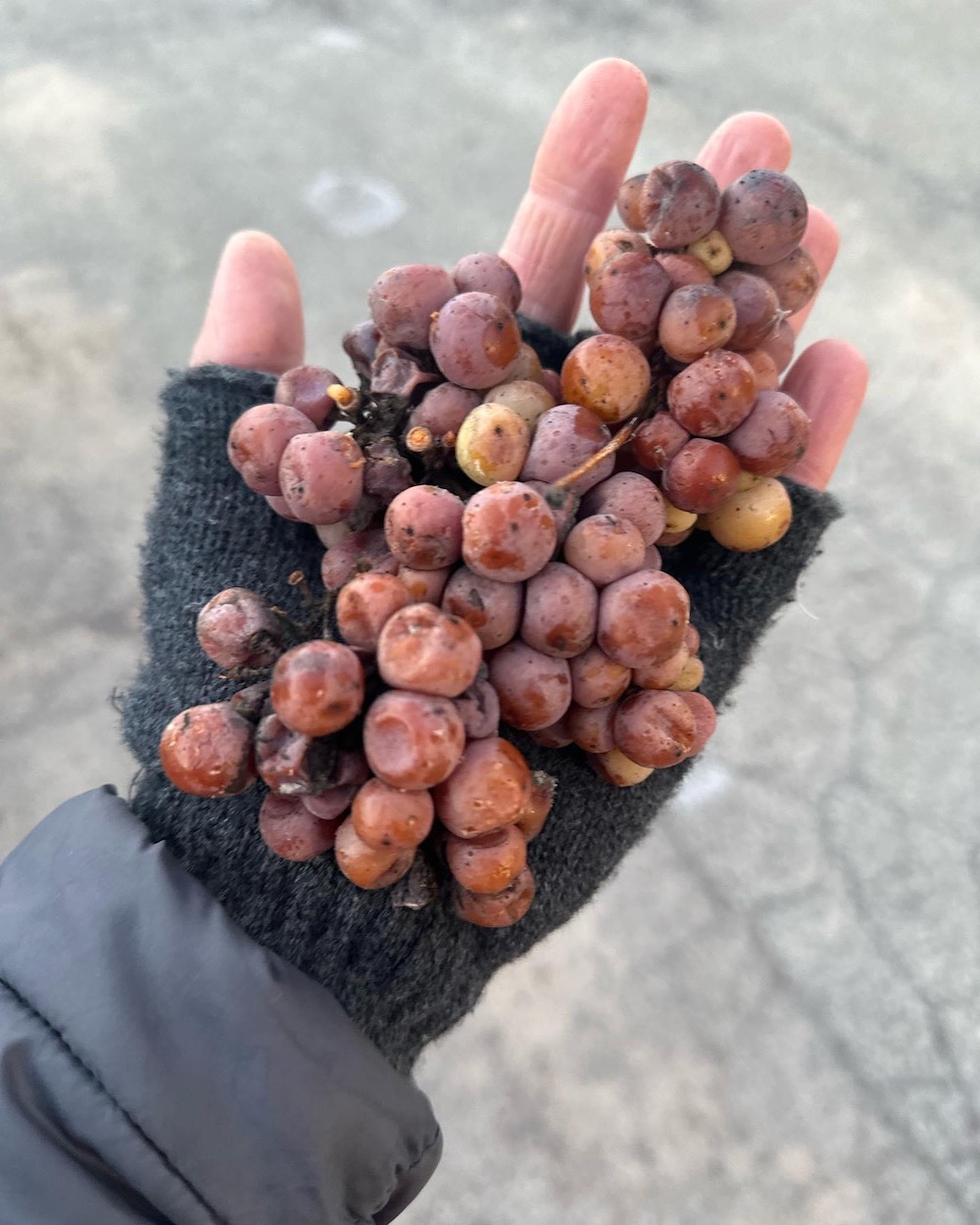
Other varieties like Chardonnay, Merlot, Riesling, and Cabernet Sauvignon took their sweet time to ripen which made for some challenging moments making calls in the vineyards but also bottle necked some of the production logistics due to a change in variety rhythm. Thankfully though, things came around and even though harvest dates were anywhere from 2-4 weeks later on some sites, it was worth the wait. We were just grateful that the fruit integrity was there on all sites to let them hang longer than usual. I’m confident that slow and steady will win the race for the 23s and the wines will capture that cool climate finesse we see in many of our harvests here in Niagara.
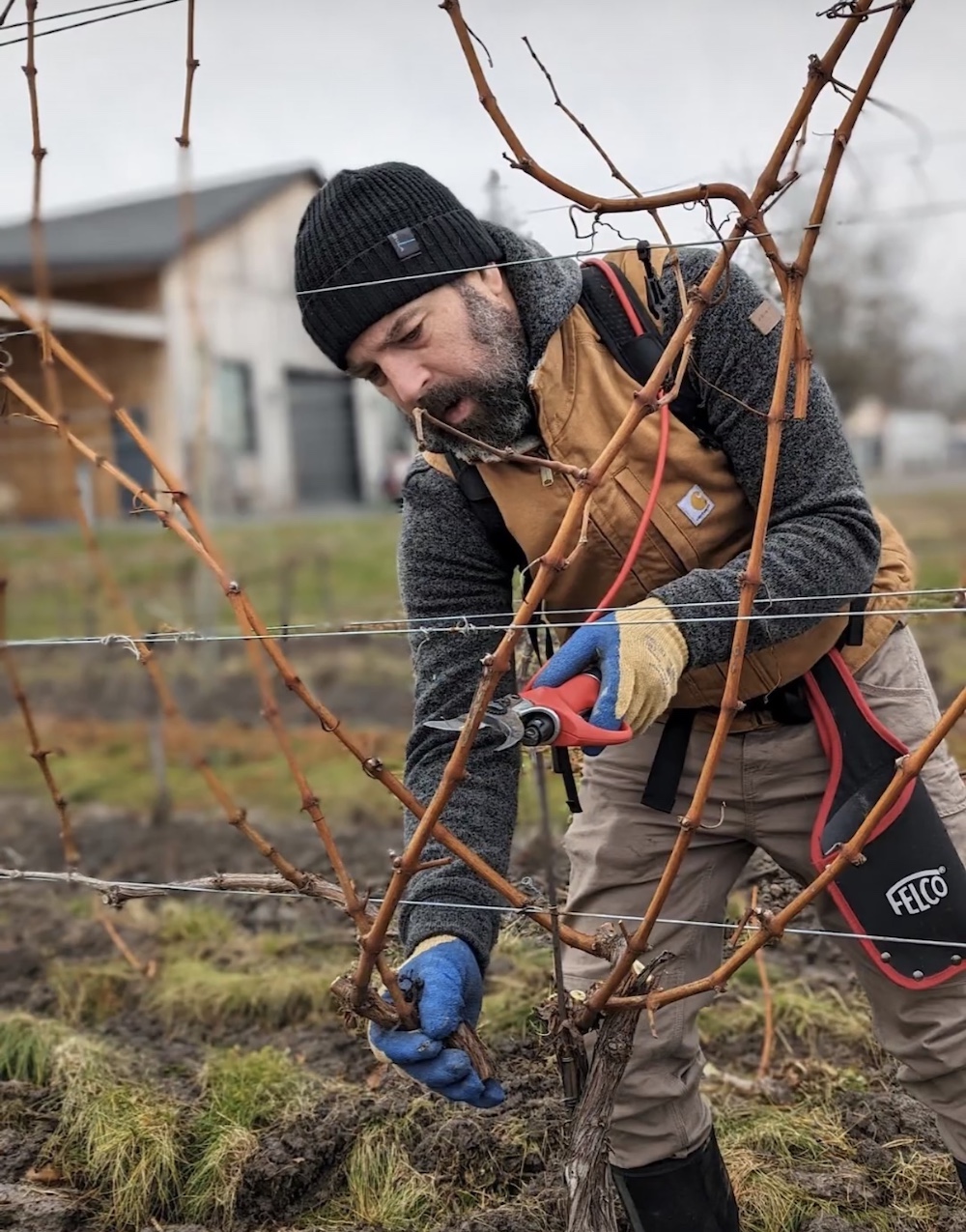
Jonathan McLean, winemaker at
Black Bank Hill, Lincoln Lakeshore
Winter 2023 was mild so our biggest challenge with pruning was locating the remaining damaged/weakened trunks from the previous winter. We work with a two-trunk system at Black Bank Hill, so a major focus was tying and training suckers to replenish the wood we lost (Syrah and Merlot mostly).
April was a bit messy, with about four days of summer smack dab in the middle of it. That put bud break on a hair trigger needing only a couple weeks of modest warmth to push it forward. We did see one very slight frost in the middle of May that singed some of our Chardonnay but not enough to affect shoot development. The canes were in excellent shape after the mild winter, so bud development was almost 100% throughout the entire Black Bank Hill vineyard.
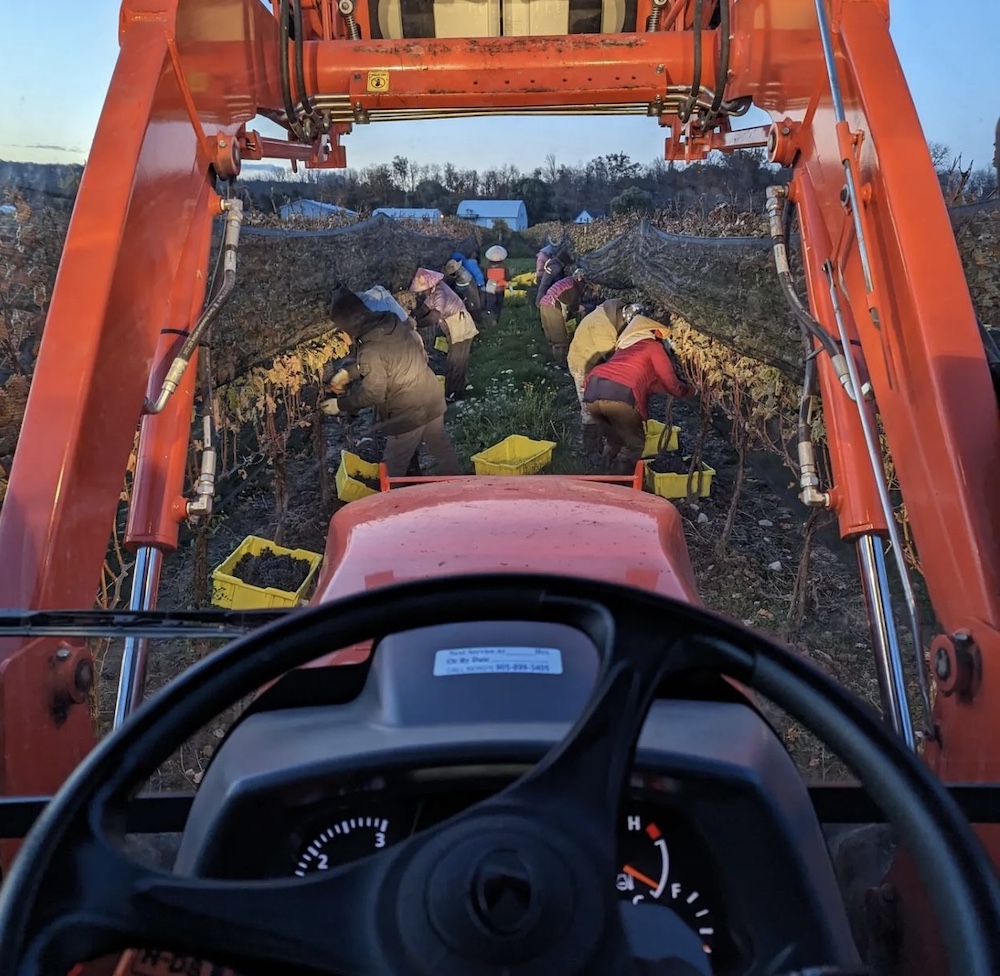
Heading into June we were about a week behind average. Closer to the end of that month, I noticed the red sun during our sunrises which indicated to me the smoke from B.C. and Alberta had arrived. July was warm but we saw very little direct sun between the smoke and persistent overcast. Yield estimates were indicating a massive harvest (up to six tonnes/acre in some varieties), so an aggressive fruit thinning was completed the first week of August. Interestingly, Pinot Noir was the only variety on our property that had lower yields and required no thinning.
Botrytis and phenolic ripeness were my two biggest concerns given the growing season, so a second pass removing 100% of the leaves in the fruiting zone was completed. By the middle of August, the smoke had cleared but we were seeing clear signs of fall and were now almost two weeks behind.
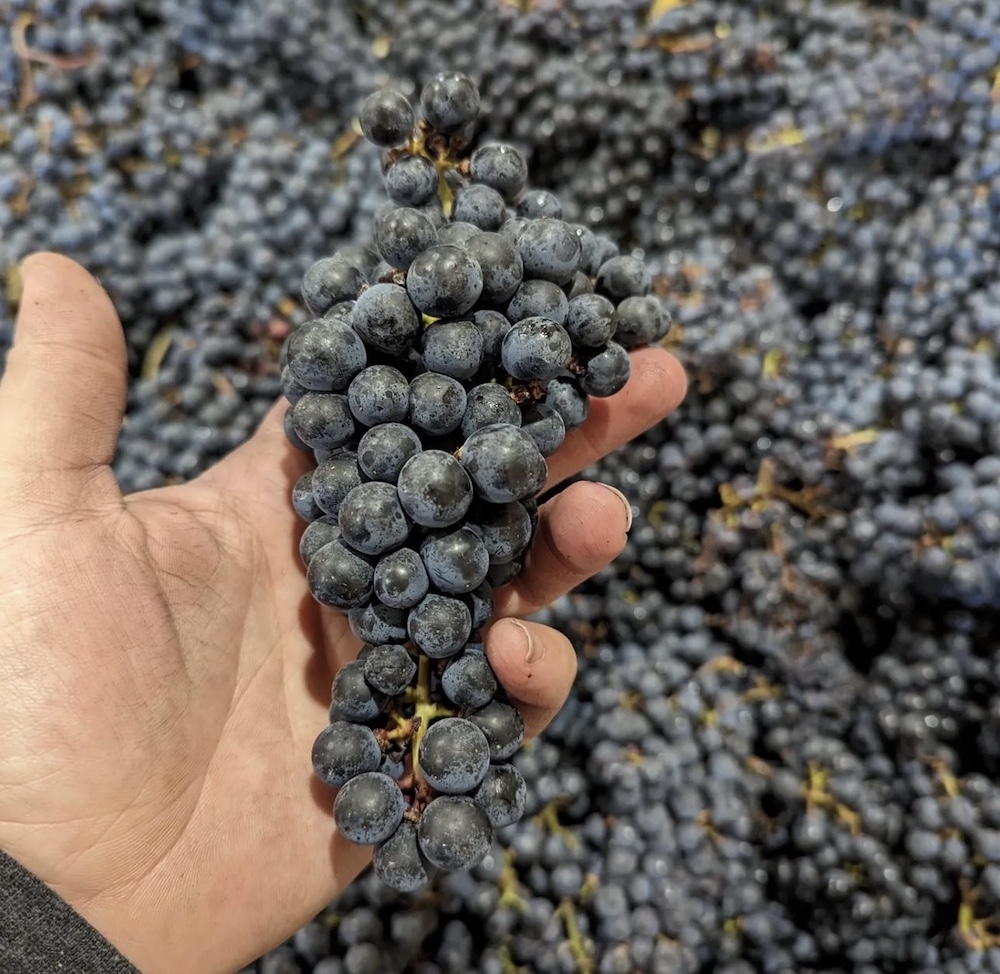
Prior to September we removed another 15% of our fruit to compensate for the protracted growing season. Fortunately, the weather through September and October was ideal giving us lots of sunshine and warmth. The first fruit was picked Sept. 28 and we completed harvest on Nov. 3 with our Cabernet Sauvignon and Syrah.
Fruit quality was excellent, which I attribute to the extra time we spent on canopy management. Acids will be high, and I am curious to follow tannin development in a year like this. As the saying goes “wine is made in the vineyard” and this year was a perfect example of that.
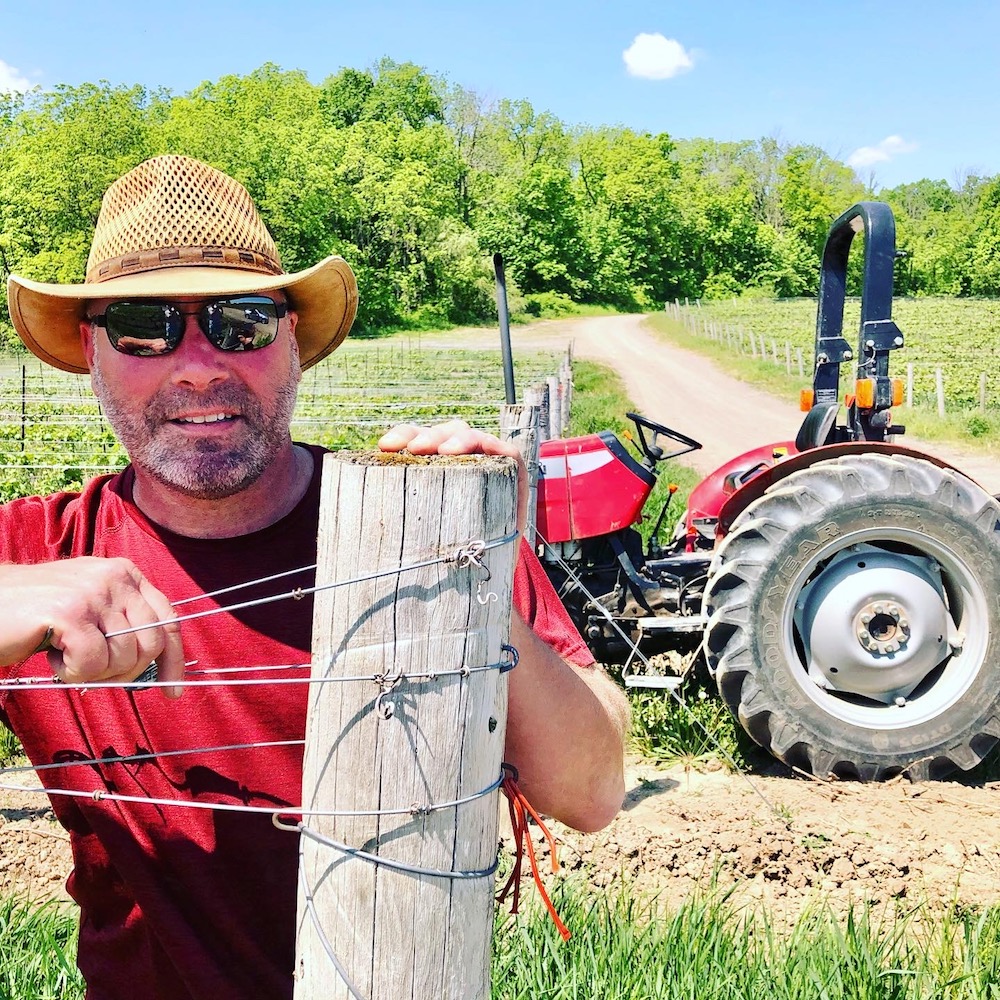
![]() Brian Schmidt, winemaker, Vineland Estates Winery,
Brian Schmidt, winemaker, Vineland Estates Winery,
Twenty Mile Bench
It was the best of times, it was the worst of times, then it was the best of times again.
If the 2023 vintage was a roller coaster, it would be the Kingda Ka at Six Flags in New Jersey (my quick google search says it is the most extreme). The extremes (both climatic and emotional) we endured during the 2023 vintage were daunting indeed.
It was a beautiful start with an early spring seeing our buds emerge at the beginning of May. We had a few concerns about spring frosts during the full moon. My father would always tell me: “Pay attention to the full moon in May. If the buds have emerged, you can be sure the temp will drop just before sunrise the morning after a full moon.” He has never been wrong … just how cold it gets is the concern. As it happened, the full moon in May 2023 was May 5 (coincidentally, that would have been my parents’ 62nd anniversary) and it did get cold but not so cold as to harm the soon to be emerging buds.
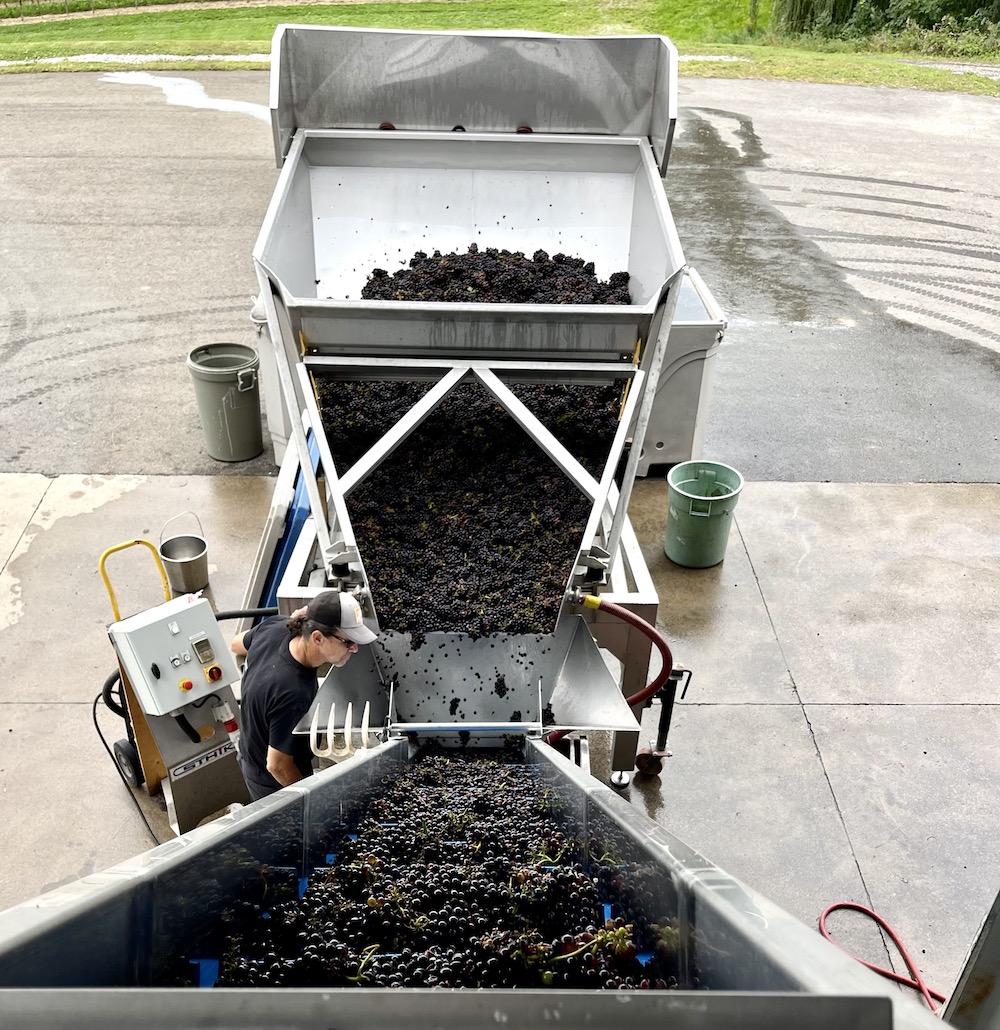
By the end of May, all was safe, and we were looking forward to a spectacular vintage. The first week of June, the soil was warm and dry. June 9, we began planting a new block of Gamay. We watered the vines by hand, and I was wishing for rain. perhaps I wished a little too hard. We hand watered the newly planted vines once. June 12, the rain started, and we didn’t hand water again. Fast forward to Sept. 7, the rain finally stopped. Of course, there were a few sunny, warm days in between but essentially, for three months, our entire work schedule in the vineyard revolved around these questions:
How much did it rain last night? How long before it rains again? How deep of a rut will the tractor tire make in the saturated soil. Why did we even come to work today? Then, Sept. 7, our own “greatest comeback story ever” started to write itself.
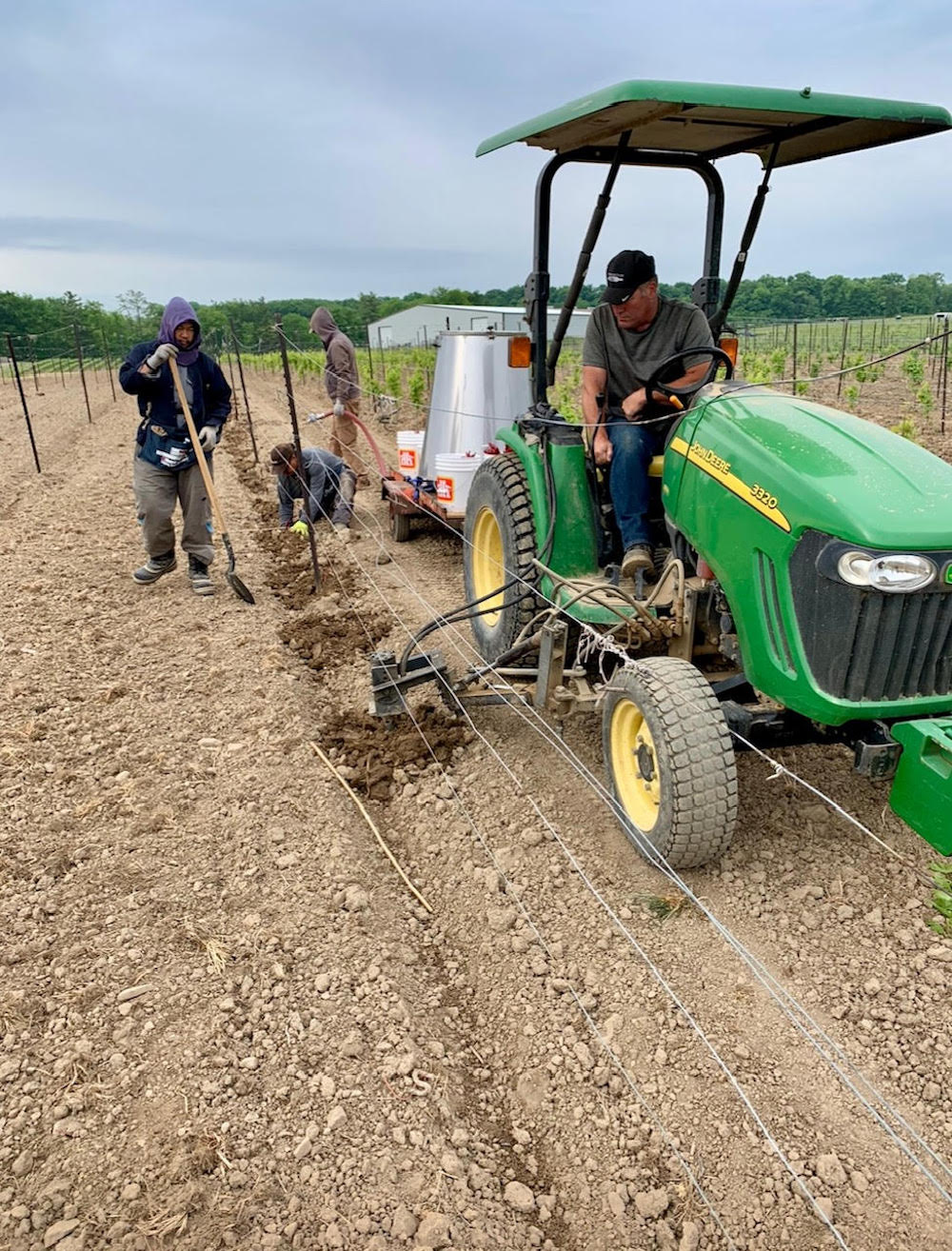
The sun broke through the clouds and waterlogged soil began to warm up, the leaves on our vines dried and the berries continued their delayed journey through veraison. We had no idea how long this weather would hold but we were bound and determined to take full advantage of it. The beautiful weather lasted for three months.
The first fruit to land on the crush pad was on Sept. 13, our very rare block of Pinot Meunier was destined to become sparkling wine.
I could share dozens of moments about the harvest of 2023. Suffice to say it was LONG. The last fruit arrived on our crush pad at the end of November, just when JL Grioux was starting his harvest at Stratus (I’m kidding…. kind of.)
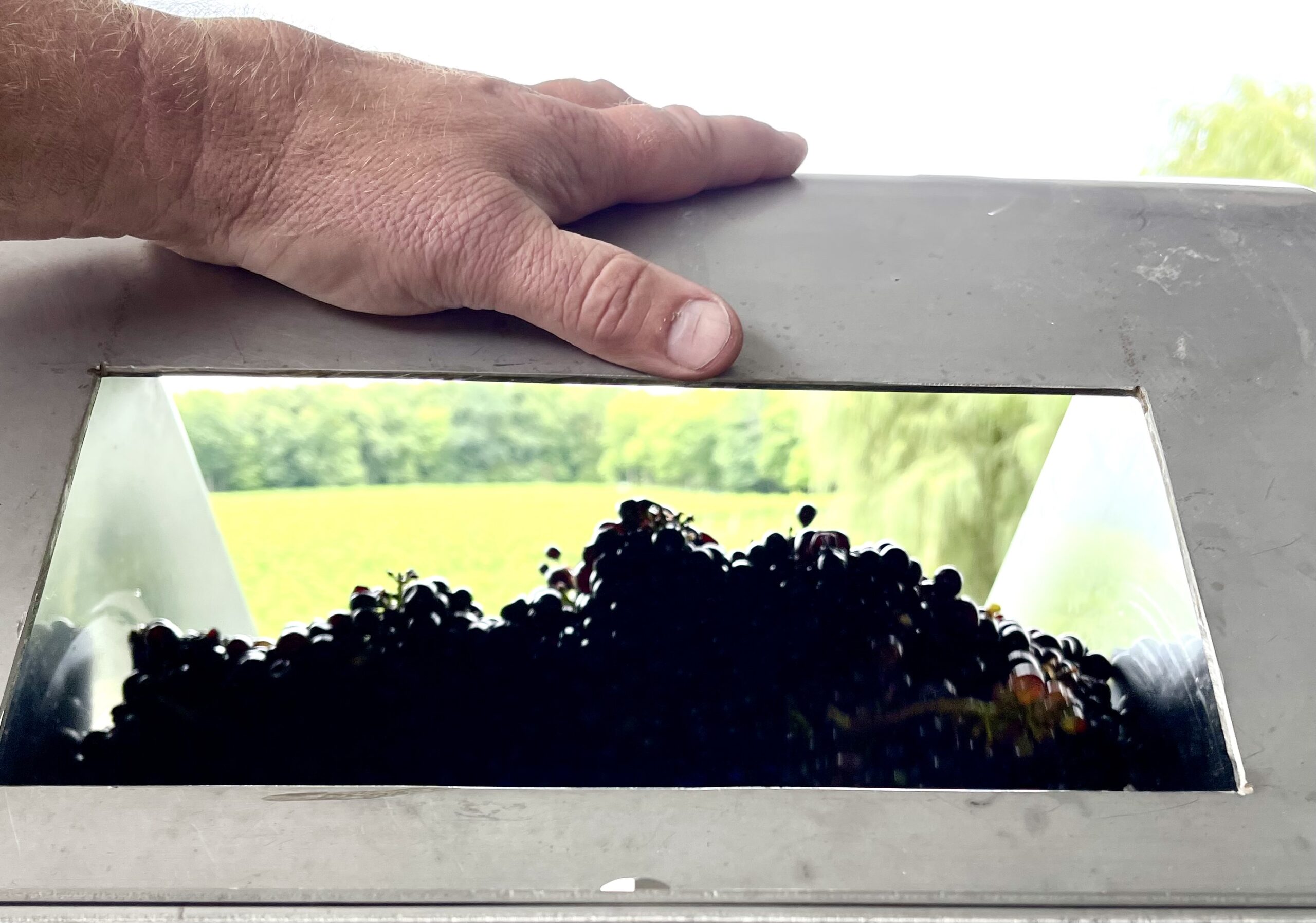
We can say that the 2023 vintage was a challenge for sure. The fruit from 2023 demanded patience, hard work, and precision timing, and finally we tossed into the mix a healthy dose of good luck.
The fruit has now evolved into its higher form and these wines are a reminder that Mother Nature is ultimately the winemaker and we who call ourselves winemakers are just interpreters hoping to translate the story of each vintage into your glass.
Thomas Bachelder, winemaker/owner,
Bachelder Wine, various sub-appellations
Quality, quantity; great terroir definition! Learning to take a longer view across several seasons! Learning to watch for flavours (with or without brix) as a key element/parameter in picking decisions! Learning not to wait to pick ‘just because you can!’ Wow! What a mad ride!
The 2023 season was characterized by a bit of everything: an early-budding year slowed down by frequent summer rains; fear of fungal diseases that kept viticulturalists on their tractors whenever the fields dried up enough to permit entry; scorching heat at some times, suggesting potential uneven ripening; fog/smoke for three weeks due to northern Canadian forest fires while we experienced record rains down south; a small crop in NOTL; a larger crop on the Bench; a harvest that could be hung ‘for as long as one liked’ – without breaking down. An early start and the latest finish in a long while. Mad, simply mad.
After a short harvest in 2022, particularly in Niagara-on-the-Lake (and all flatter vineyards everywhere), where a cold winter event brought not only bud death but vine death) we were all hoping for a larger crop in 2023. Largely, we got it.
Harvest 2023
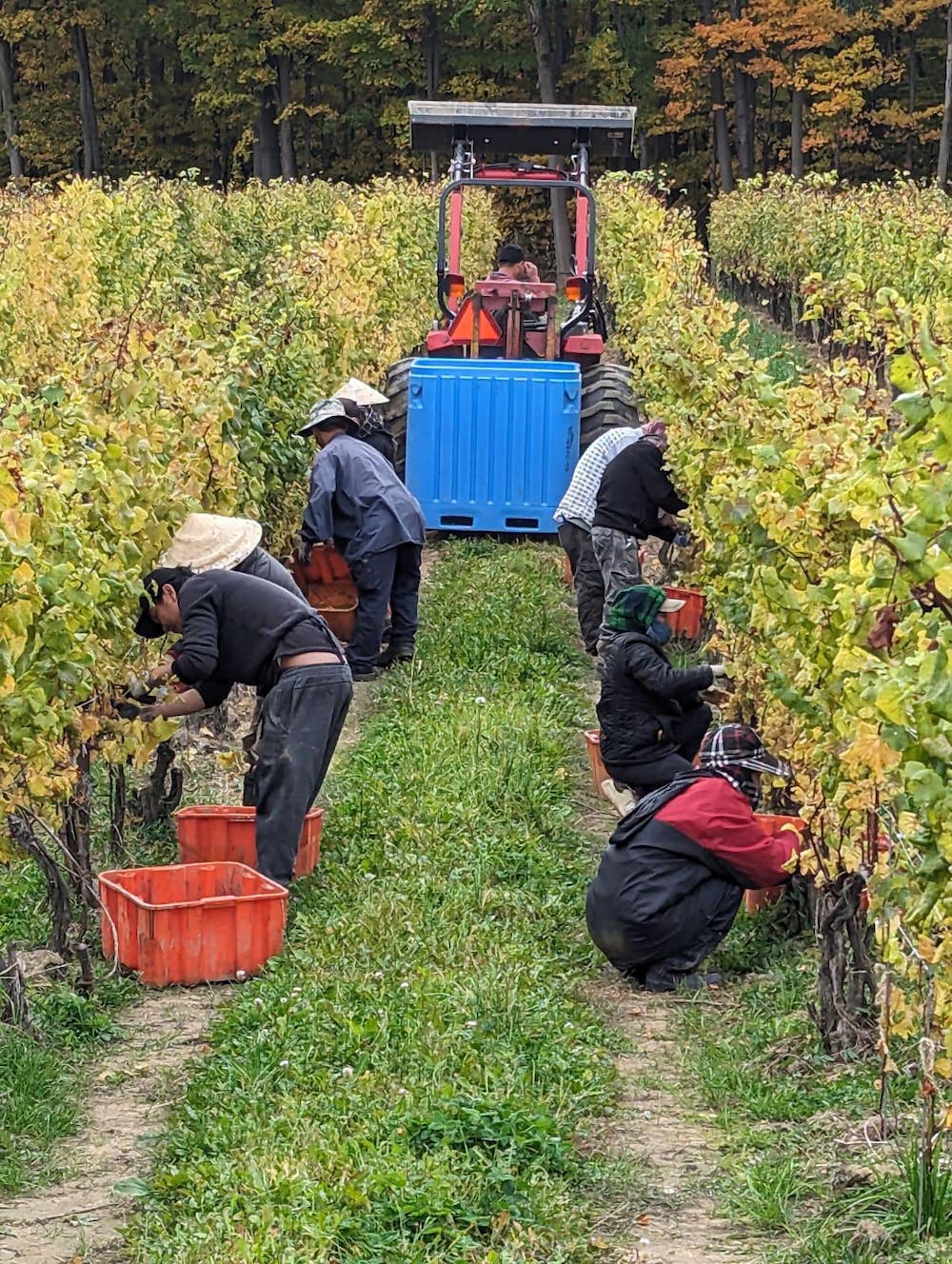
Perhaps because of the large crop, perhaps because of the smoke cover, perhaps the frequent rain in the summer or the humidity in between the photosynthesis-stalling heat waves, we found ourselves waiting for minimum brix (sugar levels) while the grapes were tasting better and better, and the acids were coming down to near-perfect levels.
We all had great fears of the fungal loads that must have been on the grape bunches after such an intermittently-wet summer … so, Bachelder jumped on the Pinot harvest as soon as we saw the ripe flavours, tannins and brown grape seeds were there — and the skins still clean — with no hint of sour rot, botrytis, splitting or other rots.
Pinot Noir: Did we pick too soon? I think not. The perfumes are ethereal, the tannins ripe, and the colours classically Pinot Noir. For the Burgundian red grape, this is a great year in quantity and quality. Rarely seen (1999 Burgundy?).
Chardonnay was chiselled, mineral and flavourful: fine but with depth. An amazing year – if you didn’t wait for ‘perfect’ sugar ripeness. If you insisted on higher brix, you got tropical, bland, tired flavours in the bargain. One has to pick when the seeds are ripe and the flavour is there, even if the sugar is low – that is the plant telling you it is ‘done.’
Gamay Noir was a dream: dark colours, rich flavours, soft tannins, a WOW year for terroir definition, for the best Niagara terroirs where this grape is planted.
Conclusion and vintage rating
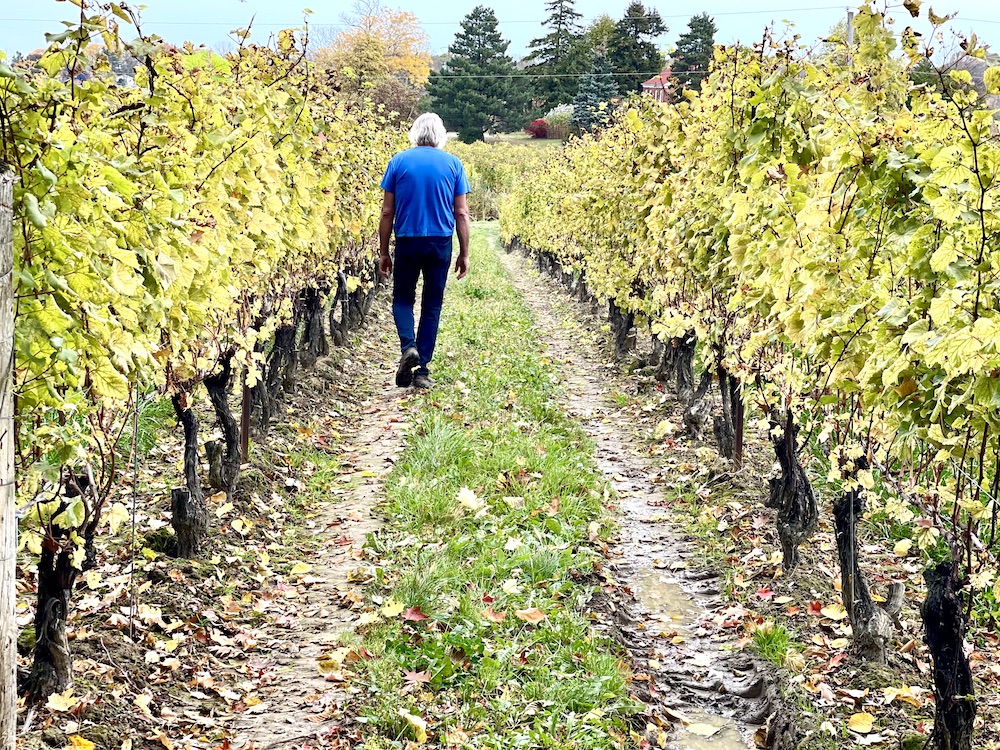
A vintage to remember and cherish, once bottled and in the cellar. All in all, for the Burgundian varieties, 2023 will equal great, ripe wines, excitingly-fresh-fruited wines with depth that will age on their freshness, dry extract, and acidity. Alcohols will be 12%-ish, with the odd wine reaching 13%.
Could we have waited Longer to pick?
Here and there across the peninsula, late-picked vineyards (even with Pinot Noir) held the fruit well, it didn’t disintegrate or rot. So surprising. I have had occasion to taste these late-harvested wines in other cellars on occasion, and the wines are solid, clean but the flavours are overripe. Lesson learned: you cannot hang fruit just because you want to, because the nights are cool, the days are dry and not too hot … the fruit still loses its freshness and tension. Settle for a little less alcohol.
Which grapes are best for Niagara?
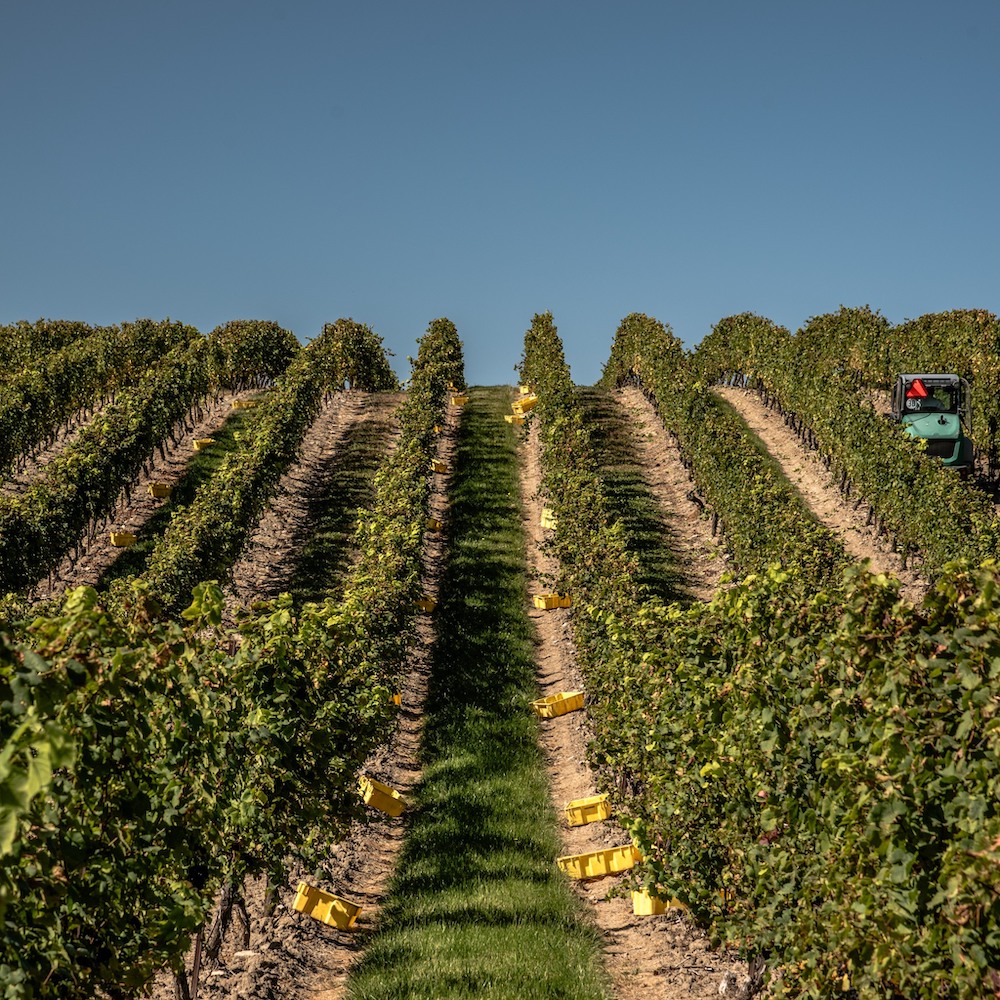
The lessons of which grape varieties sing in Niagara was proved by the winter of 2022. By 2023’s harvest, Gamay Noir, Chardonnay, and Pinot Noir* were all harvested in good quantity and delicious quality — reminding us of yet another reason why we grow these grapes. Gamay Noir, in particular, really bounced back, gave us a good crop, proving yet again its cold-hardiness and fecundity.
A longer view: an ‘uncomfortable cycle’
So often, in Niagara, a winterkill year gives us a short, concentrated crop (2014, 2015, 2020, 2022) and it is followed by an abundant, late year that weakens the vine (as she tries to ripen all her babies), preventing the plant from hardening off … and then we experience a deep cold event the following winter that grills some dormant buds, thus reducing the potential crop of the next season: it is an ‘uncomfortable cycle.’
2023 was just that – but the plants did seem to harden off. Speaking here at the end of February 2024 – a leap year — we have had an extremely mild winter. Will we make it through March without a sub -18 C night? Time will tell. Mary and I first arrived from Oregon with our little girls in tow in March 2003 – and there was a devastating, crop-reducing deep freeze at the end of March that year.
*Riesling and Cabernet Franc also performed well, but Bachelder sticks to the Burgundian grape types so we can spend more time mining terroir, and less time merely doing varietal wines.
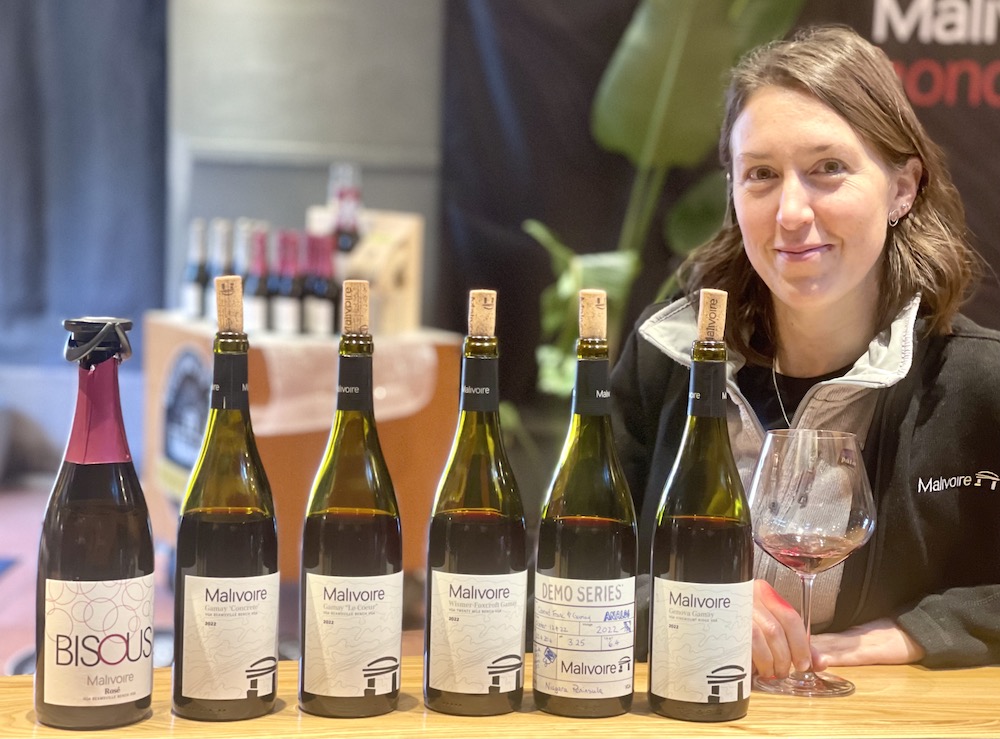
Elisa Mazzi, winemaker, Malivoire Wine Company,
Beamsville Bench
I couldn’t be more agreed with your sentence: another interesting harvest in Ontario … but aren’t they all?
The weather as usual played a crucial role in the 2023 vintage: a mild winter followed by a warm spring had us hoping for an early and ‘easy’ harvest. However, the summer brought a short period of heatwaves and more rain and cool days than we would have liked. Luckily, September was dry and reasonably warm for Niagara, and gave us an extended harvest until mid-November (the harvest that never ends).
Even with the concern at the beginning of September for disease pressure, we got lucky for the rest of the month. The grapes took advantage of the extended hang time, allowing aromas and flavors to fully develop during the fall. The grapes that we harvested have fantastic phenolic maturation, leading to wines with great intensity. Sugars weren’t as high as some in the previous year, but the balance with acid and pH was a good compromise.
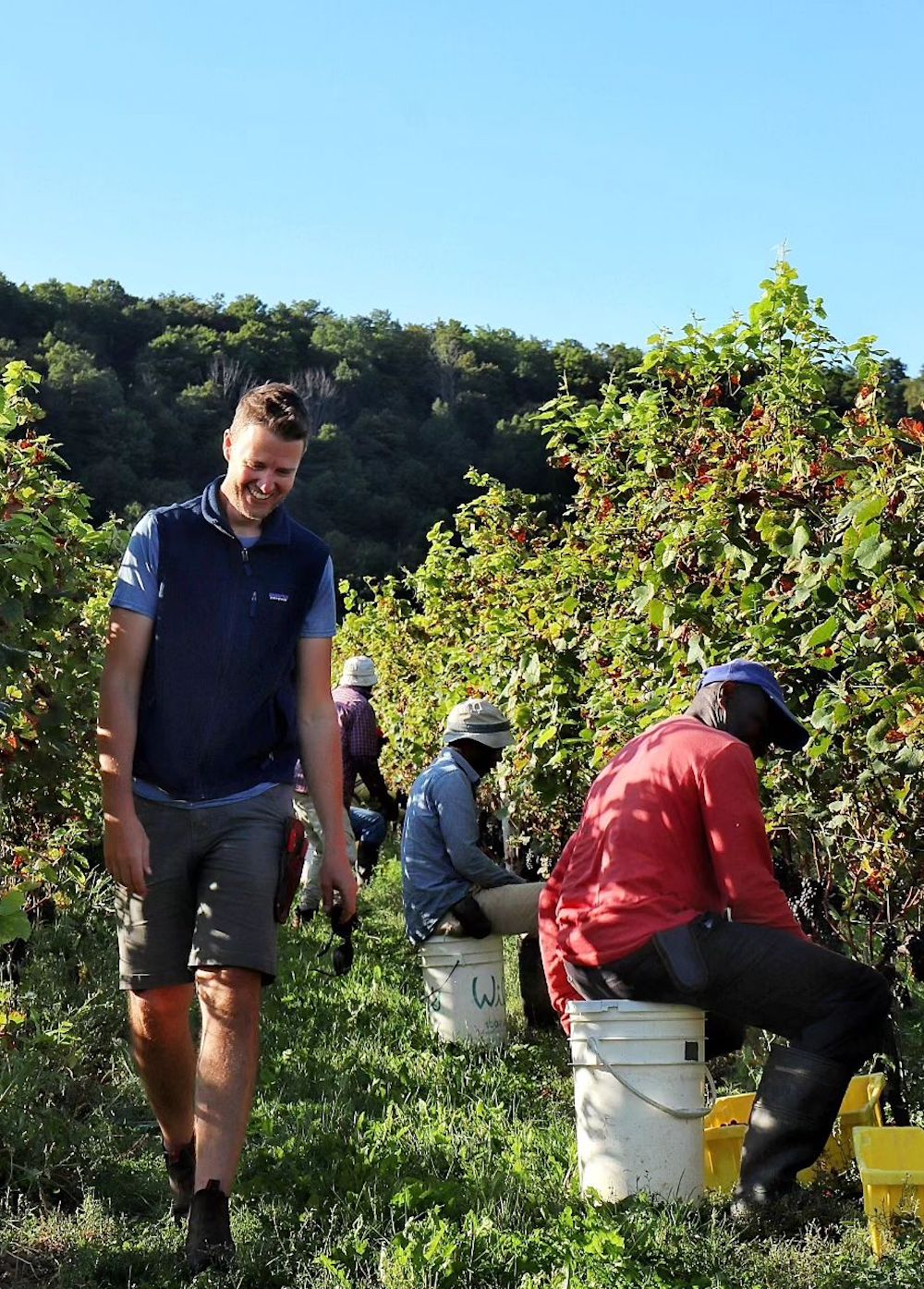
Chardonnay grapes had almost a full extra month on the vines to ripen with vibrant fruit flavours and depth. I’m expecting well-balanced wines with great acidity and structure.
The Pinot Noirs have dark, deep flavours. Despite the vineyard challenges, the quality was stunning, and the wines already show great aromas, red berry fruits and great texture.
Gamay as usual had an excellent season, showing once again as a great staple for this region. 2023 shows great balance with acidity and well-integrated tannin, with a bit of peppery notes.
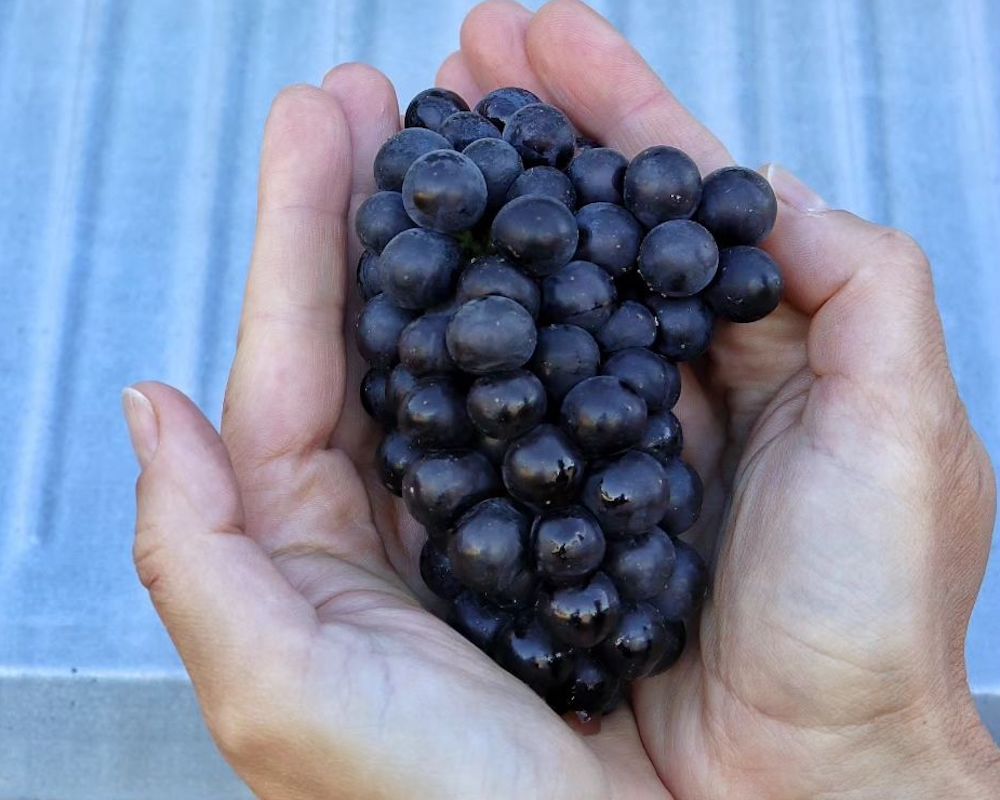
To end with Cabernet Franc, that had the benefitted most from the extended season, resulting in ripe and fully body wines with great aging potential.
To sum up the vintage, the long ripening really helped us out producing wines with depth, intensity, and complexity. If this is the starting point, I think we’ve got a very exciting vintage ahead of us. I’m looking forward to getting to know the wines of 2023 in the coming months (or maybe even years).
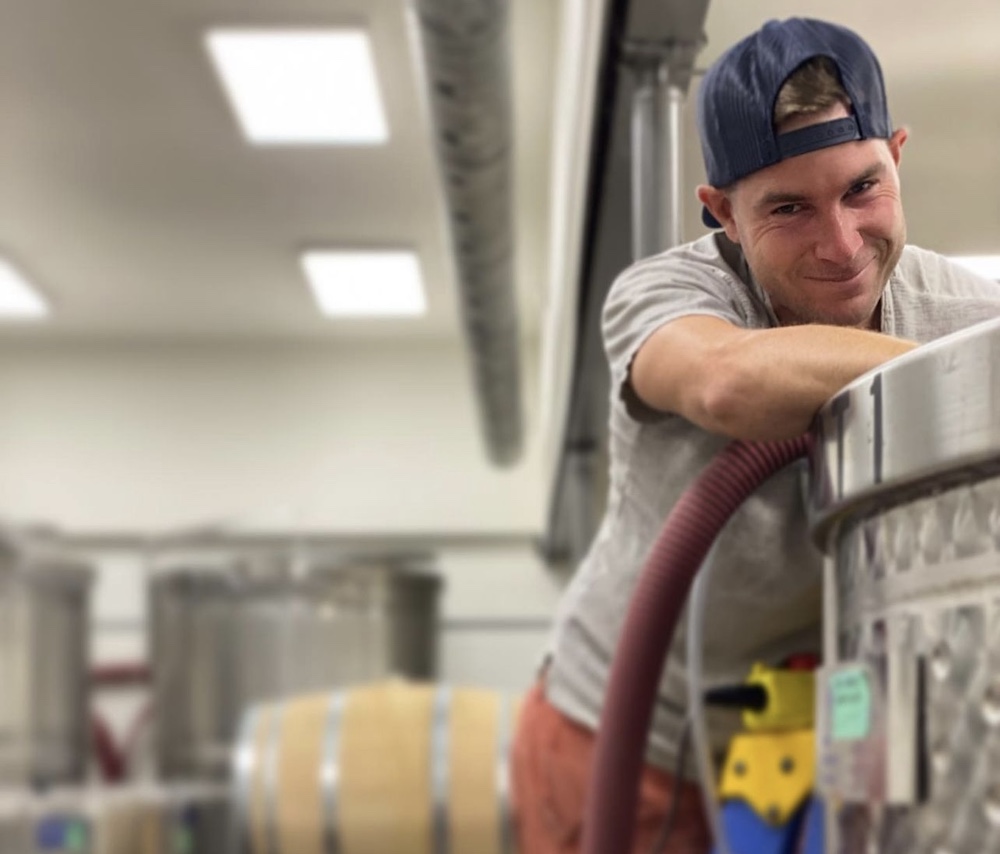
Matt Smith, winemaker, Honsberger Estate Winery,
Creek Shores sub-appellation
No two vintages are the same in Niagara and this one was no different. With it being very cool for most of the summer, the late heat really saved the day.
I am very excited about our Cab Franc from 2023. I am a true believer in a few core varieties that we can produce every year in Niagara. Cab Franc has always been a staple at Honsberger, and after the previous vintage the vines have bounced back tremendously due to good pruning practices.
Our yields were low for our site, cropping about three tonnes per acre. In my opinion, this helped the vines not only bounce back, but focused the vines’ energy on ripening the fruit.
We have two clones at Honsberger, which I picked and fermented separately to try and better understand how the clones perform. They are farmed and cropped identically and picked on the same day. After getting analytics done on the grapes, there was a full brix difference between the two clones. Acids and sugars were right where I wanted them.
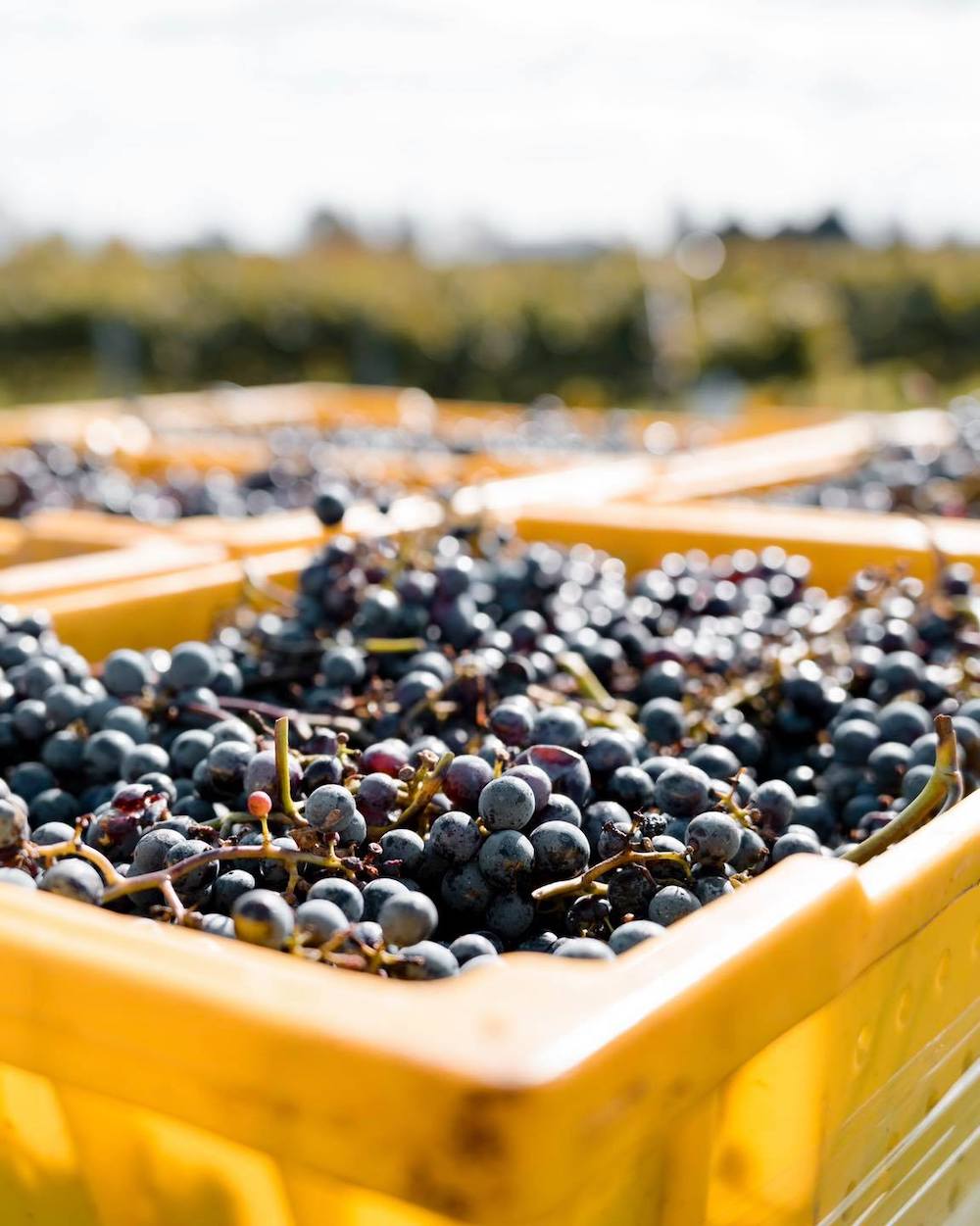
They were fermented wild and kept separate in barrel where they will be kept for approximately 18 months. Cab Franc for me in Niagara is underrated. There is some world class Cab Franc being grown here.
I am also happy with the Sauv Blanc. I think this varietal can be done well in Niagara but is more site specific. We get our Sauvignon Blanc from the Lincoln Lakeshore on the Schuele farm. It is protected from the lake and is generally a cooler site. This block is his young block (25 years old) and his old block is something like 30 years old and there’s barely a vine missing. There’s something to be said about that with this more sensitive variety. This wine was stainless fermented and will remain on gross lees until just before bottling. It’s fresh with some tropical tones but also some citrus, and will be a great summer wine. I’m very happy with this wine but I don’t think it can be grown everywhere in Niagara. I think it is a very site-specific variety.
I am also happy to have another Gamay for Honsberger this harvest. This is another core variety that I think has a true place in Niagara, especially on the Bench. It seems that every year we can get Gamay ripe because it’s a relatively early ripening grape and the wines that a lot of wineries are making with Gamay are of high quality. Although it can be like Pinot in the sense that break down can be an issue and over cropping but when well done, we can make really good wines with Gamay.
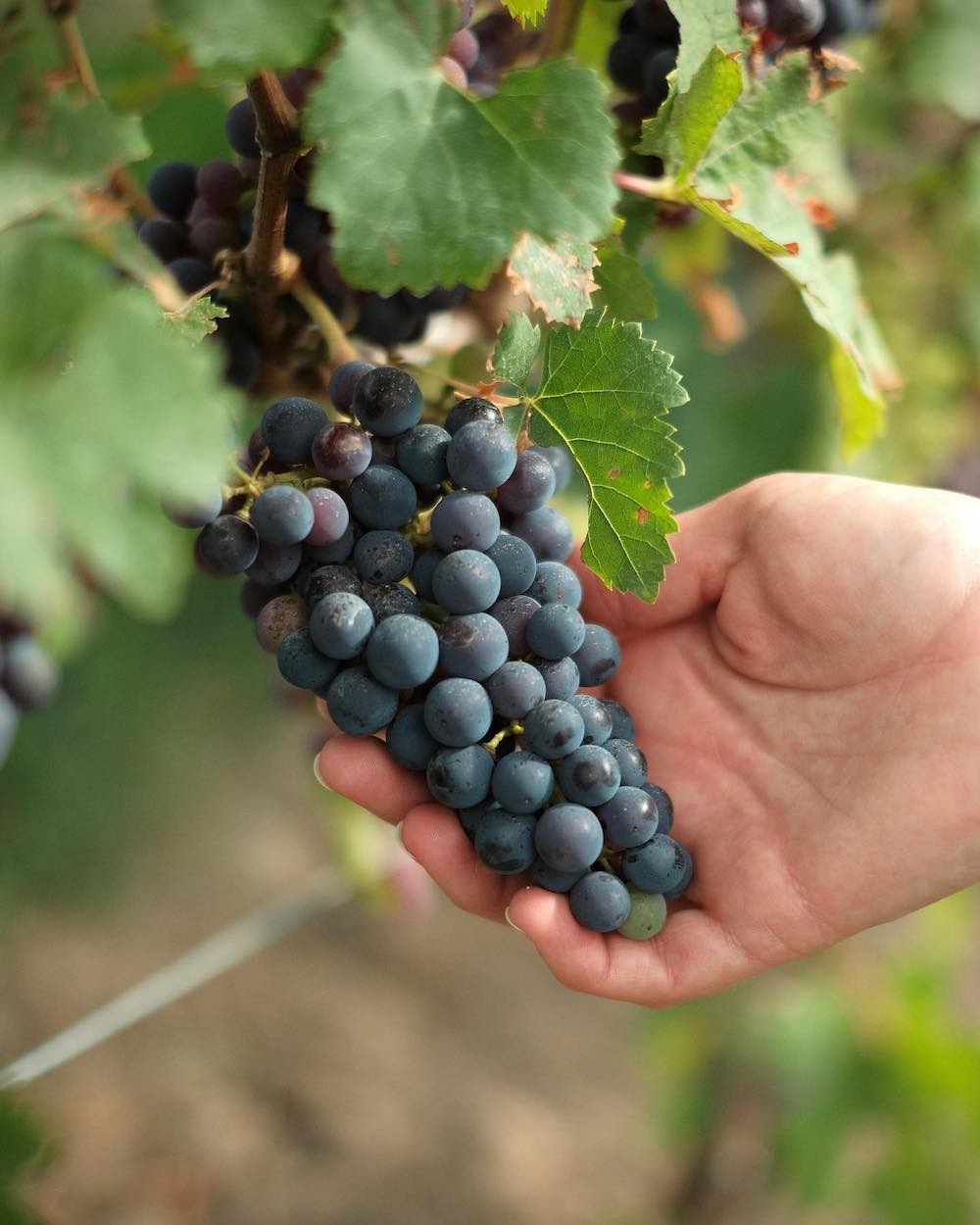
Last but not least, Pinot Noir. With it being an early ripening variety, we can get it ripe every year. For me, the best wines are being produced from the Bench and Vinemount Ridge. Cooler Vinemount sites and Bench sites with limestone soils are producing some exceptional quality. This year was balanced when it came to phenolic ripeness and acid. I am very excited for the Pinots that will be made this year. We made one from Vinemount Ridge this year. Pinot makes beautiful still and sparkling wines, especially from 2023.
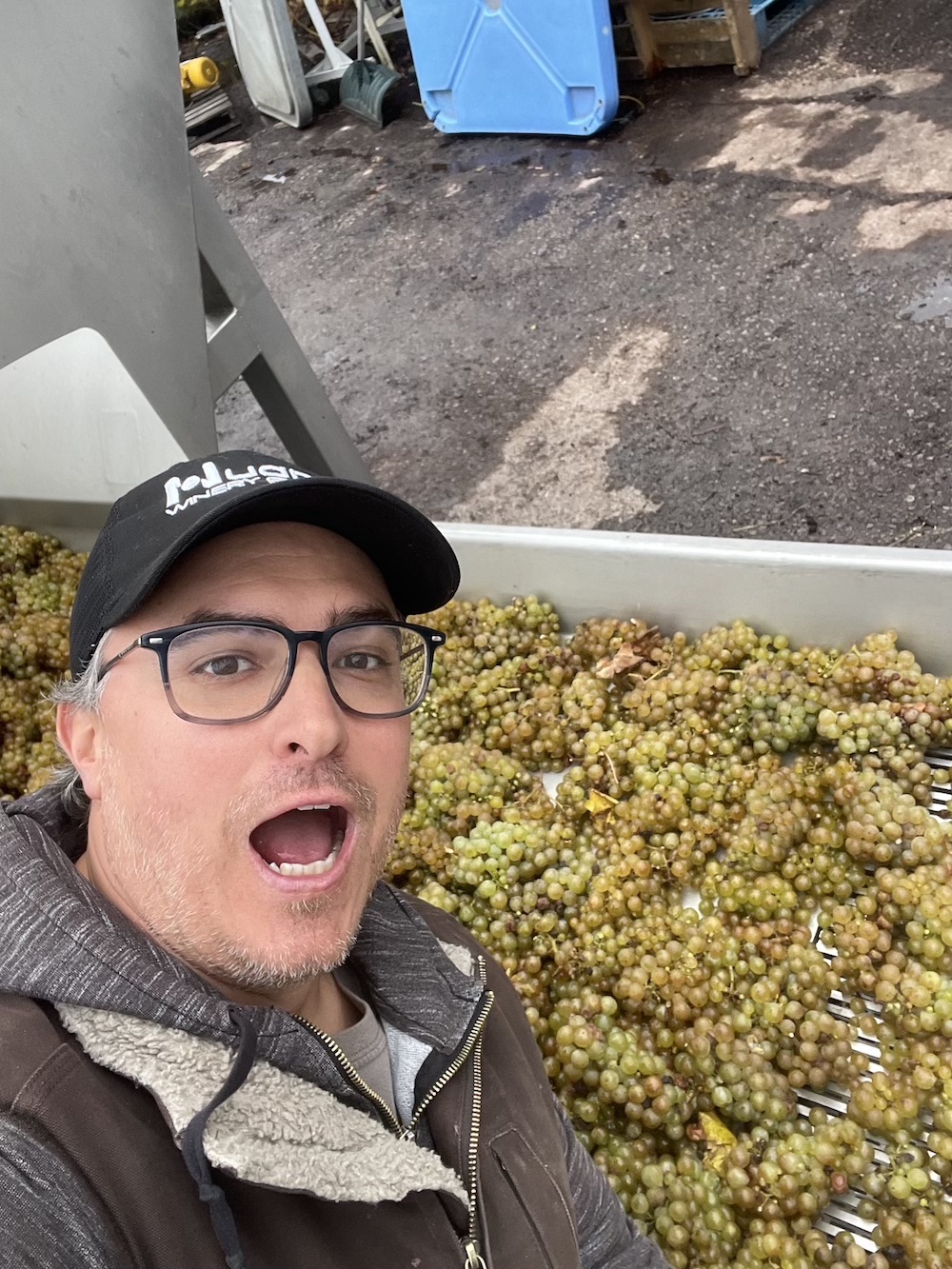
Marc Pistor, Mitchell McCurdy, and Jeff Moote,
winemakers at Collab Beverages Wine and Beverage,
various sub-appellations
The growing season started with an early bud break and a frost risk in May which fortunately was mitigated by most with good sites and/or wind machines. June and July followed with a lot of wet and warm weather that resulted in disease pressure that kept every vineyard manager on edge and in their sprayers a little bit too much.
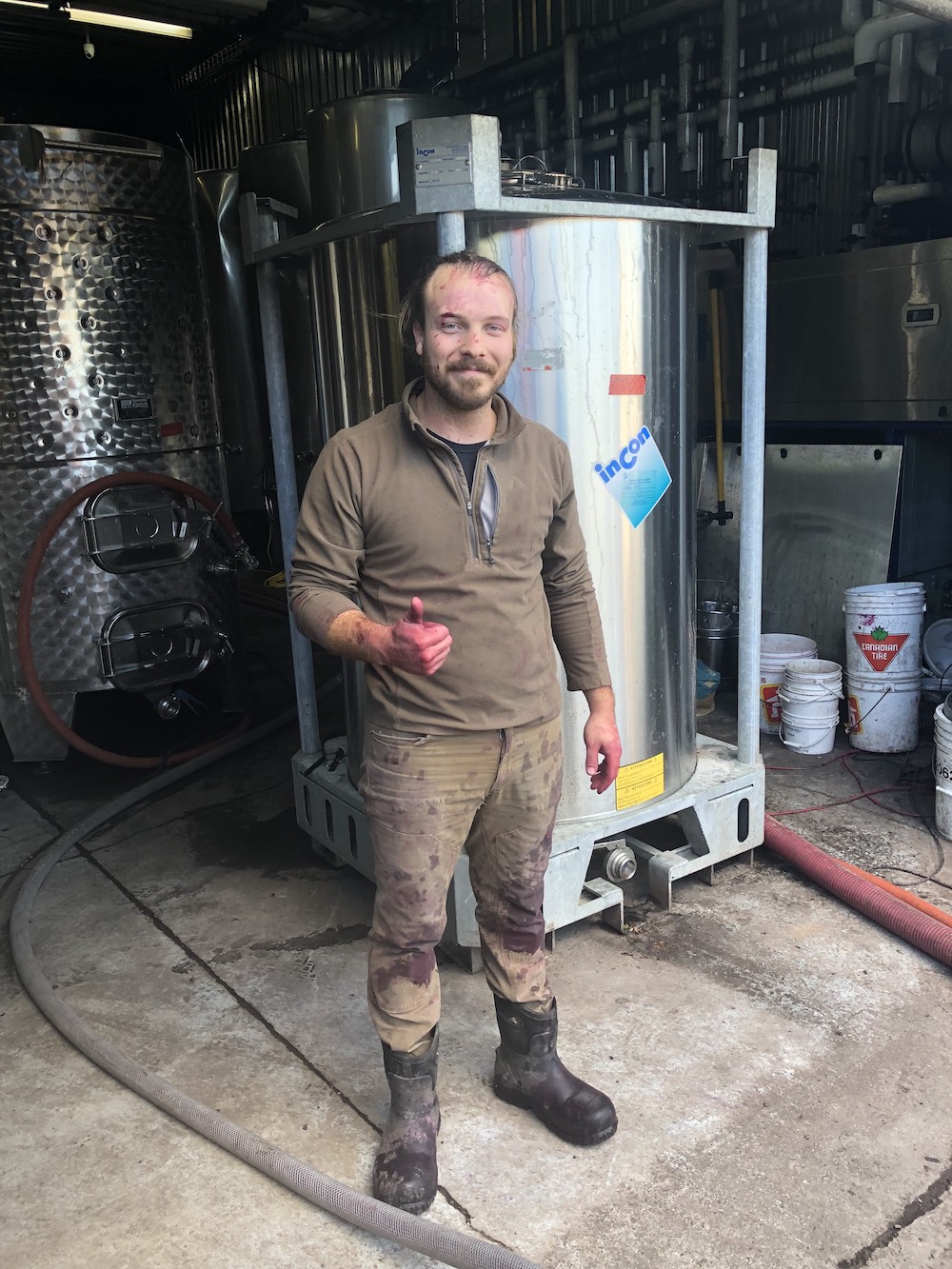
July and August also presented a new challenge for us in Niagara, with wildfire smoke filling the skies reducing our sunlight hours and keeping daytime temperatures well below 30 C in months where we usually accumulate more heat. Heading into veraison, there was a lot of concern for ripening potential for many varieties. The light crop load in 2022 and sunny spring of 2023 gave a high cluster count on the vines, but cluster weights were average to smaller due to the poor weather at flowering. As a result, there was a lot of flexibility for vineyards to manage their crop load with thinning decisions.
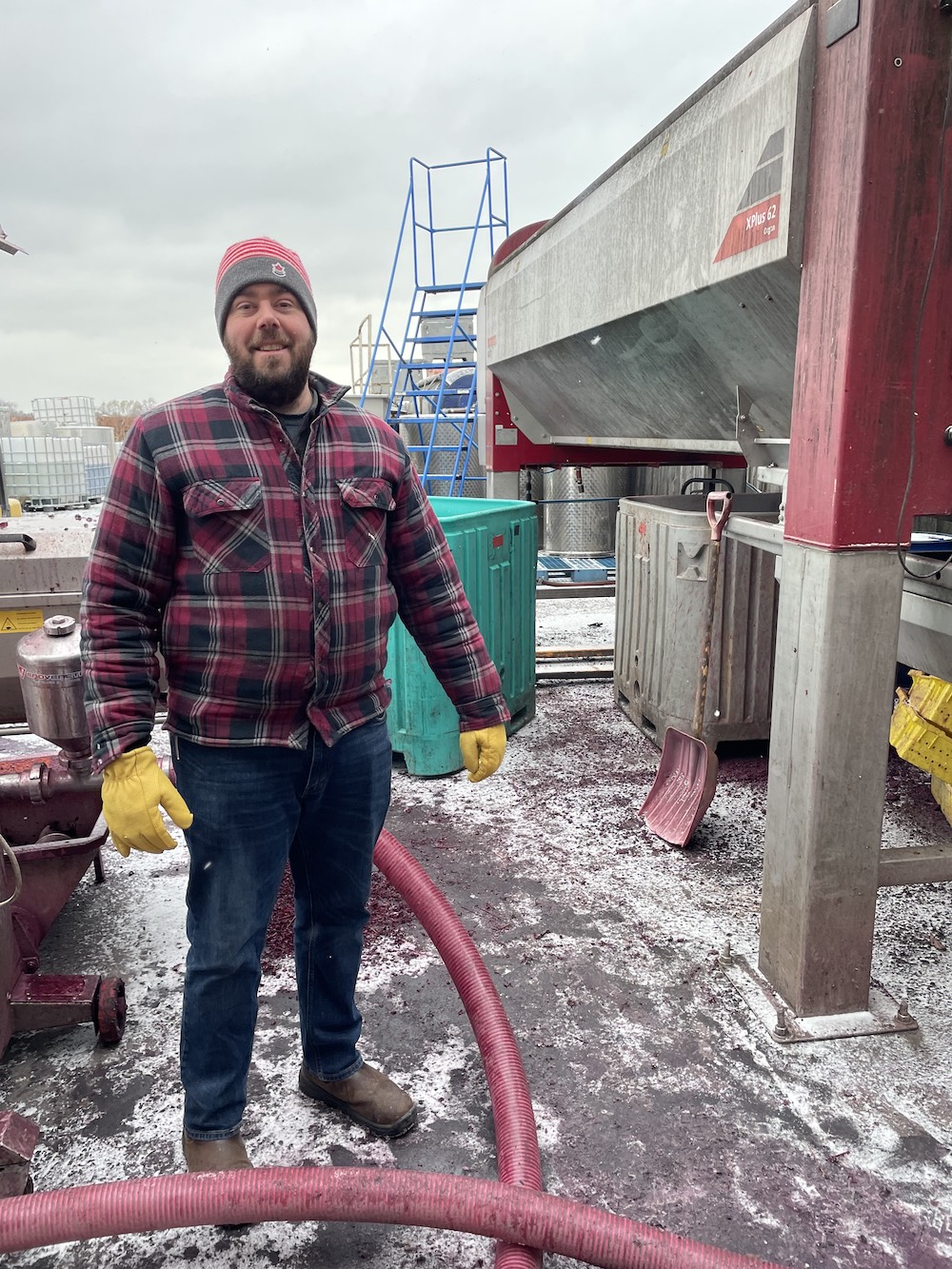
September and October brought the reprieve we needed, with perfect harvest conditions during the critical months that can make or break any vintage. Vineyards and growers that managed the mid-summer disease pressure well and thinned appropriately were able to ripen a healthy crop across every variety across the peninsula. This left winemakers free to make harvest decisions independent of the weather to suit the wine styles desired.
The fruit and resulting wines from the 2023 vintage show very ripe characters, excellent balance, and ability to express site and terroir. A very Niagara vintage if there ever was one.
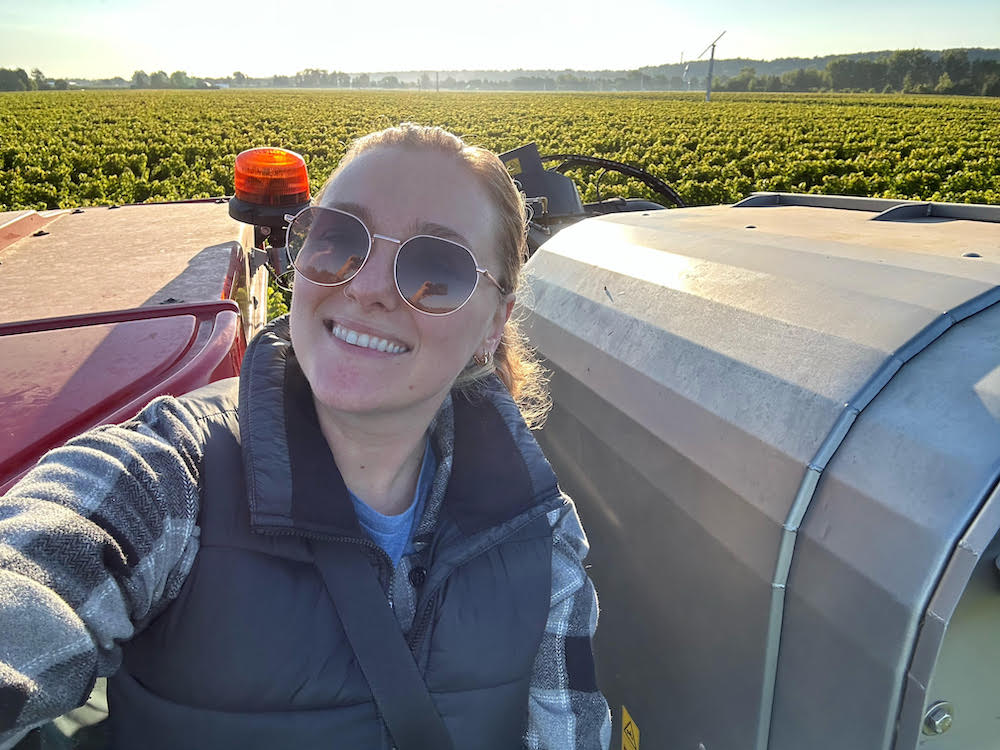
Jessica Solanki, co-owner of Liebling Wines,
various sub-appellations
2023 marked our second vintage for Liebling Wines, however, we have been tending these vineyards much longer than that.
Every growing season brings its own unique learning experience, and as a young grower, I am grateful to work alongside my brother, Aaron, my dad, and other growers who share their knowledge and experience as we collectively learn to adapt to these challenges.
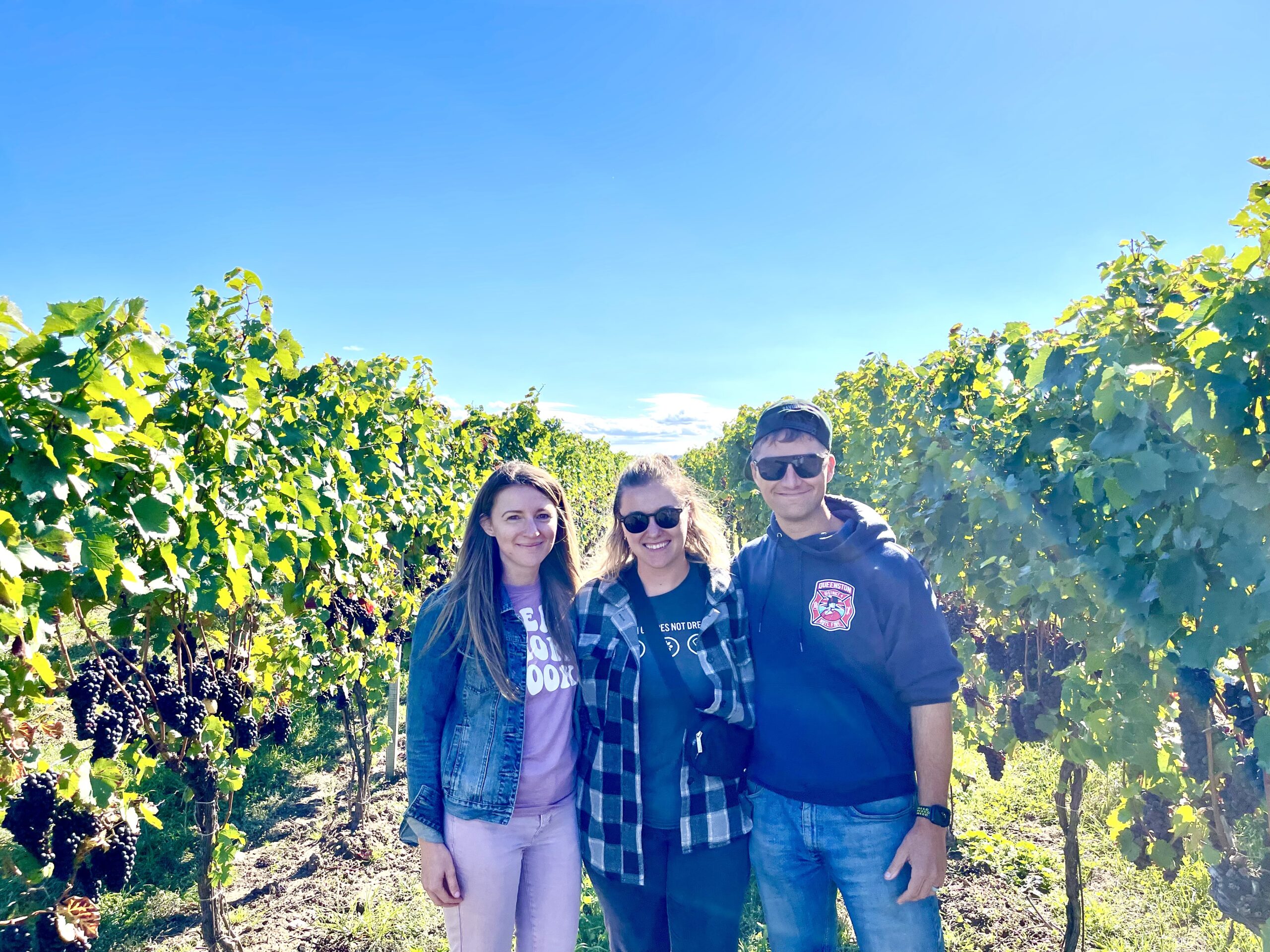
As a vertically integrated virtual winery, our focus is to showcase the four vineyards we work with and to provide quality, clean fruit to our winemaking team. Because of this, Aaron and I experimented early on with crop levels and made early decisions in the vineyard that really benefitted us once the rain came, yielding concentrated flavours and exceptional fruit.
Our harvest was later, except Gamay, which was harvested the same day as in 2022, while our Riesling was picked a month later. The wine, which is still in tank and barrel, is showing beautifully. Standout wines from 2023 include Riesling, Sauvignon Blanc, Gamay, and Cabernet Franc – coincidentally, these are our four wines. ;) Additionally, it was a great year for sparkling, so keep your eyes peeled for bubbly from 2023.
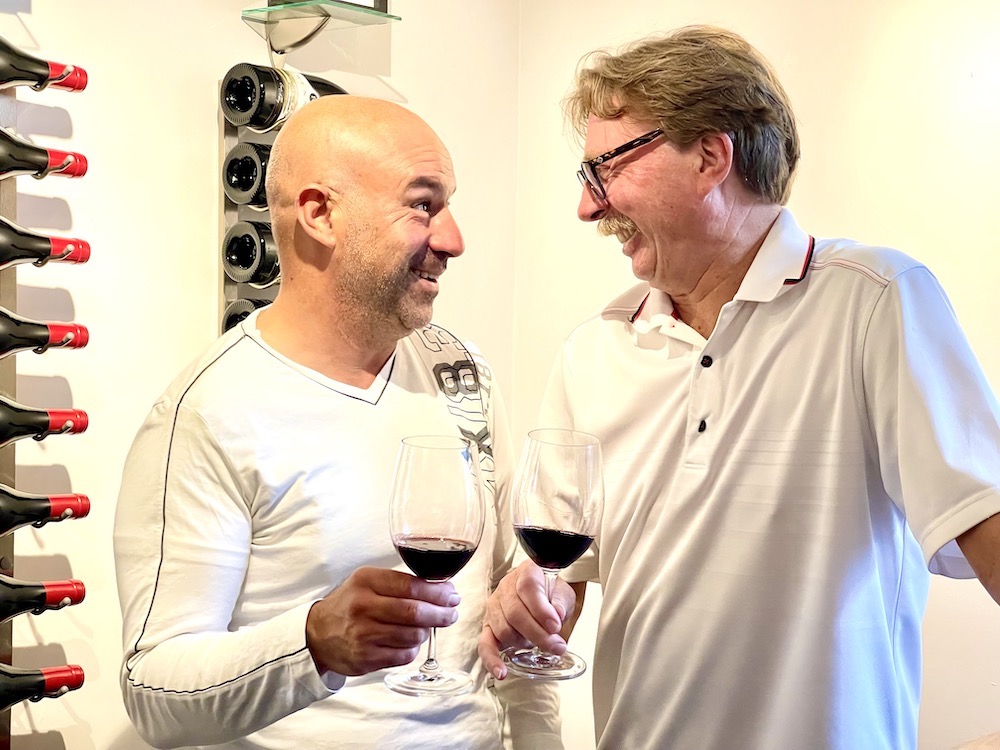
Marco Piccoli, head of winemaking and COO,
Niagara Custom Crush Studio, Vineland
High temperatures experienced in early-April accelerated de-acclimation of grape buds, however, cooler temperatures in late April resulted in near-normal timing for bud break in grapes. A late frost event was experienced on May 17/18 just after bud break that resulted in some foliar and shoot injury in lower lying areas, especially in cultivars with more advanced development (mainly Chardonnay and hybrids). In most cases, secondary buds compensated with minimal impact on crop loads.
Precipitation levels were lower than average during the early part of the growing season.
This, combined with limited snow melt in April, resulted in lower soil moisture levels than typical. May remained dry with only one major rain event recorded, resulting in lower disease pressure pre-bloom.
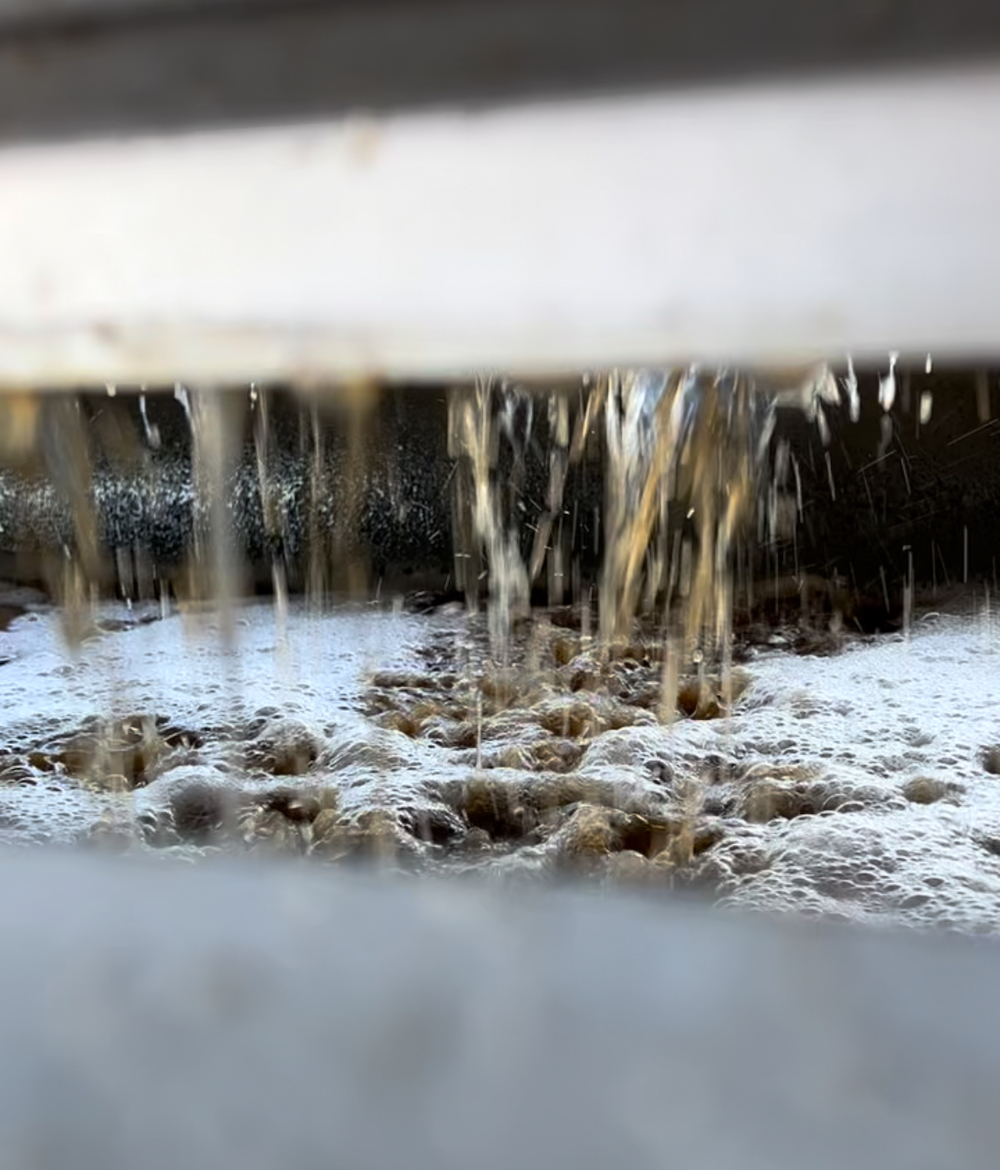
More consistent rain events started mid-June and persisted throughout the end of the month. The early part of July remained relatively dry. Dry springtime conditions reduced diseases pressure and kept the vineyards healthy.
September remained dry with moderate temperatures and lots of sunny days. Even with excellent ripening conditions during September, fruit maturity was slow this season. This was most likely influenced by overcast conditions in July and August. Fruit rot pressure remained low during ripening until mid-October when temperatures dropped, and precipitation increased.
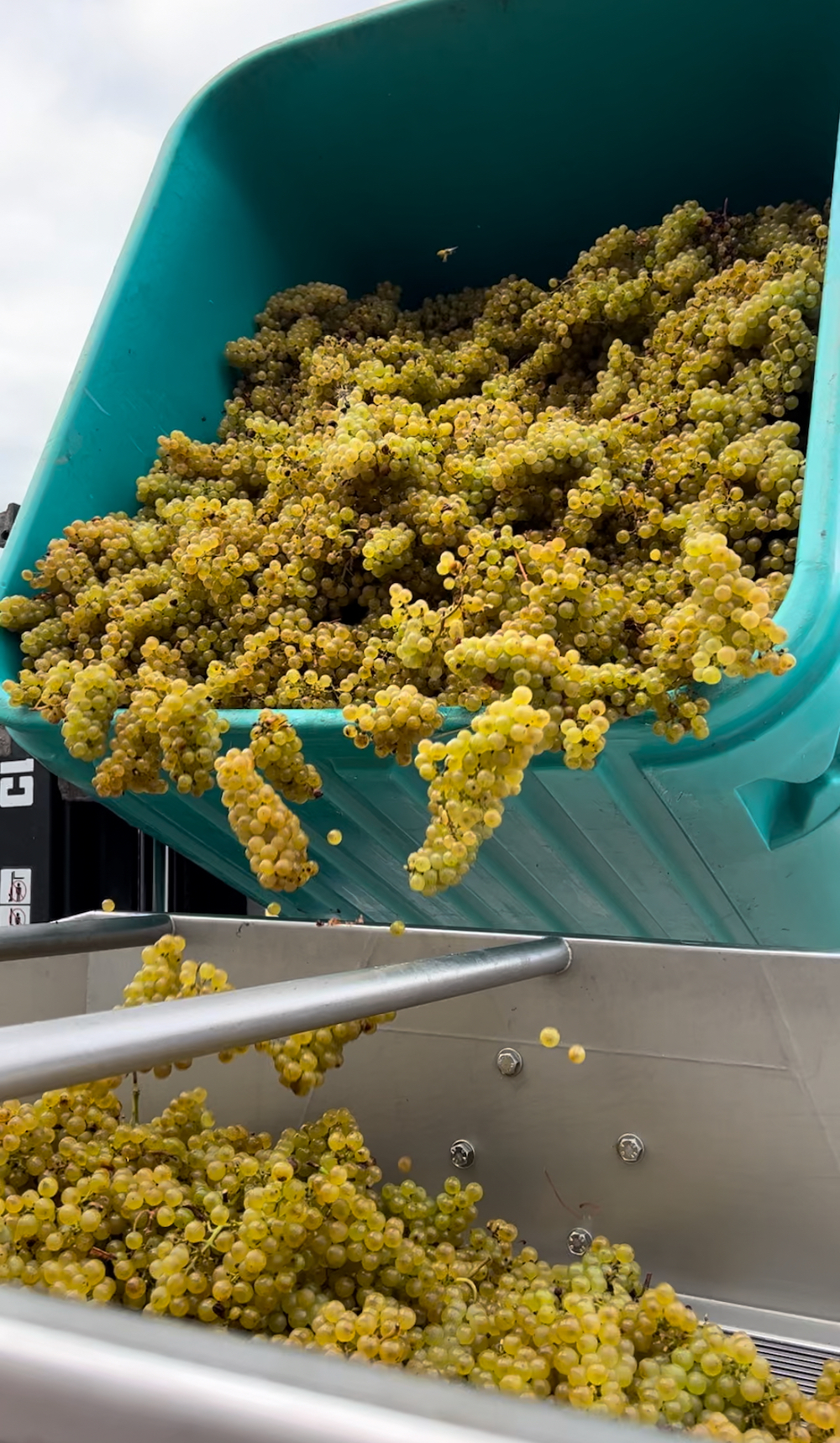
Harvest started in late September and continued well into November. Aromatic whites could show a very strong varietal content (Sauvignon Blanc specifically), as well as Pinot Noir. Good phenolic ripening and good colour content. Cabernet Franc and Merlot also came out strong this vintage, with a good yield, too.
We had a short window to pick icewine in the week of Jan. 15, but the cold temperatures allowed the fruit to freeze properly and deliver another strong icewine harvest in Niagara.
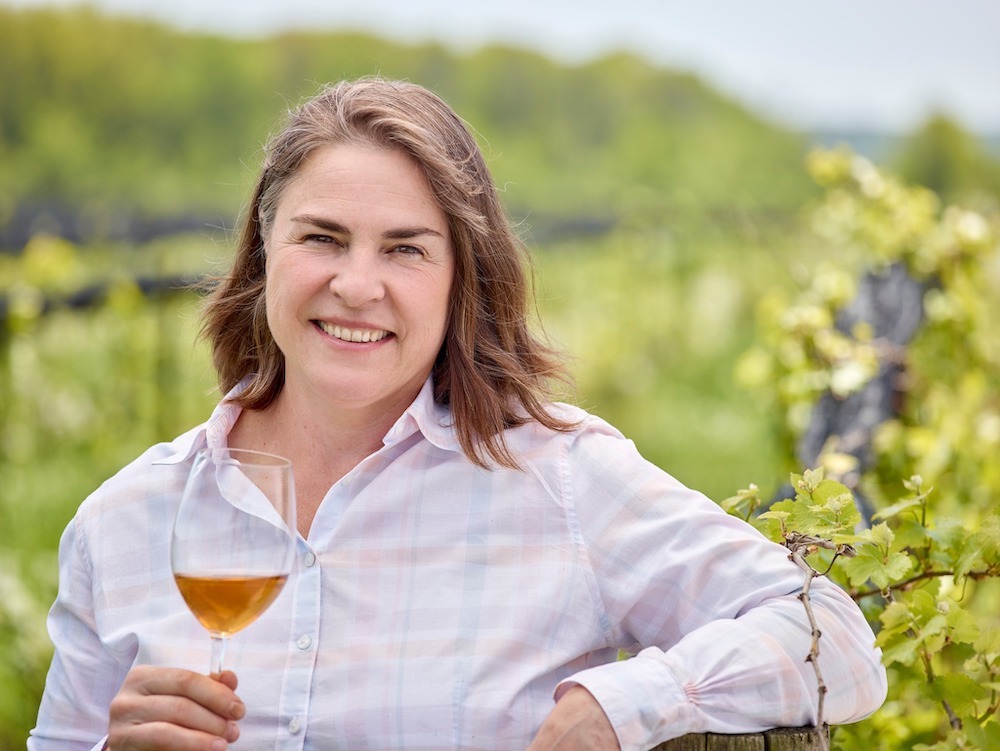
Ann Sperling, consulting winemaker/viticulturist,
Lailey Winery, Stonebridge Estate Vineyard,
and Dobbin Estate Winery, various sub-appellations
2023 was an eventful season. Warming temperatures in early spring gave way to chilling frost on May 18 causing some bud damage to unprotected vineyards in the Four Mile Creek sub-appellation.
The rest of spring was dry and cool with low disease pressure and the rain that fell mid-June was welcome. Flowering took place on a few days on either side of the summer solstice. Sadly, after that, rain, mist, and humidity continued, and we couldn’t turn it off.
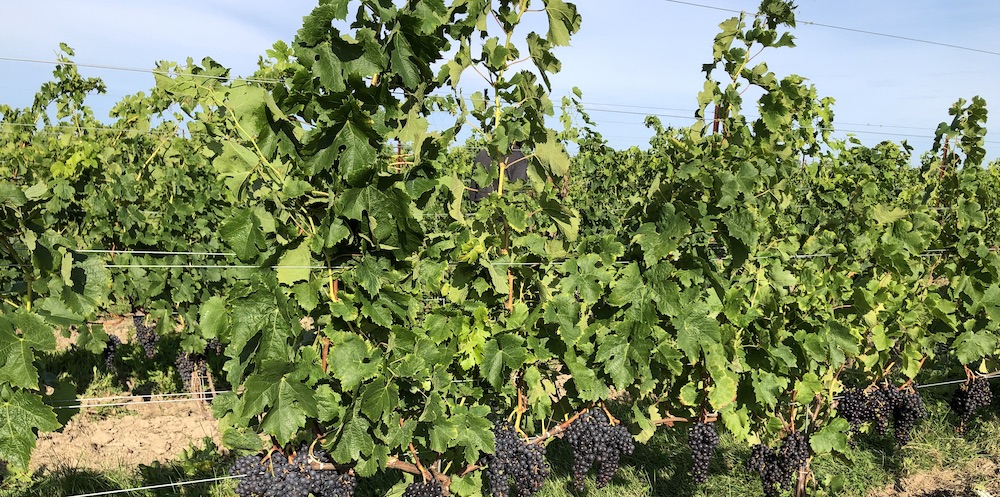
Cool, cloudy, wet, and humid conditions persisted through the summer with smoke adding to low daily light levels. All these elements challenged viticulture in the region. Veraison was slightly delayed, and ripening progressed slowly through fall with Cabs requiring the entire season to ripen.
Patience and not overcropping were key to success. Using all tactics such as green harvesting, hand harvesting with selection and selection on sorting tables were employed. Careful winemaking has resulted in lovely bold wines with good colour, body and texture including active tannins in reds for longevity.
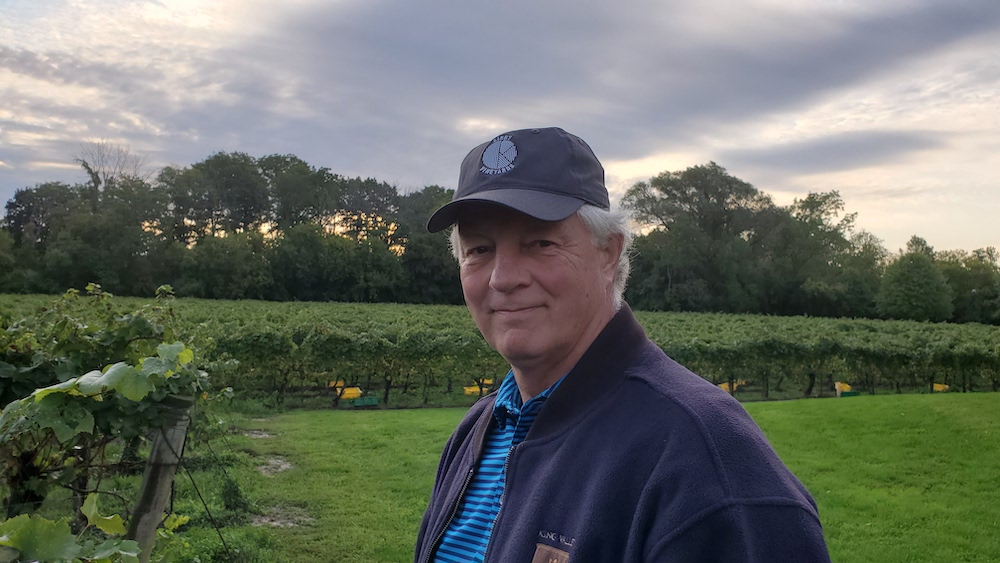
Scott Kirby, proprietor, Kirby Estate Wines,
Niagara Lakeshore sub-appellation
2023 for the Niagara Lakeshore sub-appellation might be characterized as the year of recovery and rebound after witnessing the significant fallout damage to vines and yields experienced in 2022. Spring materialized early after a relatively mild winter but stubbornly remained dry, clear, and cool even into June. Bud break occurred between the second and third week of May.
The continuation of a cool and dry spring morphed into a cool and wet summer by June and into the latter part of August. While this was in many ways helpful to those who had planted/replanted new vines from an irrigation perspective, it provided a high stress environment for powdery and downy mildews both for new and established vines, requiring more frequent and aggressive attention than normal to keep disease at bay.
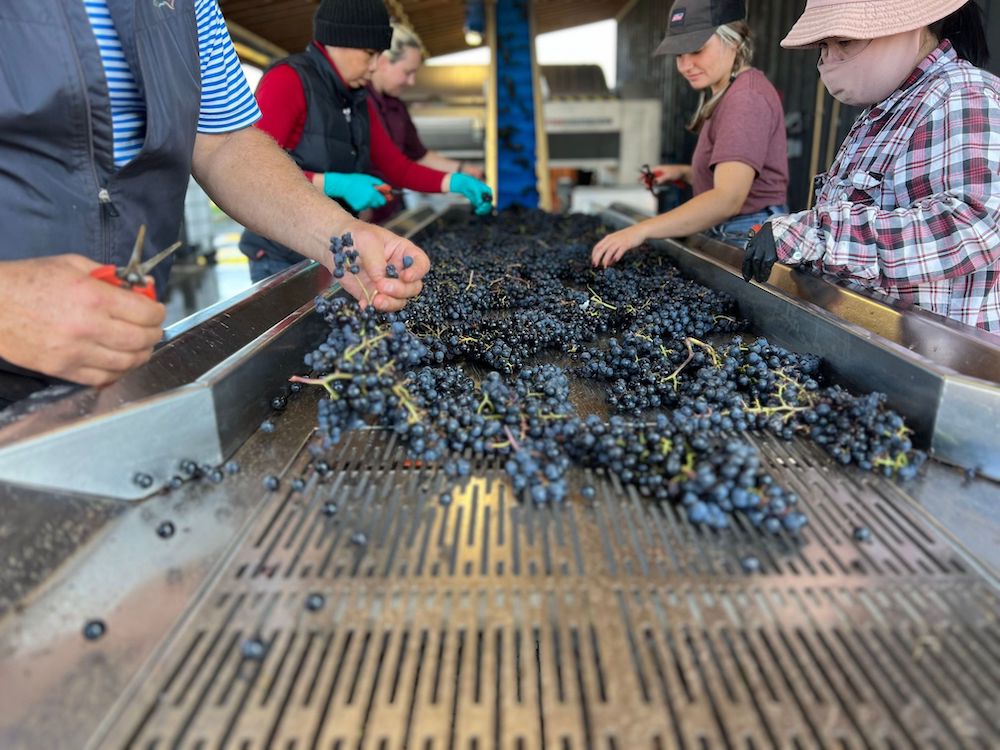
As veraison progressed through mid-August, it slowly gave way to warmer days, and that hitherto missing yellow disc in the sky made an appearance in September and through October. Phenolically, the berries developed nicely and with rich and complex flavours while sugar development remained stubbornly slow until the very last days of the season.
A small percentage of vines exhibited premature exhaustion but not measurably comparable to that of 2022. Fruit yields substantially returned to historic levels and the speculated shortage of the 2023 vinifera product resulting from the winter 21/22 debacle never really materialized.
Threatening weather at the end of October combined with lingering indications of previous season’s vine stress resulted in a completed harvest by month’s end. All varietals had beautifully developed clean fruit bunches with great flavour profiles. The vines were put to bed in reasonable time to ensure hardening and well-deserved recovery. The resulting wines are expected to be full flavoured and elegant in style.
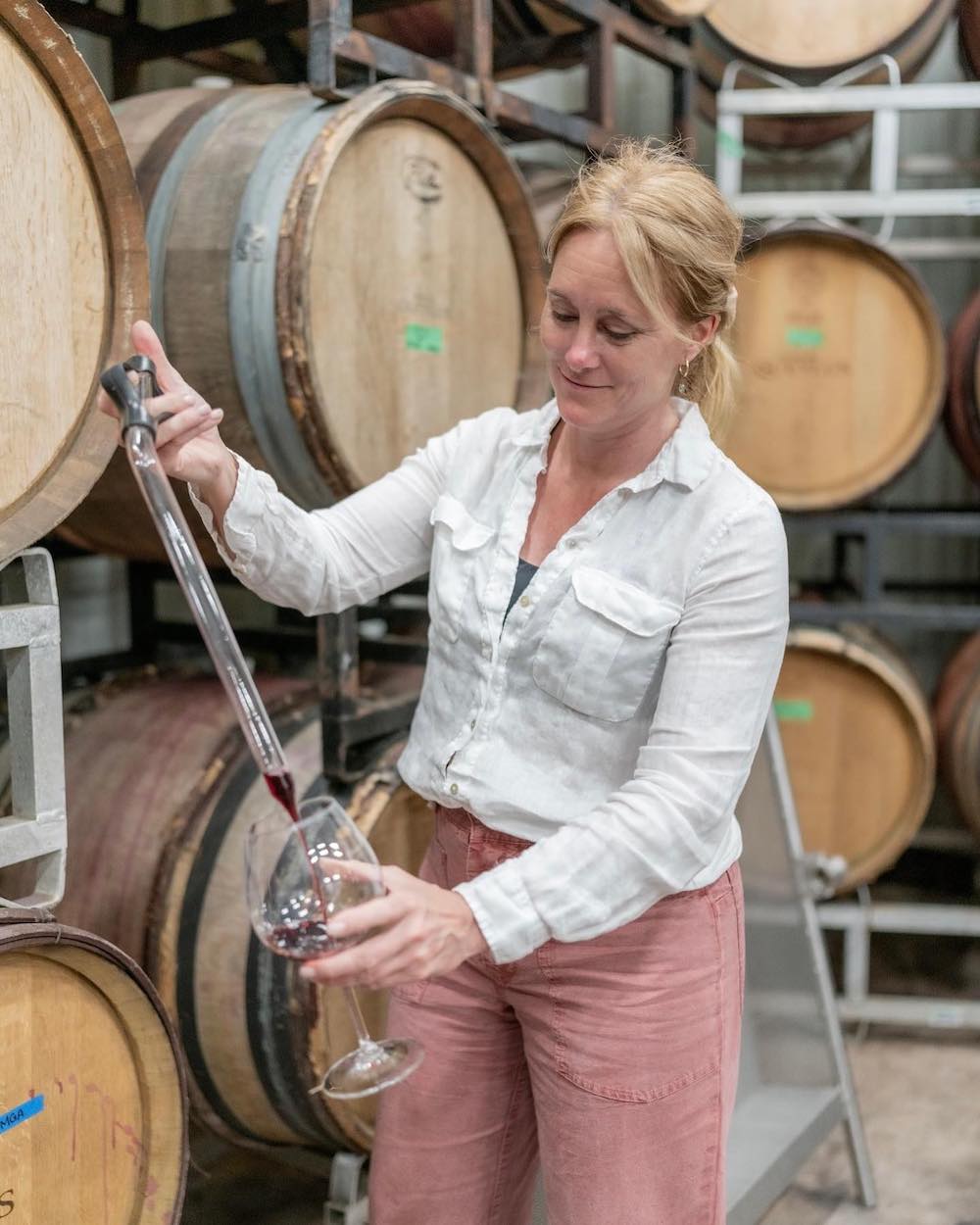
Kelly Mason, winemaker, Domaine Queylus,
Lincoln Lakeshore sub-appellation
We were heading into the perfect storm for Pinot Noir by mid-August. We had opened up our canopies as much as possible for better airflow in the Chardonnay and Pinot Noir blocks, as the summer rains were unforgiving.
We went through and thinned. Twice. I remember saying to friends, “we need a miracle: a completely dry September.” Without that, there was the potential for a lot of rosé being made from Pinot Noir in 2023. The dry miracle of September was welcomed and had it not been for the sun and minimal precipitation, we would have experienced a different harvest — with all varietals. The drier September also helped us with hand picking and tractor movement through vineyard rows (less soil moisture and mud on picking bins).
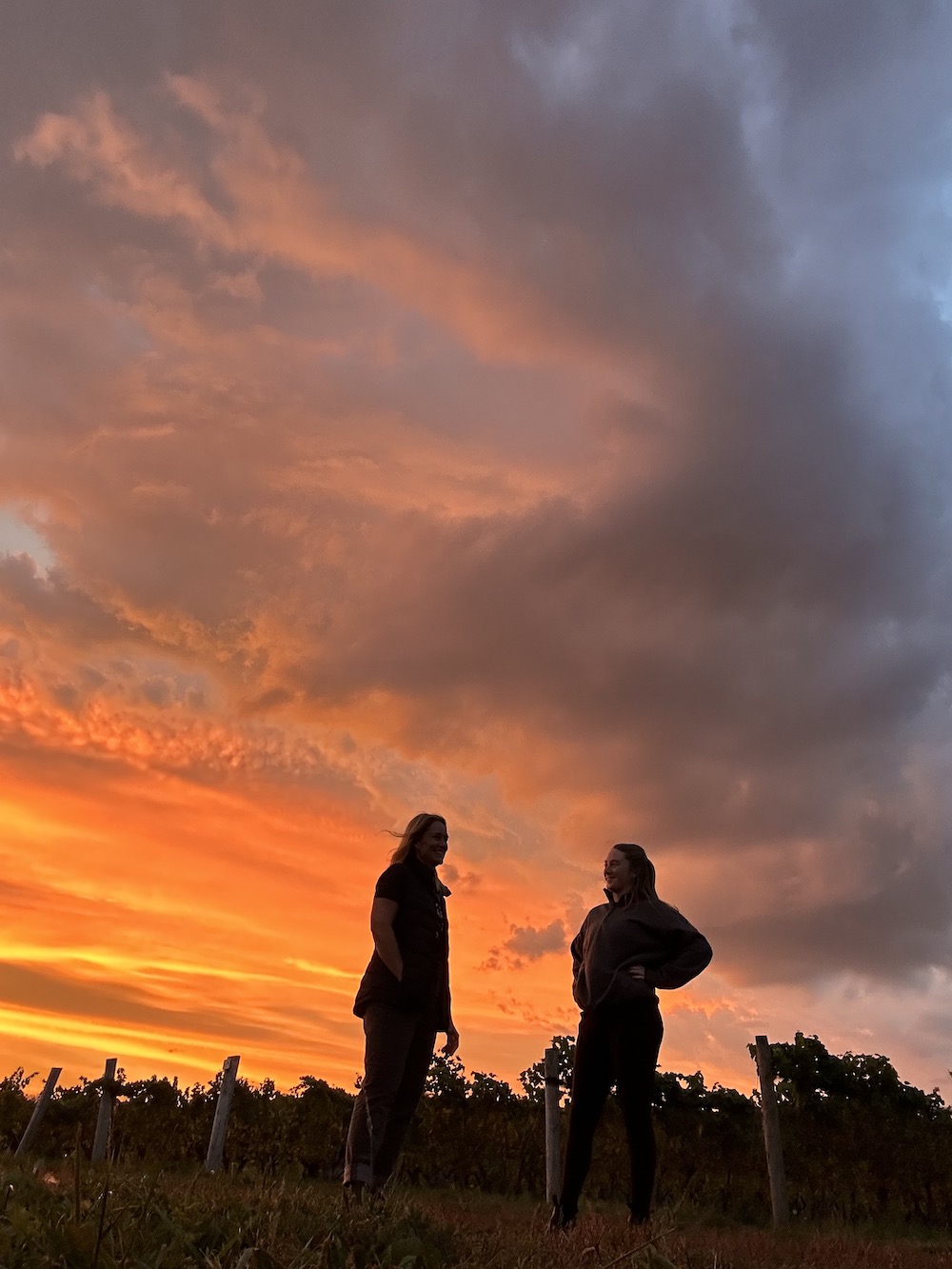
We left the grapes with some additional hang time to take in the September sun, which resulted in our first pick being Sept. 29. Our yields were up in Chardonnay, Cabernet Franc, and for once, even Merlot. It was the most Merlot we have ever seen come off our Mountainview Vineyard and it came in right on the heels of Pinot Noir. We found ourselves worrying about tank logistics and space. Our grapes always go across a sorting table and the team did a great job sorting to ensure quality (and no ladybugs!) in tank. Thank you, Harvest Team of 2023!
Right now, we are barrels deep in blending decisions for bottling the 2022 vintage. Harvest seemed so last year. Looking back, 2023 gave us a nice mix of sugar maturity, good acid, and clean fruit. It was a long harvest that was saved by September.
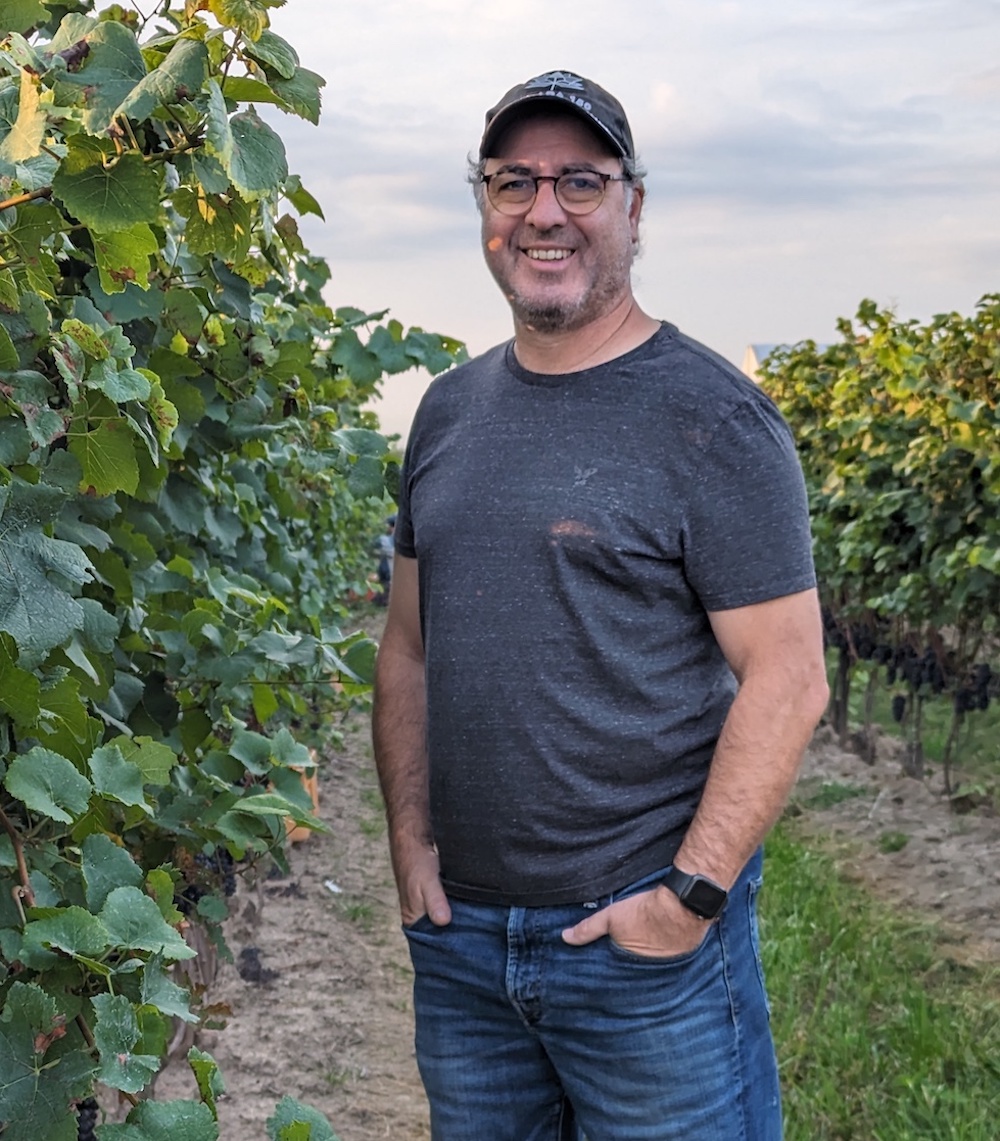
Fred DiProfio, winemaker at Bella Terra,
AMO and his own Fred Wines, various sub-appellations
An interesting harvest indeed! The growing season started with bud burst occurring in a timely manner. Heat units progressed well through May and June and many grape growers were looking at a promising forecast on quality. By the end of August, however, many were wondering when it would stop raining.
Harvest was somewhat delayed with the sparkling harvest starting around mid-September, approximately two weeks later than ‘normal.’ The good news is, it did stop raining! The Pinot Noir at Bella Terra Vineyards was harvested for sparkling wine on Sept. 21. This will be our first Blanc de Noir.
Our good fortune continued, with the early whites (Pinot Gris and Sauvignon Blanc) being harvested with excellent quality and bountiful volumes. This was met with particular gratitude, given the depleted inventories of these two very popular wines due to the short crop of 2022. The plentiful rain of July and August was largely responsible for the great yield, but not so much that quality was diminished. We saw good sugar, great acid, and excellent flavour development.
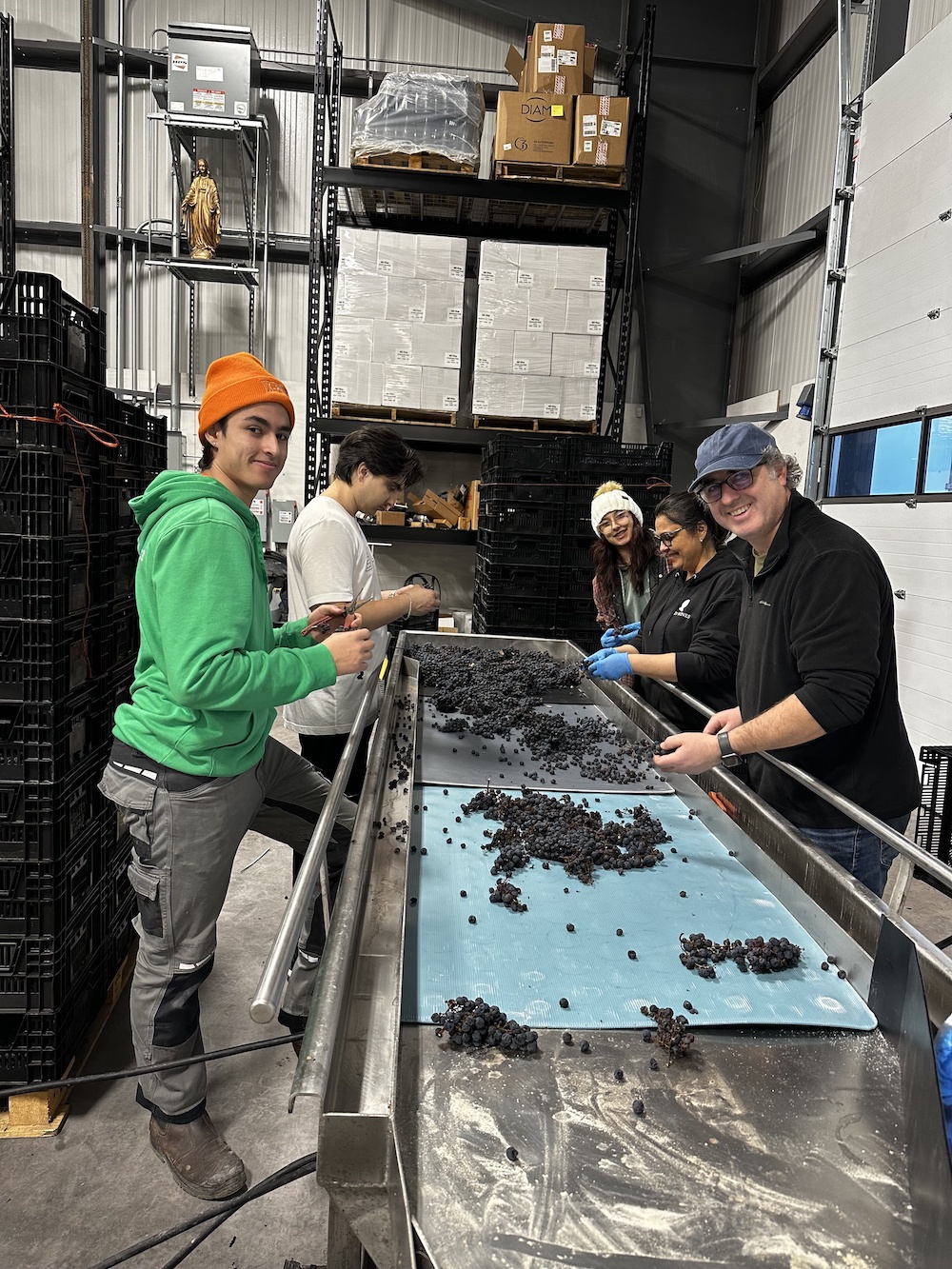
The continued moderate weather in October saw the harvesting of varieties such as Chardonnay and Riesling, both with varietal typicity in sugar/acid balance combined with excellent flavour development. By late October we were starting to harvest Merlot at warmer sites, such as the AMO Vineyard on the St. David’s Bench. Early indications are that Merlot may be the shining star of the Bordeaux reds in Niagara. Flavour and phenolic maturity were achieved well before the first frosts, so the grapes were harvested with high sugar, moderate acid, supple tannins, concentrated flavours, and deep colour. The young wines are showing very well, even before barrel aging. Look for reserve tier Merlots in 2025!
The late-ripening reds, such as Cabernet Franc and Cabernet Sauvignon benefitted from cooler temperatures and sunny days through November.
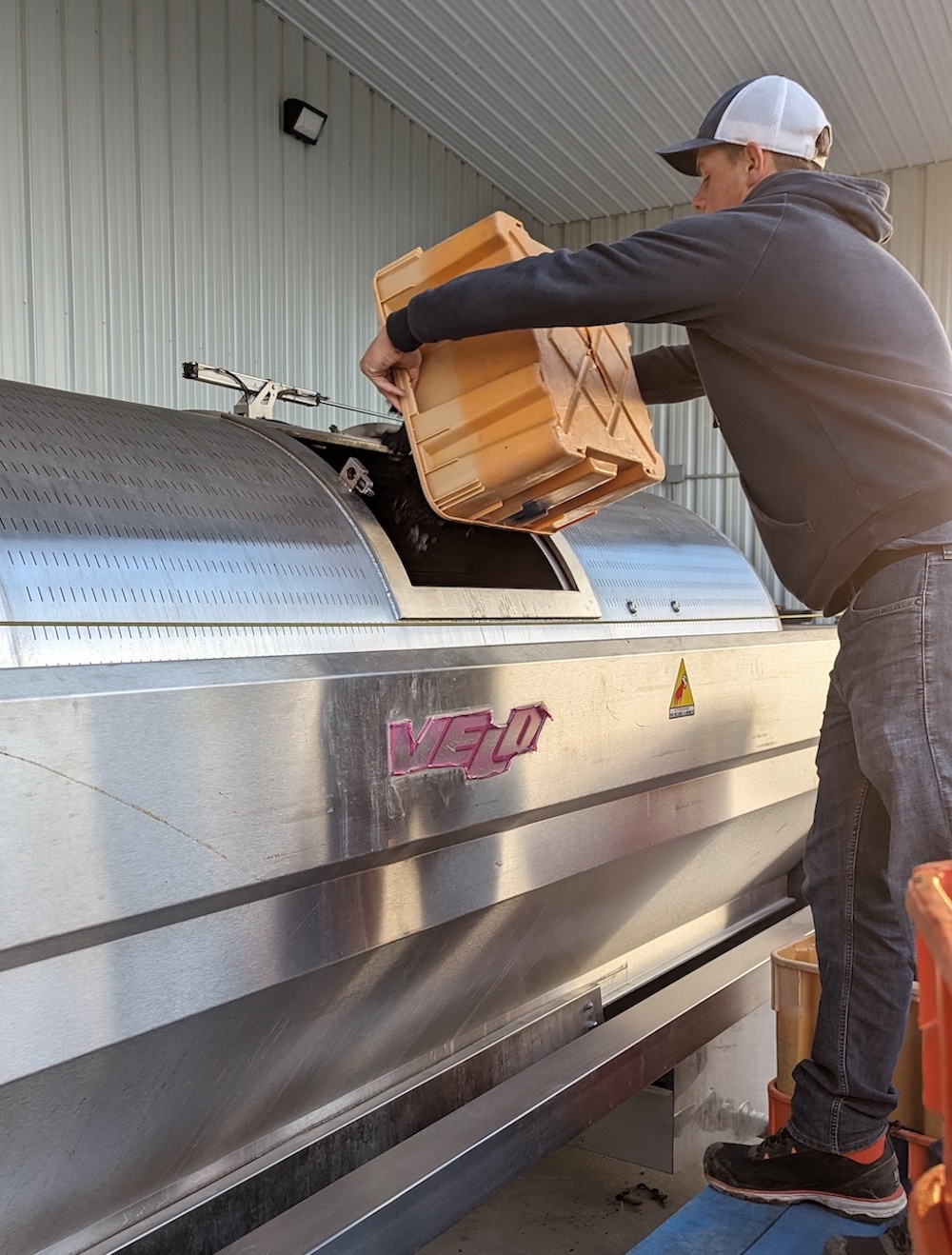
The cooler temperatures helped to preserve the acidity that is necessary for the grapes to endure the extended hang time and the sunny days were critical in breaking down the pyrazines which are responsible for green bell pepper flavours sometimes found in these varieties. In vineyards with sufficient heat and soils that restrict vine vigour (Plug: of course, these include Bella Terra Vineyards in Four Mile Creek and AMO Vineyard in St. David’s) harvests of these varieties were conducted in the second and third week of November and saw moderate sugar and acid concentration; intense and deep colour, slightly grippy tannins (which bode well for extended ageing potential) and, surprisingly, fruity flavours.
I believe the growing season conditions for the Cabs in 2023 were ideal for post-harvest drying of the grapes, known as appassimento. Bella Terra Vineyards were early adopters of this technique and have been consistently producing these intense and concentrated wines since 2012. Maintaining acidity while reducing green flavours is critical for this style of wine in which the drying results in the concentration of all sugars, acids, and flavours.
AMO Wines generously provided space for the drying and the use of the sorting table. Fred Wines started producing this style of wine in 2022 and will be looking at the first release in another year or so.
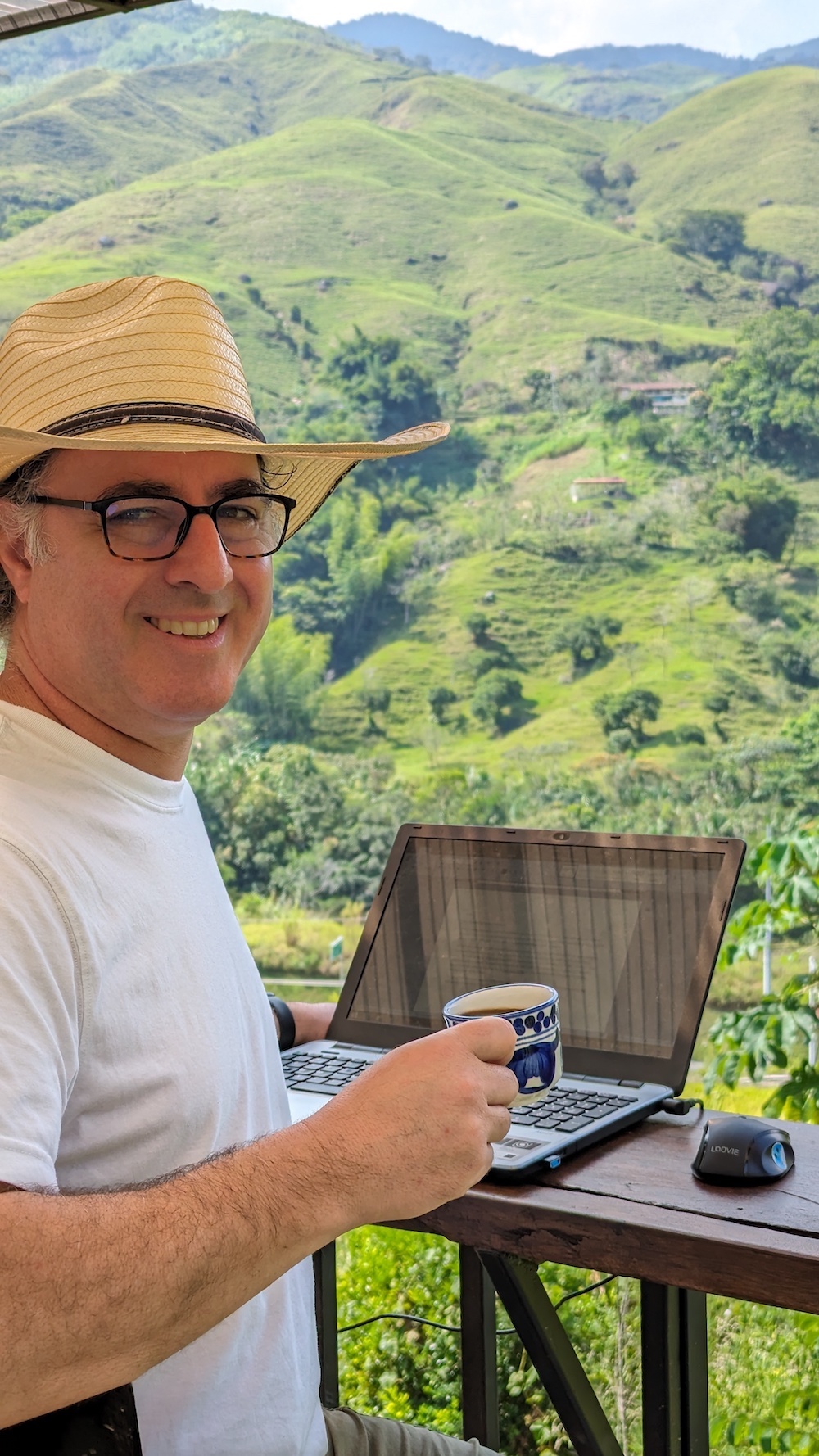
And then there was icewine …
Harvest started late evening Jan. 14 and the cold temperatures lasted until Jan. 18; just enough time for us to harvest Vidal, Riesling, and Cabernet Franc. In concert with the table wine harvest, the resulting juice from the icewine harvest was very sweet (of course) and exceptionally flavourful. Pressing was completed just in time for Margarita and me to fly away to warmer climes. We left the kids at home to work and study.
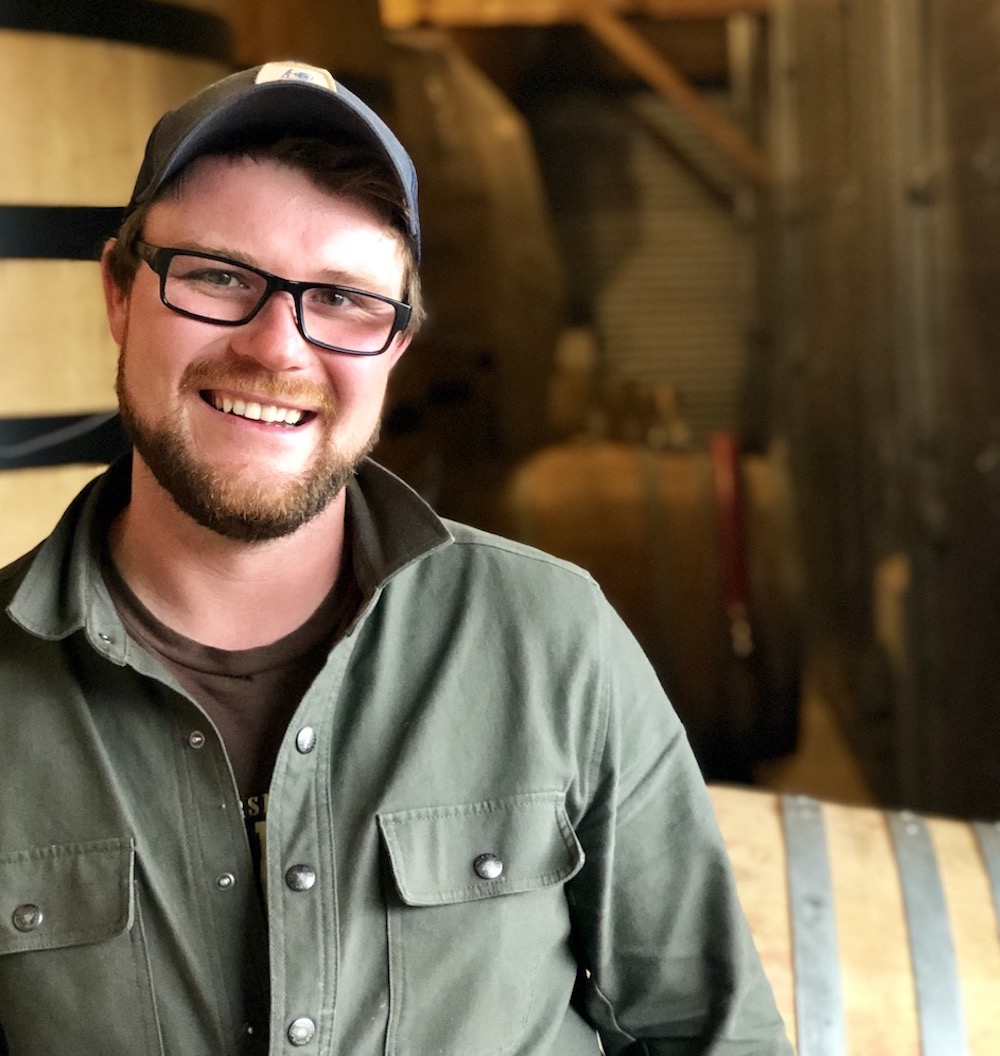
Grant Westcott (owner), Casey Kulczyk
(winemaker, in photo), and Garett Westcott (vineyard manager),
Westcott Vineyards, Vinemount Ridge
The early part of the growing year for 2023 was not particularly notable. Early spring rains persisted well into June with bud break in both of our vineyards occurring May 24 or so. Spring and summer had very few hot days and lots of rain, but disease pressure was quite manageable.
Then came September and the skies cleared and we had spectacular fall conditions for the whole harvest. Virtually no rain with warm pleasant days and cool refreshing nights. Perfection.
Early picks of Pinot Noir, Chardonnay and Riesling for sparkling started Sept. 14 and were followed by Pinot Noir picks for rosé on Sept. 27. These picks were one to two weeks later than normal, taking advantage of the special weather conditions. Brix were perfect for our style of sparkling wine and the acidity was bright and within range.
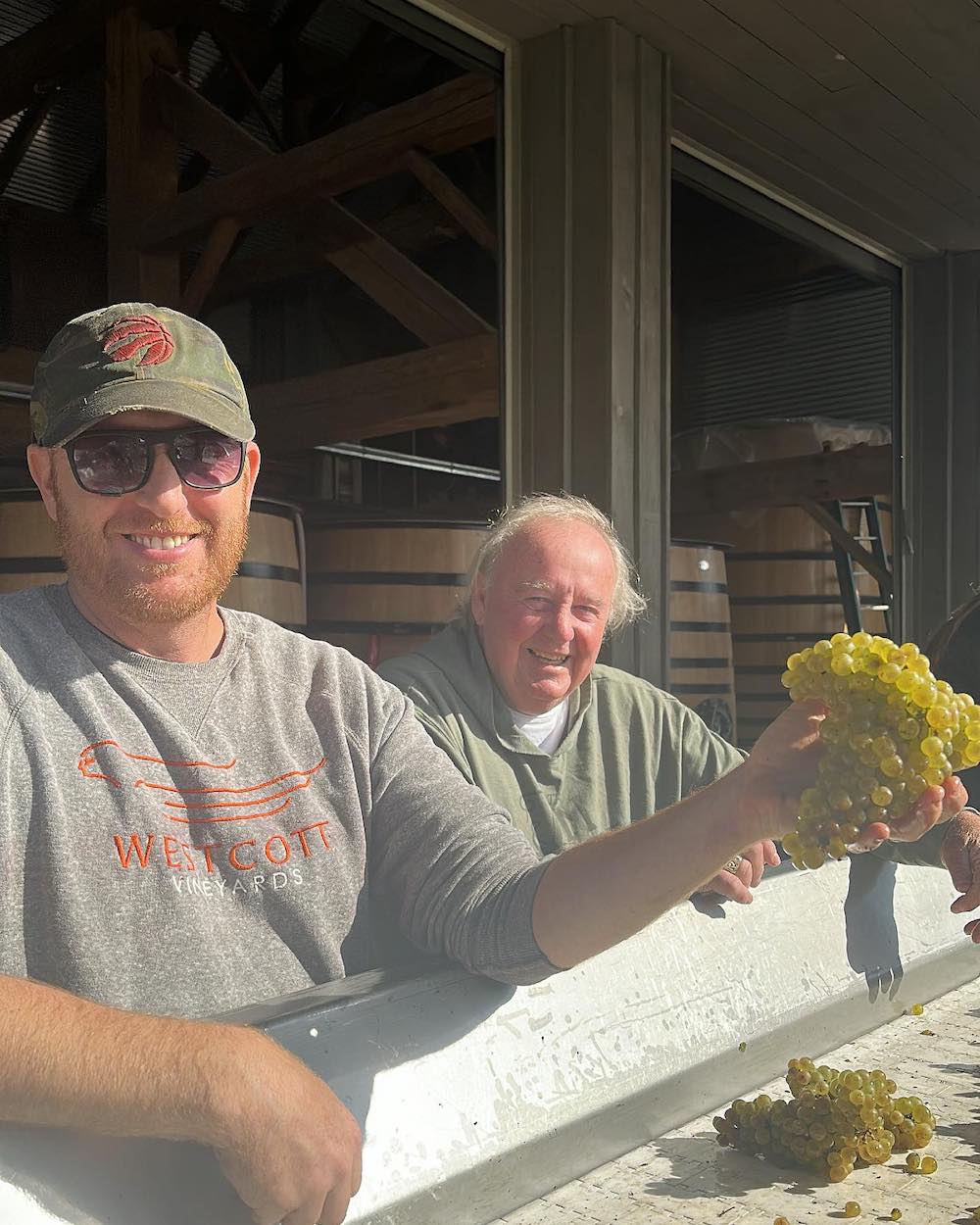
The table wine harvest for Pinot Noir and Chardonnay started in October and proceeded at a leisurely pace throughout the month with our final Pinot Noir harvest on Nov. 1 – a date unheard of in our history at Westcott. That long slow ripening and hang time for the Pinot Noir allows for the Pinot to go on a phenolic development journey. There is outstanding depth of character there as a result. Our final pick was Cabernet Franc on Nov. 8. Overall, the fruit was so, so special.
As a direct result of the quality of the fruit, all of our wild ferments behaved flawlessly with very little intervention required. According to Casey (Kulczyk) the wines produced in 2023 show great promise, exceeding the quality of 2020 – the previous vintage of the ages.
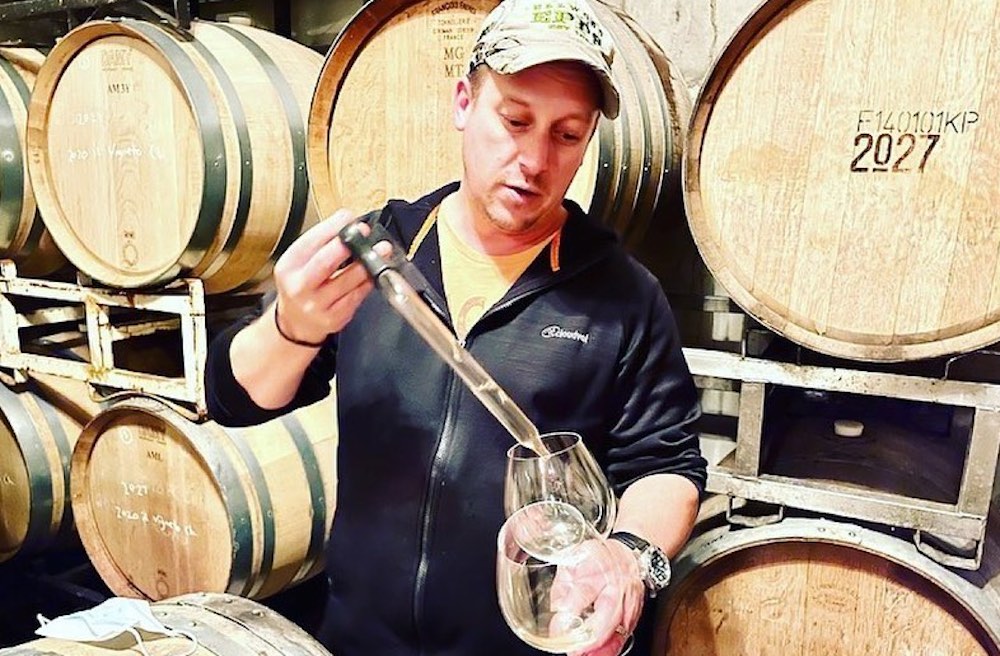
Kevin Panagapka, winemaker/owner,
2027 Cellars, various sub-appellations
High quality grapes were produced in 2023 with a long ripening season. The vintage was quite late, I’ve never pressed off reds in February as I hung the Bordeaux varietals as long as possible.
The quality of the wine produced is excellent if the wineries were patient with the weather. Minimal breakdown in whites; Chardonnay especially looks exceptional.
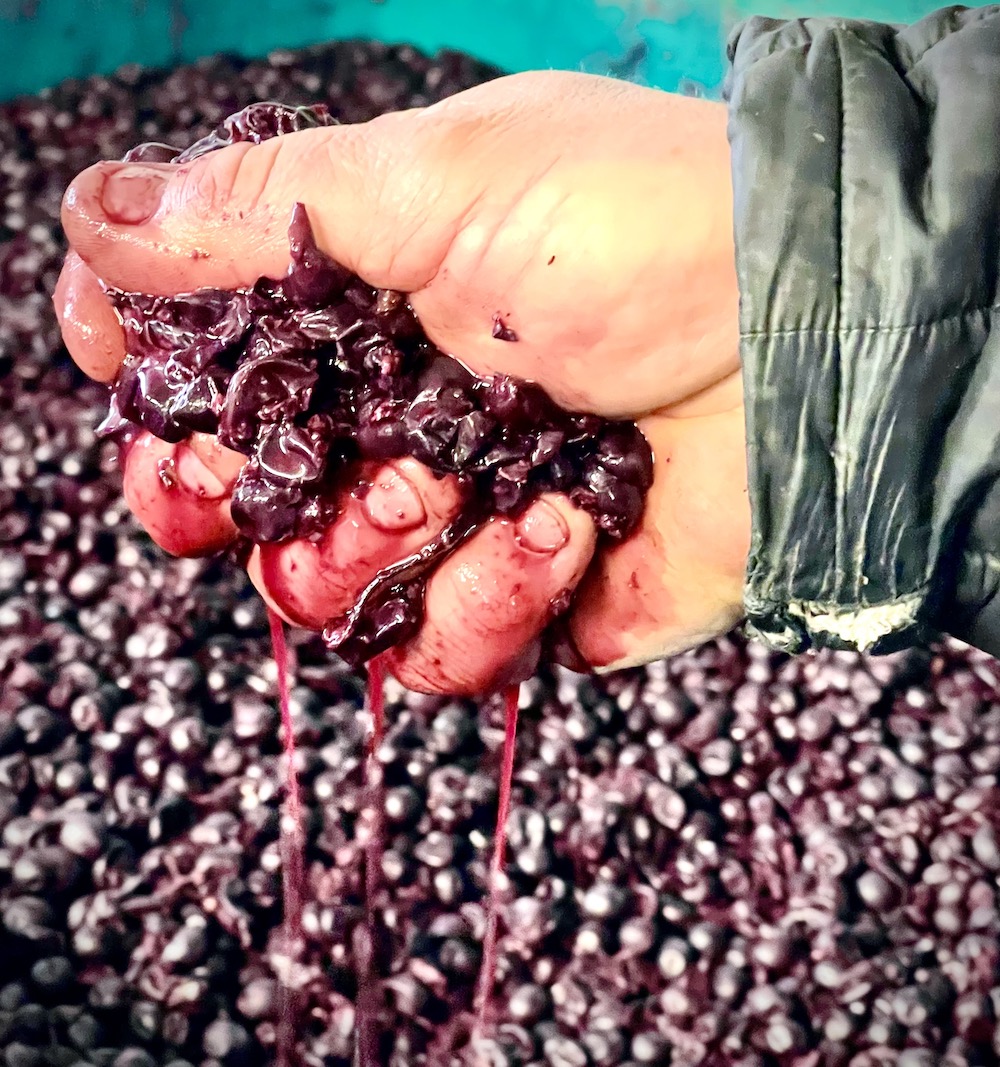
I believe the 2023 vintage across the board will produce very high-quality wines due to the extended slow cool ripening fall weather. Phenolic ripeness is exceptional across the board. I prefer the vintages that are cooler (and dry) in the fall to let the fruit ripen slowly. Alcohol levels are in balance with the ripeness of the fruit. I believe the 2023 Vintage will produce elegant wines with long aging potential.
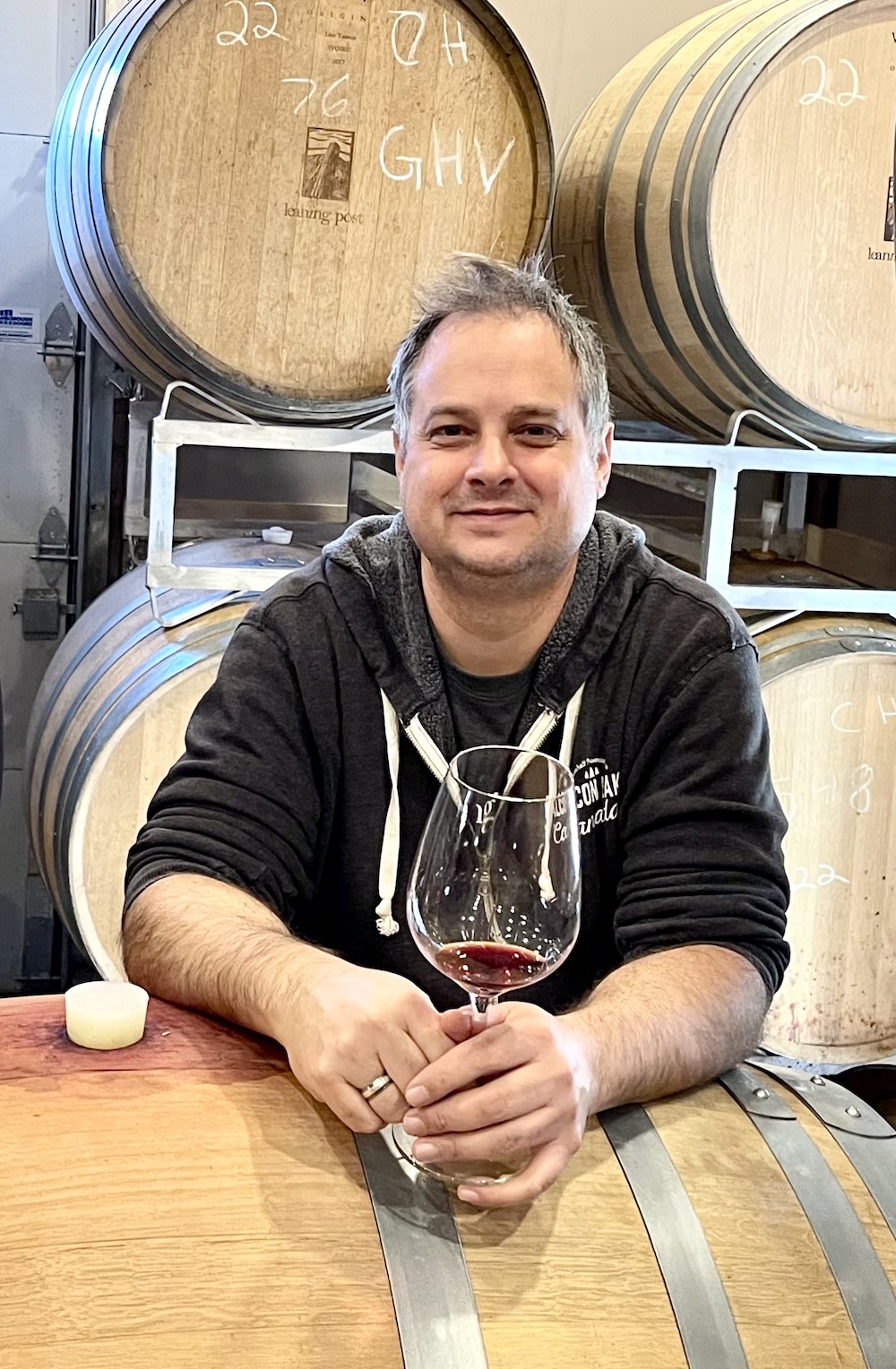
Ilya Senchuk, winemaker/owner at Leaning Post,
and winemaker at The Good Earth,
Lincoln Lakeshore sub-appellation
Honestly, 2023 came as a wonderful surprise and relief as a vintage. We have had some absolutely crazy vintages over the past few years, whether it’s crazy hot (2020), crazy crop-levels and crazy wet (2021) or winter-freeze and very tiny crops (2022), we have had to deal with a lot of extremes. The magic of 2023 is that other than a cooler than normal August, it was a very even, beautiful, dare I say. “classic” vintage. Cropping levels were normal, not huge, and because of the cooler late summer weather, harvest dates were pushed back a bit. However, the autumn was generally even, warm, and sunny so grapes ripened a bit later in the season but achieved optimal phenolic ripeness at moderate alcohols and good acidities. Particularly for us, where our production is still dominated by Pinot Noir and Chardonnay.
For Leaning Post, I would say that the star of the vintage (so far, tasting in barrel) is probably Pinot Noir. We were able to pick beautiful, clean, fully ripe Pinot from four different single vineyards at 22-23 brix across all of them, with lovely ripeness and acidity. And they are in very different sub-appellations (St. David’s, Beamsville Bench and two in Lincoln Lakeshore).
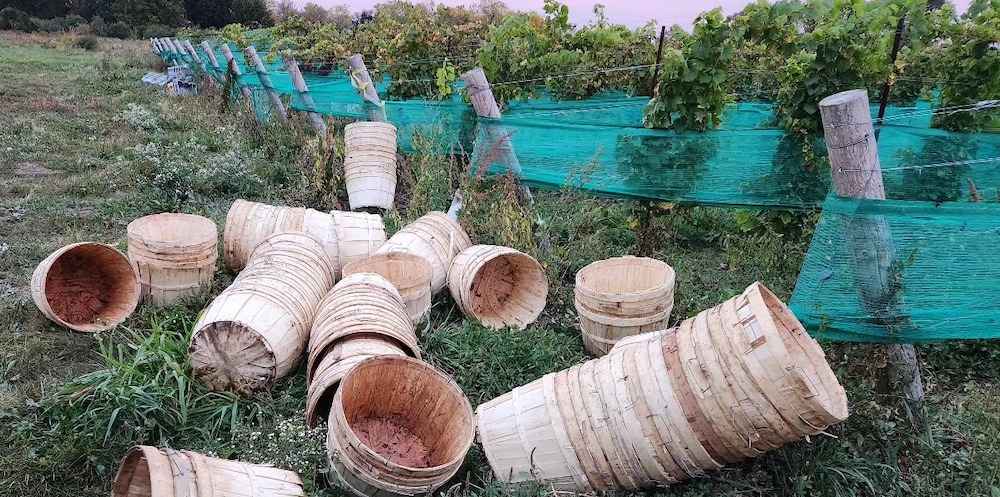
That rarely happens anywhere, and especially rarely in relatively humid Niagara. The only slightly unusual thing we noticed is there wasn’t a very large difference in heat or ripening time between NOTL and west Niagara (The Bench and Lincoln Lakeshore). We were essentially picking Pinot Noir from St. David’s to Winona within the same few days at similar numbers. So, I would say it was much cooler than average in NOTL, whereas it was only slightly cooler than normal on our side of the peninsula.
There seems to be a trend (most likely from global warming) that the late season in Niagara seems to be fairly consistently extending into November now. Late season varieties like Cabernet Franc needed perhaps a little bit of extra time to hang, but with all the craziness of every vintage, it seems that consistently we get some lovely weather in late October and early November that allows us to fully ripen “Big Reds.” This seemed particularly true for Good Earth this year, where we have a vineyard in Four Mile Creek that we got some really lovely Cabernet Franc from. I have seen this trend generally now almost every vintage, where the fall and late season have “saved” the vintage, really starting as far back as 2015.
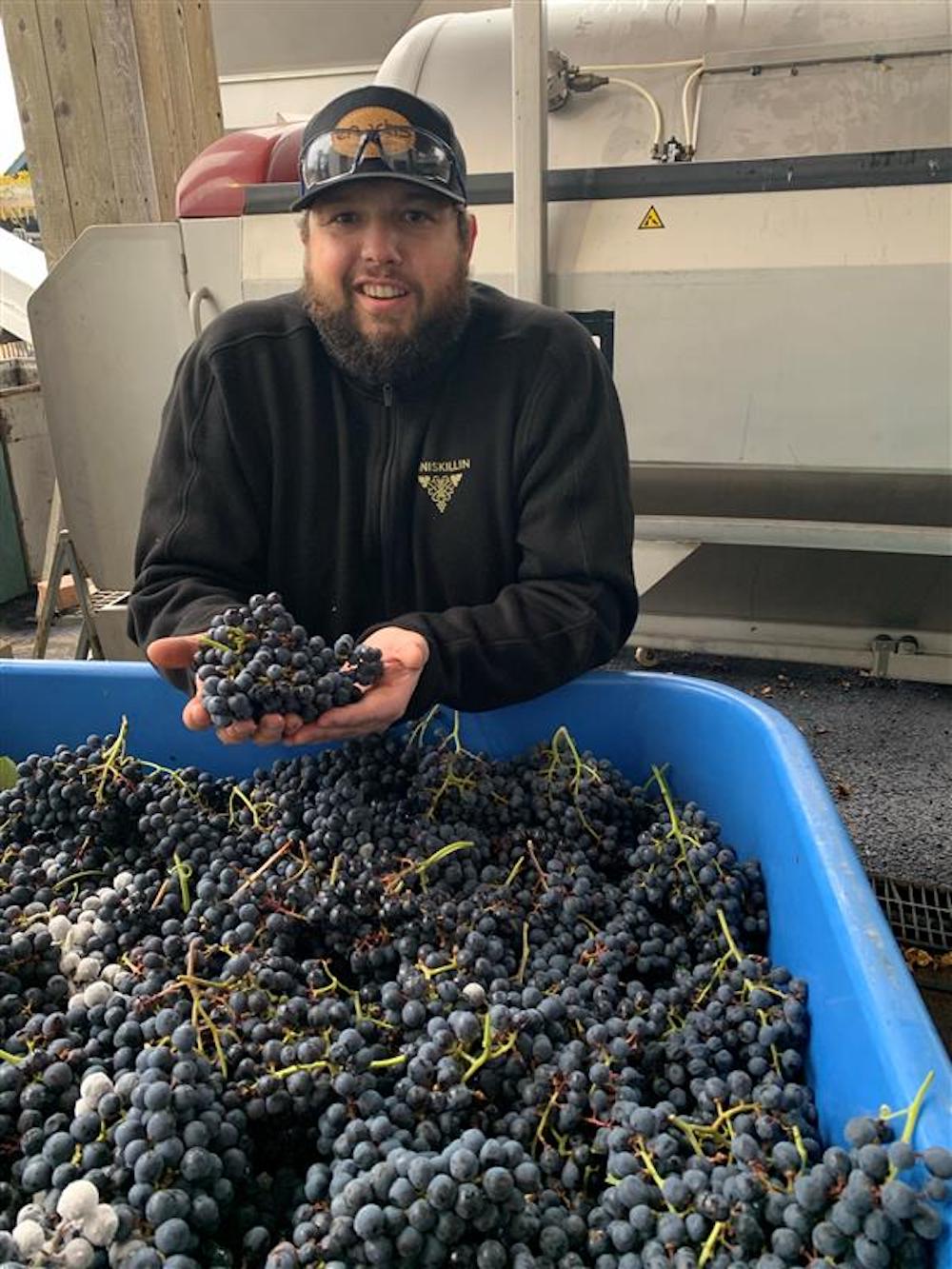
Nick Gizuk, estate winemaker, Inniskillin Niagara
Estate Winery, various sub-appellations
2023’s quality growing season led us to a strong harvest in Niagara-on-the-Lake and the Beamsville Bench.
The Sauvignon Blanc and Pinot Gris aromatics on the Bench were ahead of some varieties in the hotter plains of the Four-Mile Creek and Niagara River appellations. Although uncommon, it brought forth some great intensity and flavours.
Chardonnay lagged a bit after the wet month of August. With some fruit left to hang a bit longer, the picking process was stretched over the month. The extra time was necessary to build flavour and intensity, and so far, it’s showing very well in the barrel with rich fruit tones.
As usual, the Riesling is exceptional — a great representation of why this is a staple variety in Niagara, especially Inniskillin. We make varying styles, from dry to a very sweet susse reserve. Truly an undervalued variety in this region, and as some of the oldest vines in this area are Riesling, we can showcase something unique about our terroir.
This year was challenging as nothing was ripening according to the normal plan. We spent a lot of extra time in the vineyards for the aromatics to get all the picking timing right and weaved those picks nicely between the red varieties.
Our Pinot Noirs and Gamays showed great vibrancy and intensity on the vine and look to be some of the best fruits of the year. Both varieties have great acidity and bright fruit tones in the barrels. The Merlot yields were back to normal and the great expressions from all over the region are in barrel. The other Bordeaux reds had some extended hang time with some great colour and dark red fruit spectrums.
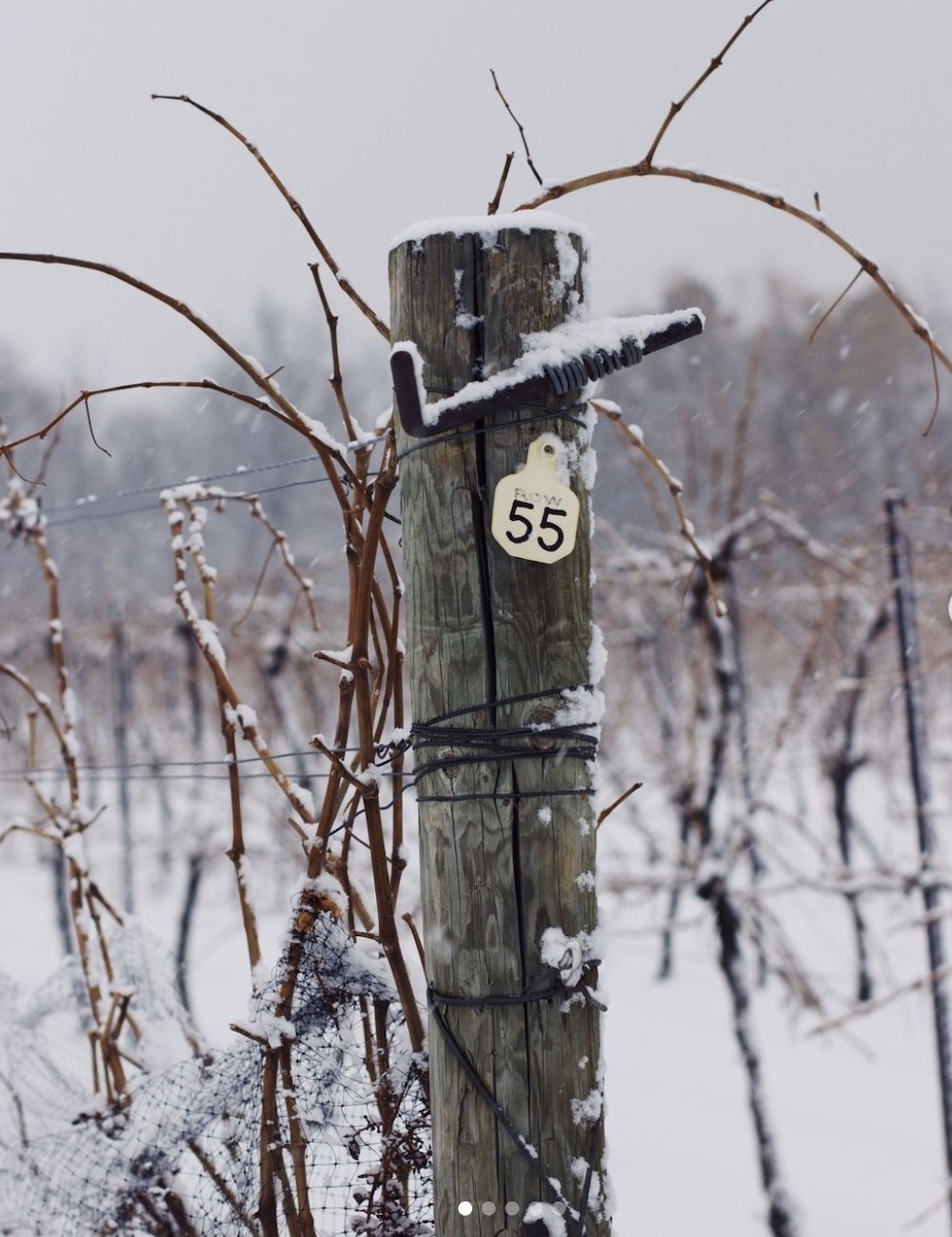
As usual, Cabernet Franc was one of the standout varietals this year. Cabernet Franc was picked from five different appellations this year, and they are all showing their distinct nuances from those sites. The Bench fruit showed a higher acid with complex tannins, while the Creek fruit showed a softer tannin structure. Together, they will make a beautiful reserve and maybe something special.
I’m looking forward to seeing the results of 2023 as some of my wines are already displaying great integration. The Montague Pinot Noir usually displays bright cherry and plum, however, with the long hang season this year, it showed intense dark plum and blackberry. The Pinot Gris is another true standout in the cellar right now — I have never seen Pinot Gris this healthy getting to the crush pad, and it should be something special.
We should see some notable examples of cool climate wines that will be signature examples in the coming years of our unique styles and terroirs. Even with the later season and early pressure on the vines during the growing season, we will see well-showcased, varietally true wines from this vintage. In my opinion, the overall quality from this year will be outstanding.
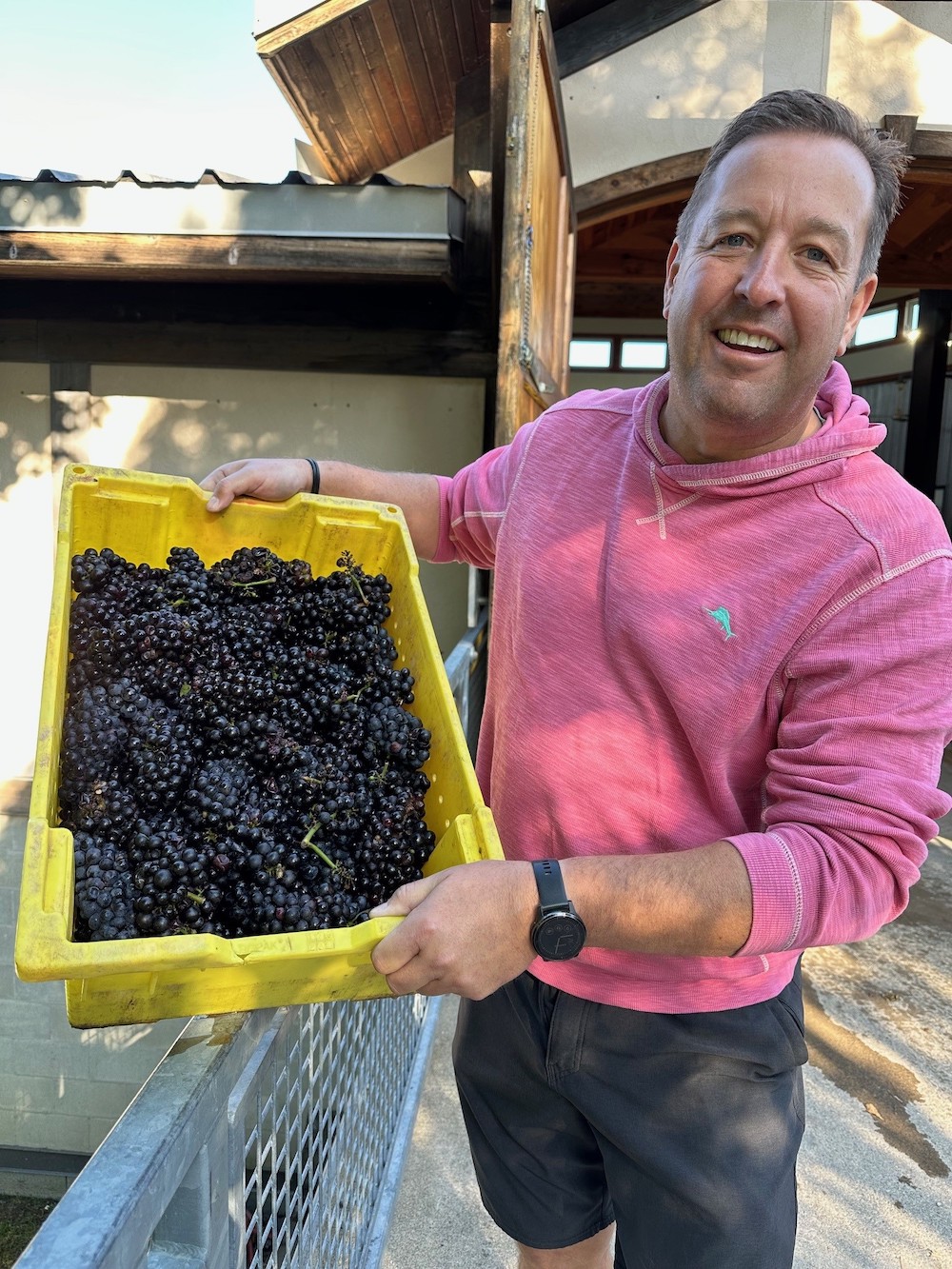
Ed Madronich, proprietor at Flat Rock Cellars, Twenty Mile Bench
From my perspective, the unique aspect of 2023 was the pace at which the grapes ripened. Even traditionally early ripening varieties struggled to mature on schedule, which could have been a challenge but for a relatively warm and dry fall.
The bright sunny days that would normally result in brix levels jumping by 0.5 C or more were only increasing by 0.1 C. In the end, our Pinot Noir, Chardonnay, and Riesling came in a little later than usual but at optimal ripeness and balance.
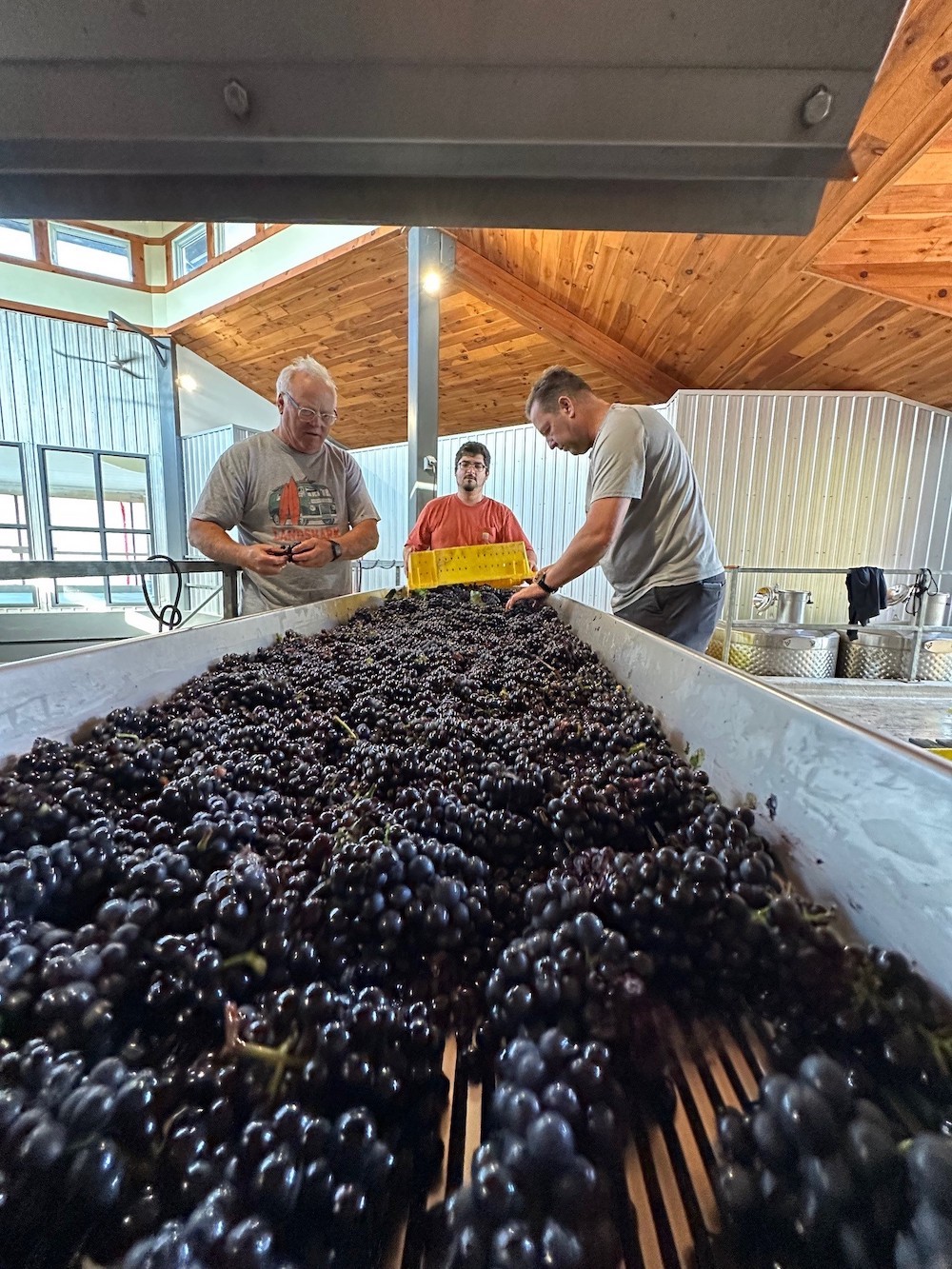
As a result of the slow maturation process and extended hangtime, we were able to achieve greater phenolic complexity then any vintage I’ve seen previously.
The flavours and depth of the wines will be exceptional for Pinot Noir and Chardonnay. The Rieslings are vibrant and aromatically intense. I’m very excited about the vintage.

Emma Garner, winemaker at Thirty Bench Wine Makers
and senior winemaker at Andrew Peller Ltd.,
Beamsville Bench sub-appellation
As for 2023, yes what a wild ride this harvest was. Cooler summer, later start, and a dry fall all contributed to a late finish, however, we were able to make some wines of incredible intensity.
As you know, I tend to determine the strength of the harvest based on how my Rieslings end up and this year I would say they are exceptional. The cooler, dry fall really enabled us to have some long hang time where the acids weren’t dropping quickly (like they do in a hot year), the skins were sound (unlike what happens in a wet year), and the flavour development was exceptional.
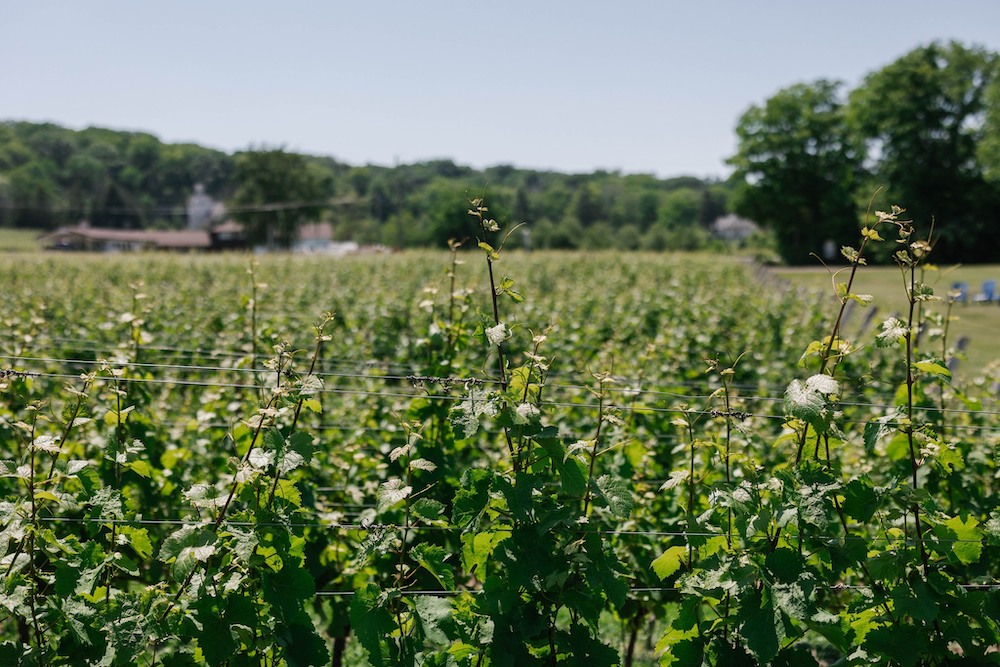
I am really excited about these wines (same principles apply to any of the aromatics that we make). The Pinot Noirs and Chardonnays also look solid, a bit more lean but focused acidity, great length, finesse and ageability.
We have not had our BDX (Bordeaux varieties) blending session yet, however, my monthly tasting of these wines leaves me feeling really excited about where they will land. This year did not give us huge alcohol, high pH, jammy blockbusters, rather wines with finesse and elegance – ones that will be built to last and will only get better in time.
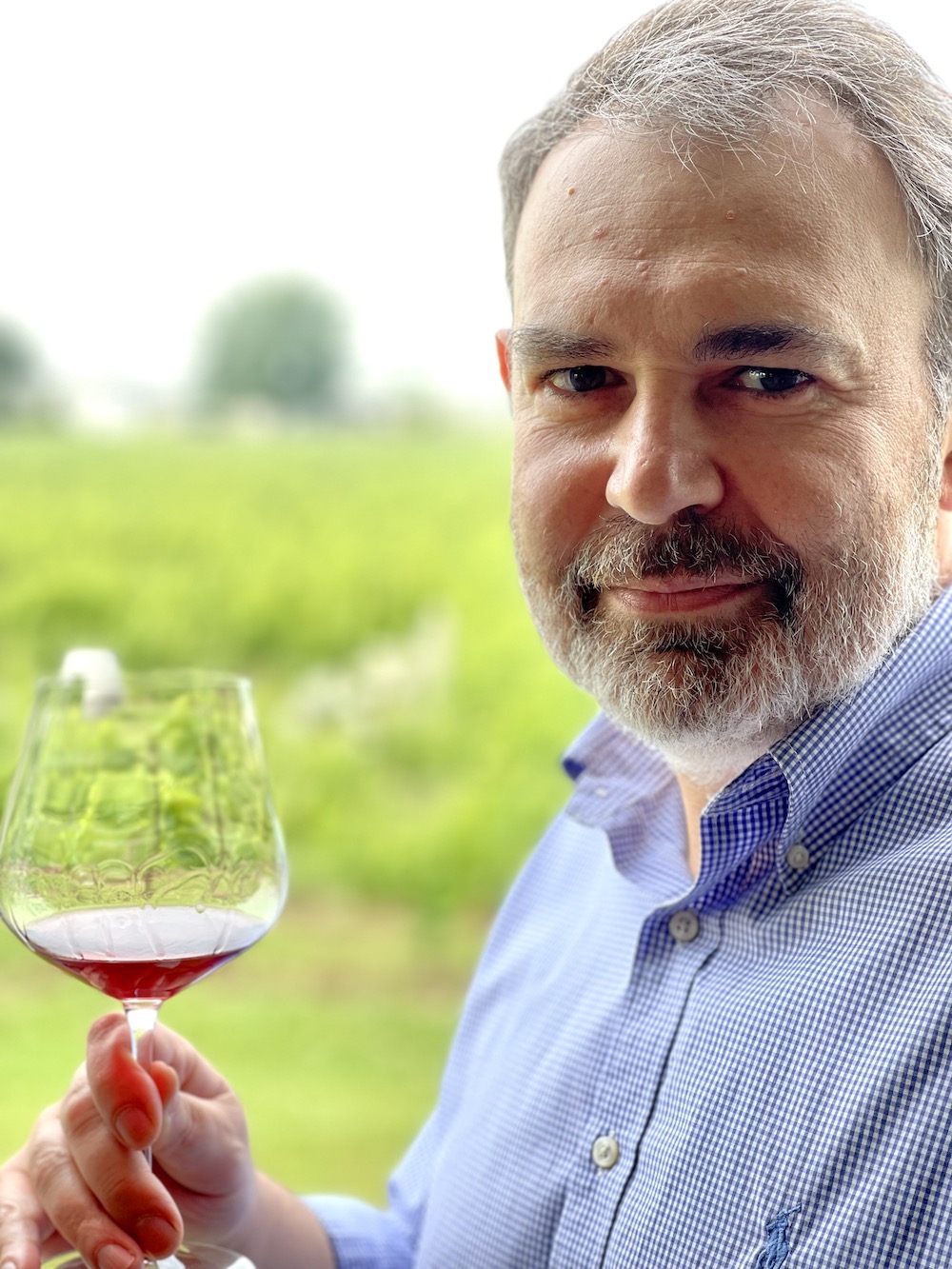
Vittorio De Stefano, proprietor, On Seven Winery,
Niagara-on-the-Lake sub-appellation
The Winter season started off on a positive note. It was seasonally cold, but not cold to the point to cause any winter damage to the vineyard. The spring was equally encouraging: We had some rain, the temperature was pleasant, and the vineyard blossomed in full force.
We sincerely believed to have turned the corner from the craziness of the last two vintages (2021 and 2022). However, we experienced our first sign of the ‘wild ride’ to come in May when we experienced our first hailstorm since we started the On Seven project in 2009. The hail came out of nowhere. It was brief and intensive; and it nicked every cluster of grapes in the vineyard.
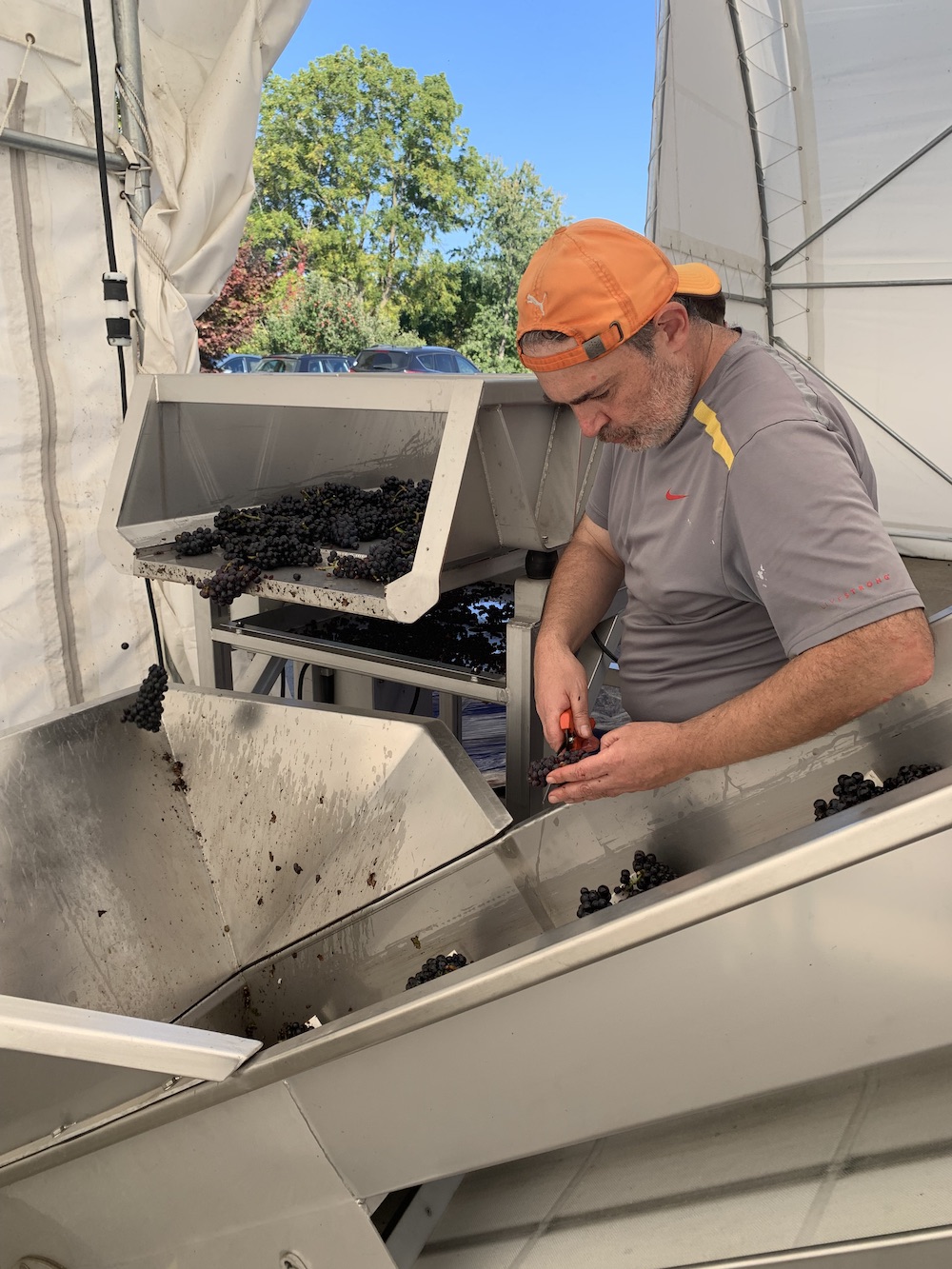
Then, the summer turned out to be unseasonably cool and wet. Not only did we have the least number of days above 30 C, but August resulted in unrelentless moisture and rain. This mild and wet season resulted in high mildew pressures in the vineyard. Given we are a certified organic winery, we were forced to take aggressive steps in the vineyard. We manually de-leafed the vineyard to increase air flow and dropped about half of our crop to remove, and to prevent, further mildew pressures. Between the loss of grapes from the hail, and the steps taken to keep mildew pressures under control, the vineyard was already down to one tonne an acre of fruit by the end of August. Needless to say, we had many sleepless nights.
Come the first of September, we took berry samples to determine the sugar and acidity levels, and to our shock and dismay, sugar levels were weeks behind what they should have been at that time. Consequently, we were preparing for a season of producing just sparkling and rosé.
Given our desperation (of course, for some Pinot Noir wine) and lack of actionable options available to us, we decided we had no choice, but to do some intense praying to the weather gods! To our humbling surprise, they were actually listening. September was not only warmer than normal, but we had a full month of no rain. The intensive steps we had taken in de-leafing and reducing our crop load paid dividends in the end. The vineyard got back on track allowing us to produce a full portfolio of wines for the first time ever.
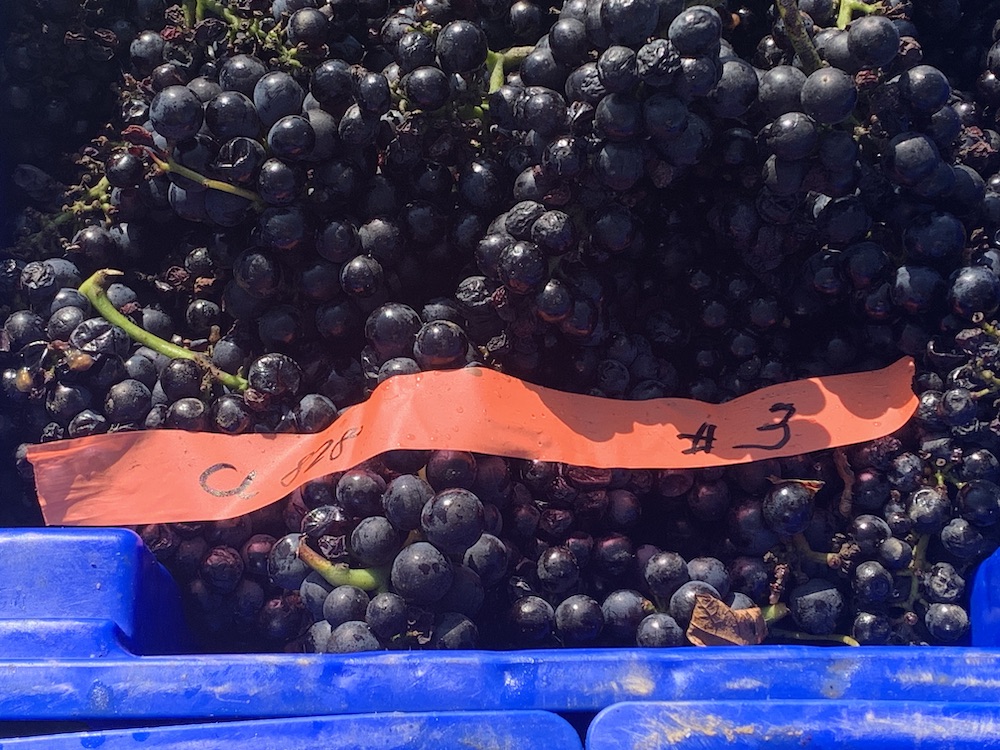
The first grapes to come off our vineyard was the Pinot Noir during the first week of October. The fruit was clean, ripe, and with great acidity. It was the ideal Pinot Noir harvest.
Over the course of the next few weeks, we were able to harvest the Chardonnay from the easterly block to make our still wines, and the westerly block, to produce sparkling wine. Again, the fruit was clean, with nice dense flavour, and good acidity. A great Chardonnay harvest.
Once the harvest was complete, and the grapes pressed and happily fermenting in barrels, we will admit, that we did enjoy a glass (or three) of wine. Somehow, we pulled off a great harvest from a ‘wild season.’ We are excited to share our 2023 vintage once ready for release.

Dean Styoka, winemaker, Stratus Vineyards,
Niagara Lakeshore sub-appellation
What a year 2023 was. The season started out for us with one of the driest springs we had on record. April and May were both seasonably warm with drought like conditions which set us up for an amazing year. Weed control in the vineyards was pretty easy going to start the season.
June could not have started any different than April and May with the rain finding its way to us. June, July, and August were quite wet and quite cool, which meant a lot of extra canopy work to control vigour and allow adequate airflow. The odd hail event didn’t make life any easier on the growers.
The hard work during this unusually wet summer was rewarded with ideal harvest conditions with good sunlight and heat to help ripen the fruit to full potential.
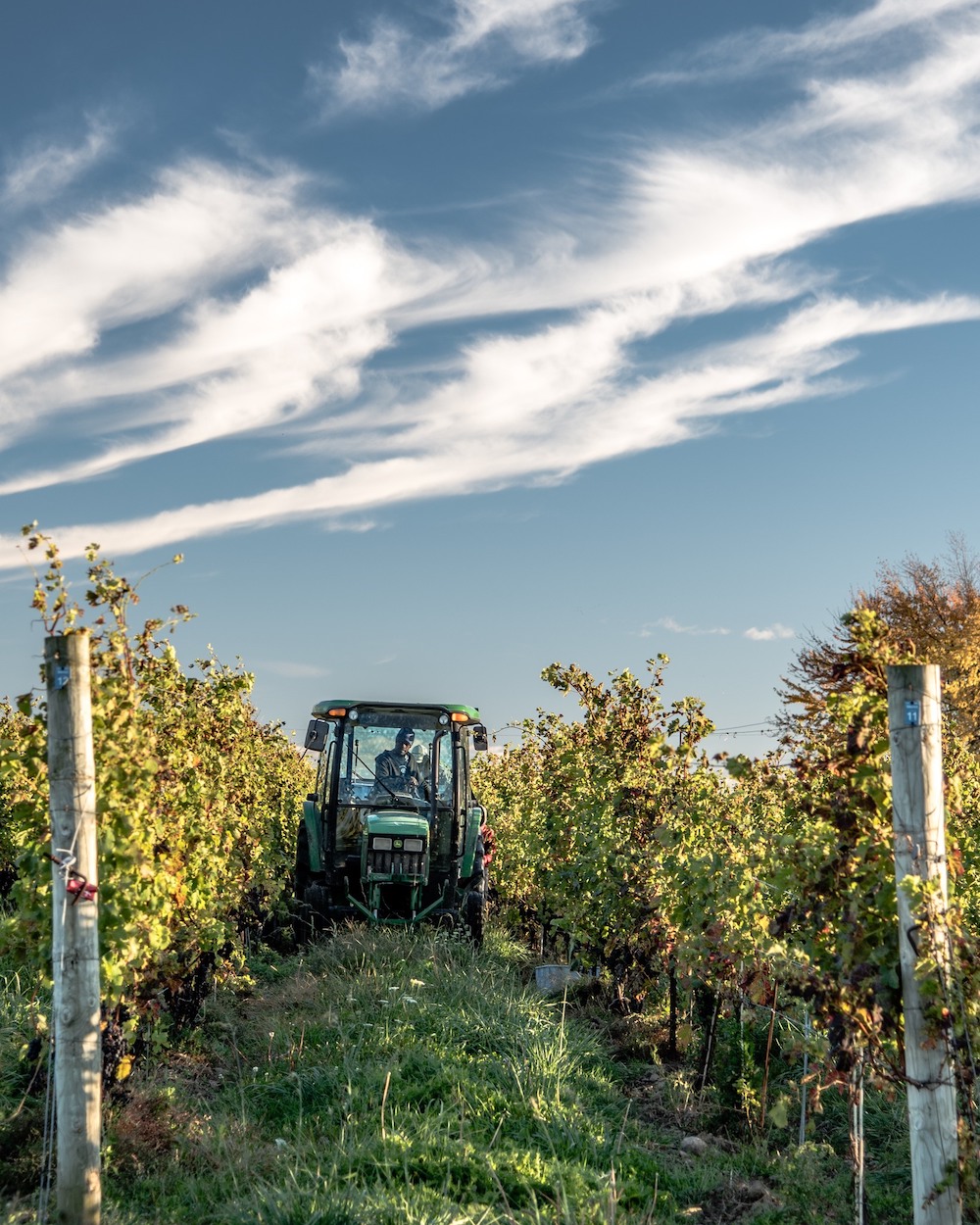
Harvest began quite late with sparkling picked on Sept. 11, 10-14 days behind a typical sparkling harvest. Overall, 2023 will be a celebrated year for the ideal balance between ripeness and acidity that our cool climate viticulture is known for. The long, beautiful fall really turned the year around for us and the quality and concentration are very reminiscent of the 2017 vintage and its dry warm fall.
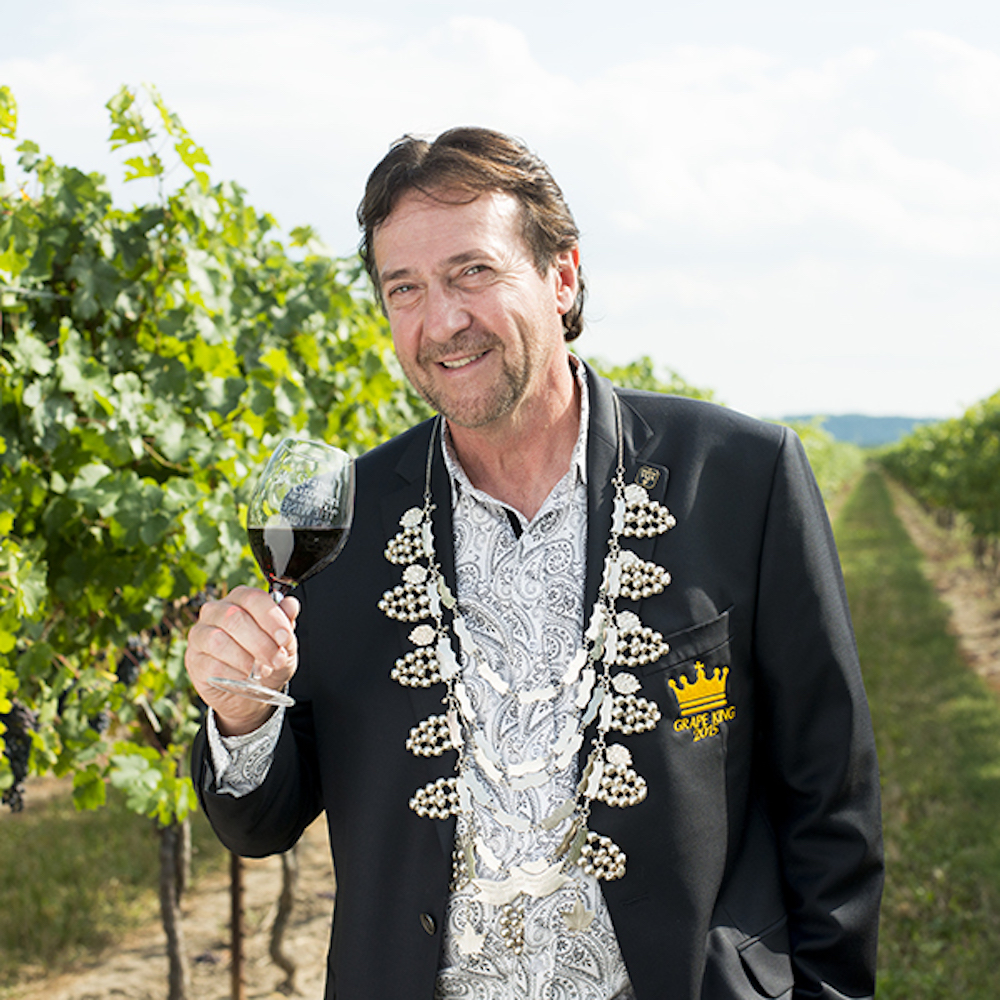
Jamie Slingerland, director of viniculture,
Pillitteri Estates Winery, Niagara Lakeshore sub-appellation
Vintages are shaped by the weather, and in 2023, a strong El Nino shaped that vintage. Whether a person believes in global warming, it is hard to imagine the weather isn’t impacted by it as the winter of 2022-23 and winter 2023-24 barely arrived. As well in 2023, vine losses continued from the winter of 2020-2021, shortening what could have been the largest crop ever. Market conditions impacted the vintage in that there was less of a demand for grapes. Even with those difficulties it was a big vintage with 75,000 tonnes harvested.
Location definitely impacts a vintage as the best location to grow grapes is in Niagara-on-the-Lake where 65-70% of Ontario’s grapes are grown as is 95% of the Bordeaux varieties grapes and about 80% of the entire red vinifera crop. That is because there are more growing degree days for vines and greater Lake Ontario protection from severe winters. So, the weather of Niagara-on-the-Lake determined the Vintage of 2023.
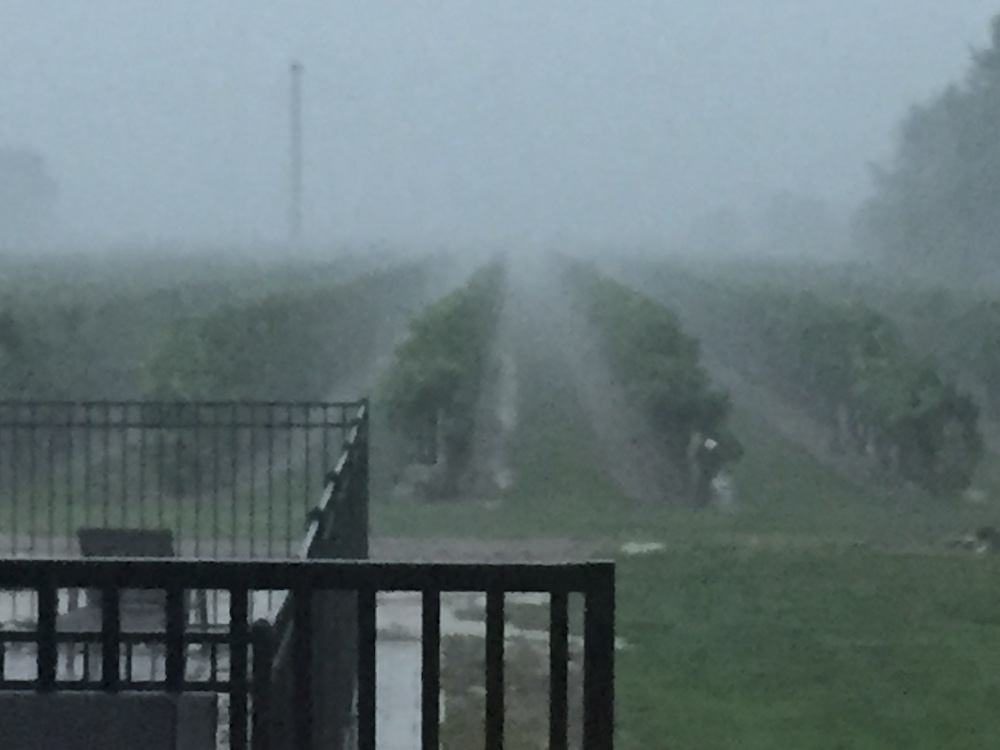
Winter 2021-2022 had lingering effects
The winter of 2021-2022 had a lingering effect upon vine mortality so much so that the federal and provincial governments initiated the Canada-Ontario Winter injury 2020-2021 program to help with one of the biggest vine losses the industry has ever experienced in 10 years, spread over two (some say three) years, due to cold in the winter of 2020-2021. Many growers did not expect the amount of vine mortality that occurred into 2023 to be near equal or a higher rate than that of 2022. Over those years between 15-20+% of vinifera vines were lost with some growers losing entire blocks. Trunk damage was not far behind, and growers were kept busy in the last two springs with vine renewals and vine replacements if vines could be found. As a side note, some vines weakened with red blotch were the first to go. Red blotch has significantly impacted vine health, winter hardiness, and more so in some varieties than others. Significant work has been done in the last few years with the GGO, wineries, researchers, and the federal/provincial governments to establish a program to produce disease free vines from nurseries.
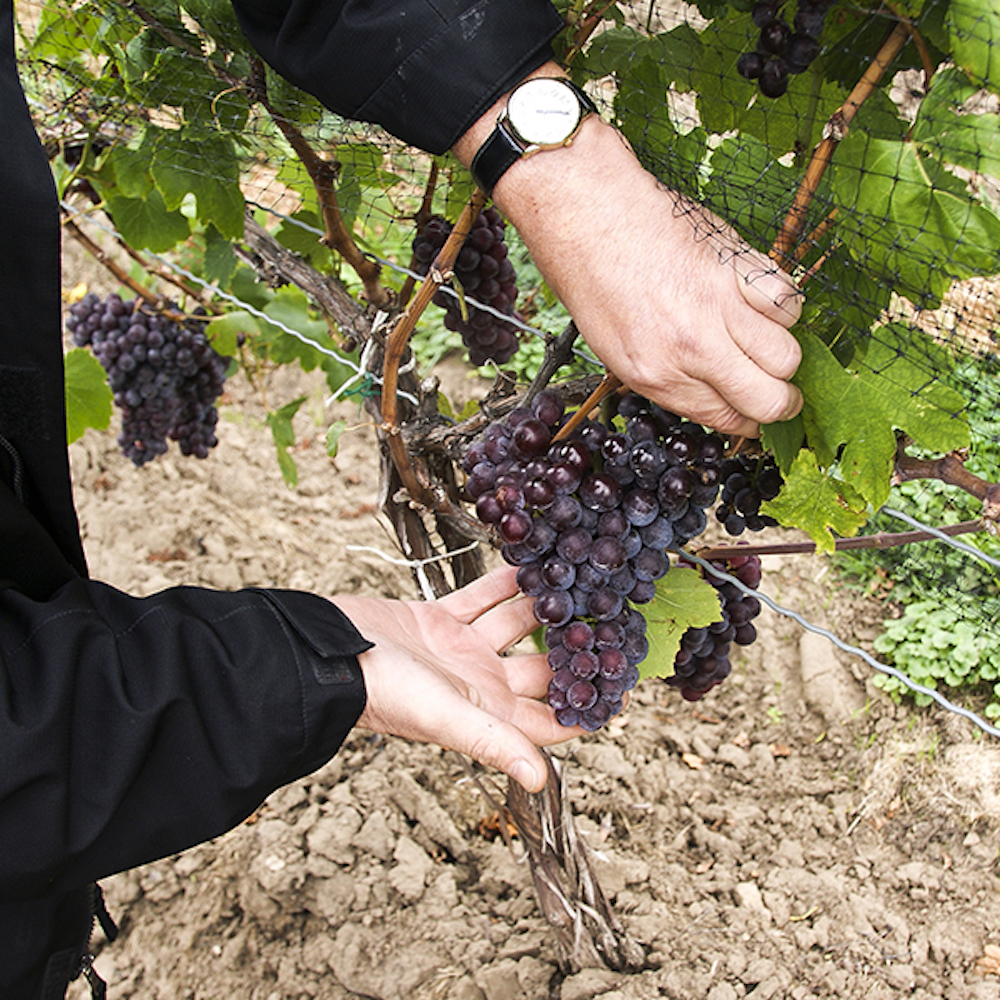
Winter 2022-23 was mild
January 2023 was mild with a short window at the end of January to pick the 2022 icewine crop. Late winter to the end of March 2023 was especially warm and with plenty of rainfall. After the mild winter, fruit bud survival in most varieties was at one of its highest levels in years averaging close to 90%. A 60% fruit bud survival rate can achieve a full crop with good vineyard management. Growers always leave extra buds to account for fruit bud loss on most varieties because “you can always remove excess fruit, but you can’t add fruit to a vine” when there is a light crop. Too light of a crop can reduce grape quality for wine because vines need to be in balance with crop load so that vegetative growth does not become excessive and reduce sun exposure and air flow to the fruit that would reduce fruit quality.
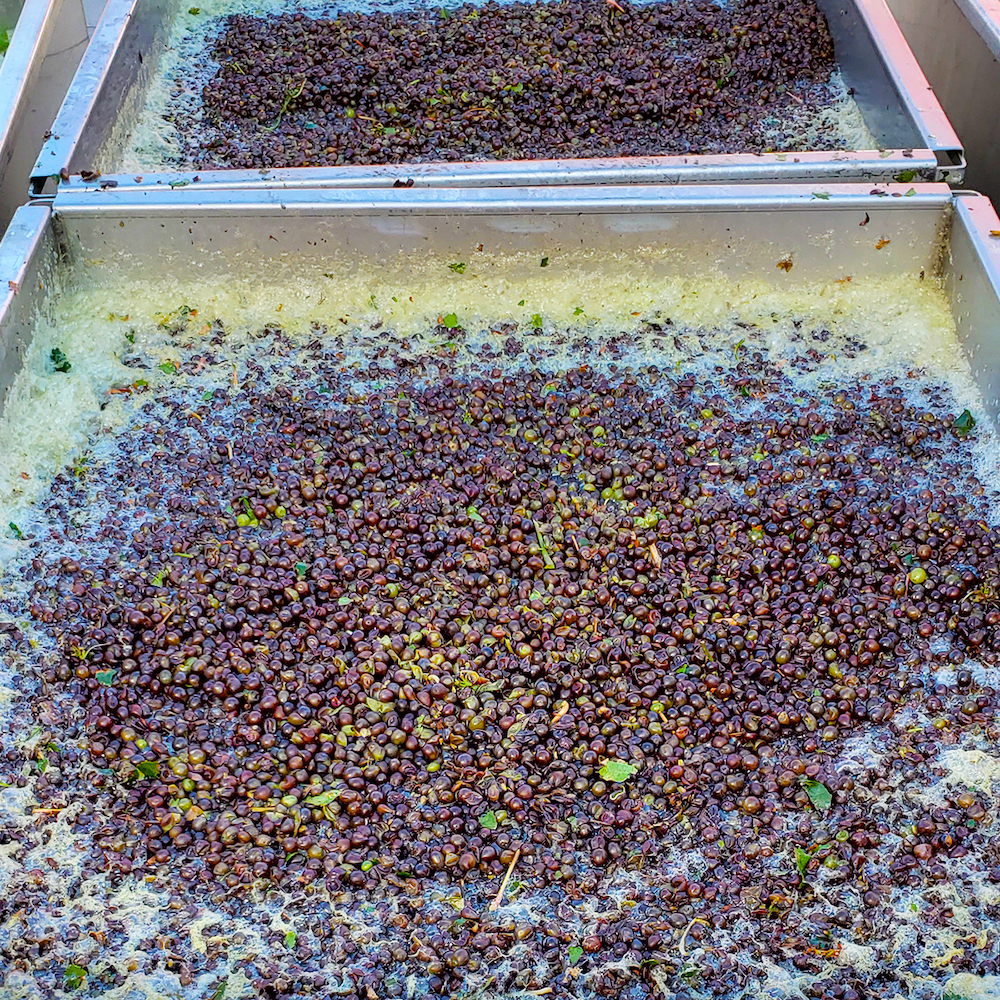
Spring 2023 was dry and warm
April and May were dryer than average allowing for plenty of days to do tractor work. Toward the end of May it was warm and early June saw some of the warmest days of the “summer” in 2023. It looked as though an early spring was imminent which would help advance the days to maturity of the grape crop. In a cool climate region like ours, a warm June is ideal to push early varieties, especially the red Bordeaux varieties. It is rare for Niagara to experience a spring frost that will create fruit bud damage, so the early spring heat was a welcome sign of potentially a better vintage.
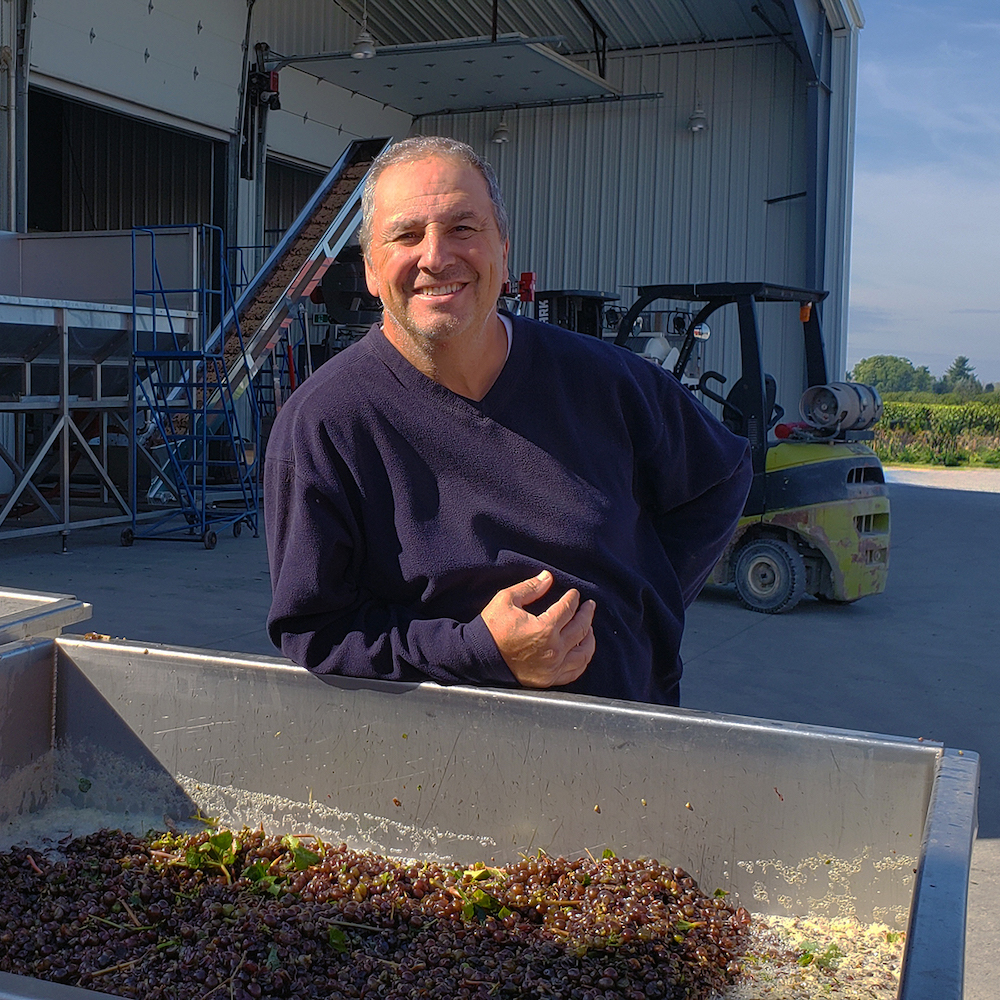
Summer 2023 was cool, cloudy with lots of rain
Then for most of June, July, and August there was an overabundance of rain with a lack of heat and sun. There was even light, spotty hail 2-3 times with minimal damage. The damaged fruit was green at this point of growth and just scabbed up with little impact on crop size and quality. A lot of rain in the summer is a mixed blessing. From a grower’s perspective, it could be good as it increases berry size, bunch weight and also vegetative growth but, from a winemaker’s perspective, the cloudy and cool temperatures will slow the development fruit maturity, reducing quality. Hedging and leaf pull are good crop management tools to expose the fruit to the sun and air flow. These practices reduce disease and allow for better fruit colour and flavours.
In 2023, growers were at a frantic pace hedging and leaf pulling at the fruit level, at least double that of previous years, to expose the fruit to air and sun as well to reduce disease. Thus, the summer weather had now slowed fruit development and extended the days to maturity (harvest date), not a good factor for fruit quality especially on later varieties. With significant vegetative growth in the summer of 2023 came multiple fruit clusters from each fruit bud. Growers experienced this in 2023 more than in previous years. I left 20 buds on my Merlot vines, and I couldn’t believe the 86 fruit bunches that I had counted on some vines. Thus, growers were kept busy for much of the summer on most varieties, thinning fruit. Big crops will slow fruit development and reduce quality. The 2023 crop was characterized by many bunches and large berries and thus a much heavier crop occurred with 30-50% more weight per vine than in previous years. Many growers having experienced a short crop the year before were anxious to capitalize on the larger crop. Some growers purposely left their crops heavy while others under calculated their crop and did not thin enough. Regardless of what people’s intents were, there was a heavier than average crop, per vine, moving toward the fall that was not ripening and was high acidity, thus harvest became delayed. The summer weather slowed down the accumulation of growing degree days to mature fruit extending the harvest dates of each variety.
Fruit thinning, to be effective for fruit quality needs to happen early in fruit development at mainly three stages. Shoot thinning, fruit removal just after blossom set and at version. The benefits of early fruit thinning cannot be underestimated as the later that fruit is thinned the benefits are proportionally reduced. Thinning out green fruit at/after veraison is always a benefit as this is basically removing secondaries that do not ripen.
El Nino brought warm/dry weather to the fall 2023
The prospect for a large, poor vintage was in sight moving toward September when the unexpected happened; September and much of October were hotter and dryer than previous years thus saving the crop. This was a direct result of a strong El Nino finding its way from the warm Pacific waters to Southern Ontario. A hot dry fall is beautiful for wine grapes as there is less risk of disease, acidy drops, brix climb, and fruit ripens. The appearance of El Nino in the fall saved the crop. Although the crop was saved, it was behind in maturity, and it took longer and later in the season to ripen fruit thus harvest continued well into November.
Niagara grape growers

Debbie Zimmerman, CEO, Grape Growers of Ontario
The 2023 growing season had unusual variances in its weather, especially in precipitation. May had less rainfall than usual, a trend that looked to keep continuing through the early summer months, however, June brought warm, wet conditions. Despite this, the weather improved in time for bloom and fruit set, setting the year up for a good yield. After a cool, rainier than usual summer, which brought struggles with disease pressure, pest pressure and uneven ripening, September was consistently warm, dry, and sunny. For ripening, this helped push the early varieties over the finish line and kick start the later varieties.
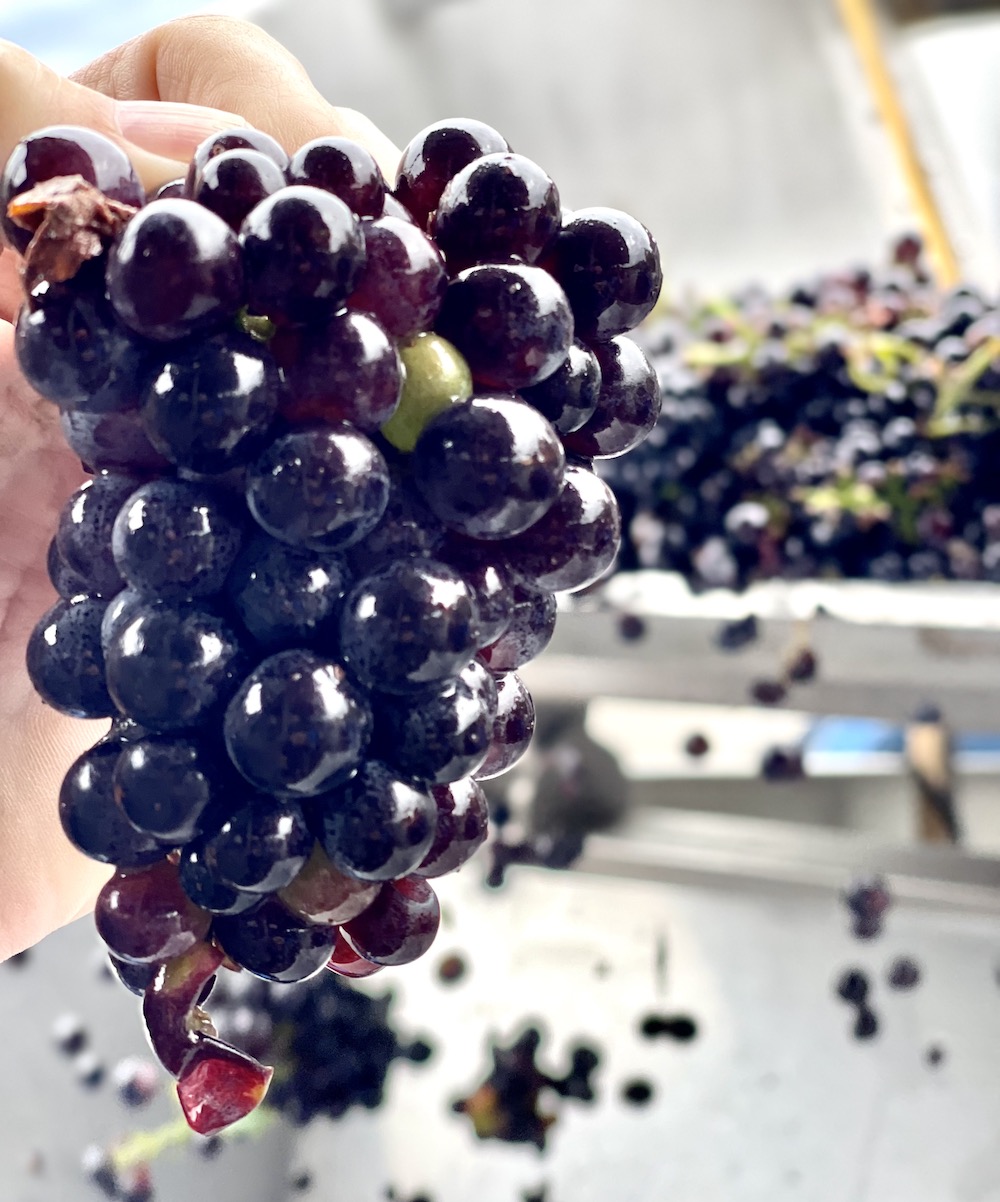
The cooler temperatures as we entered October remained throughout November along with additional rainfall. As a result of the weather, the start of the 2023 harvest was delayed and many growers harvested into December. Despite the winter damage of 2021-2022, the grape yield and quality in 2023 were high. Overall, 75,727 tonnes were harvested with a $113.5 million farm gate value.
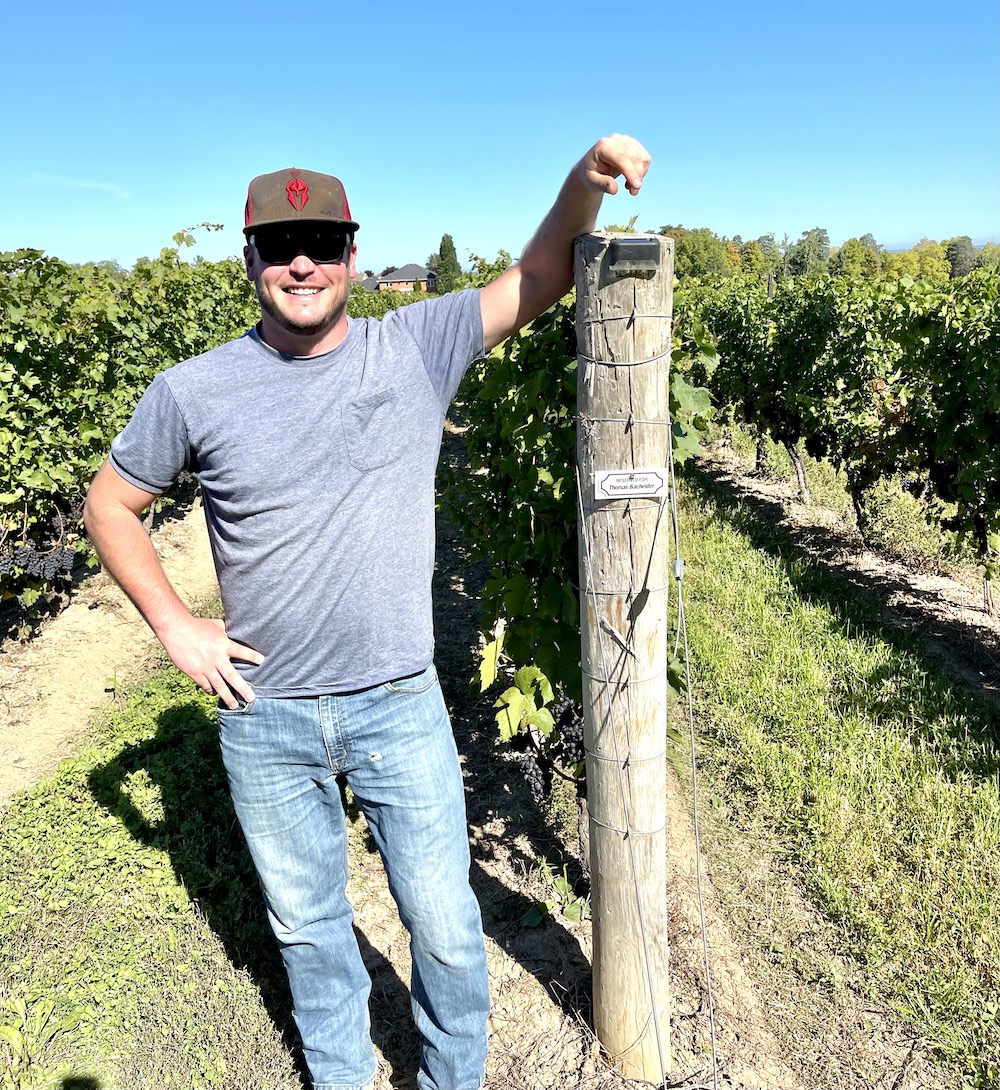
Craig Wismer, manager, Glen Elgin Vineyard Management
As usual, I think we all tend to remember a season by the harvest — and not necessarily the entire season. How quickly some forget — this season had everything, including some Niagara firsts.
We kicked off early with a very warm and dry spring, bud break and rapid growth. Virtually no disease pressure. Was this still Niagara? It didn’t feel like it. Then the smoke rolled in. We didn’t see Toronto for a month. No one had Ontario forest fire smoke on their bingo card for 2023, surely a Niagara first.
We feared the season was delayed, and when veraison finally rolled around we knew we were right. Lingering green berries told us we were behind on veraison. We dropped crop where we could, removed any green fruit and tried to expedite any ripening we could. All we could do now was grit our teeth and wait.
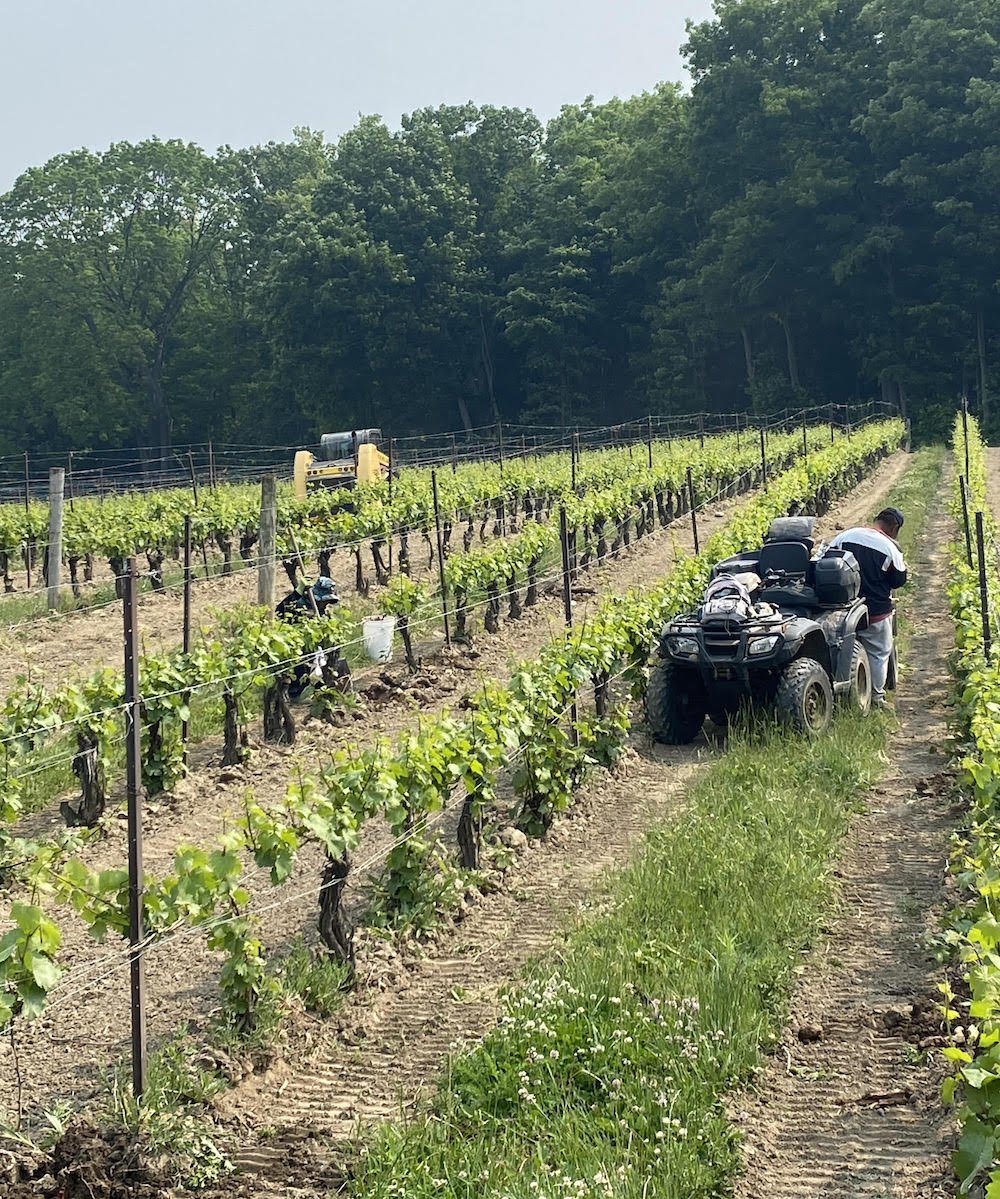
Then something remarkable happened. Good conditions and time, which we rarely have in a Niagara harvest. The fruit was spotless, and we had the luxury of just waiting. The start of harvest was delayed, but the improvement in the fruit over time was remarkable — phenolics came first. Each variety one by one was seeing brown stems, brown seeds, lignified canes, etc. Flavours developed nicely, and finally each winemaker would make a call for their own personal ideal balance between brix accumulation and acid. Have we ever had this luxury in Niagara? At least to this degree? Remarkable really. High brix, incredible flavours and spotless fruit. What else can you ask for?
At the end of the day, looking back, I think it is now beginning to be understood that 2023 will go down on paper as a bizarre year, however, one of quality. The fruit was phenolically ripe — a testament to a long growing season regardless of heat units? An early bud break and one of the latest ends to harvest in our time. Proof that time and duration of growing/maturity is more important than heat or sun in a shorter period of time, and better things happen over time.
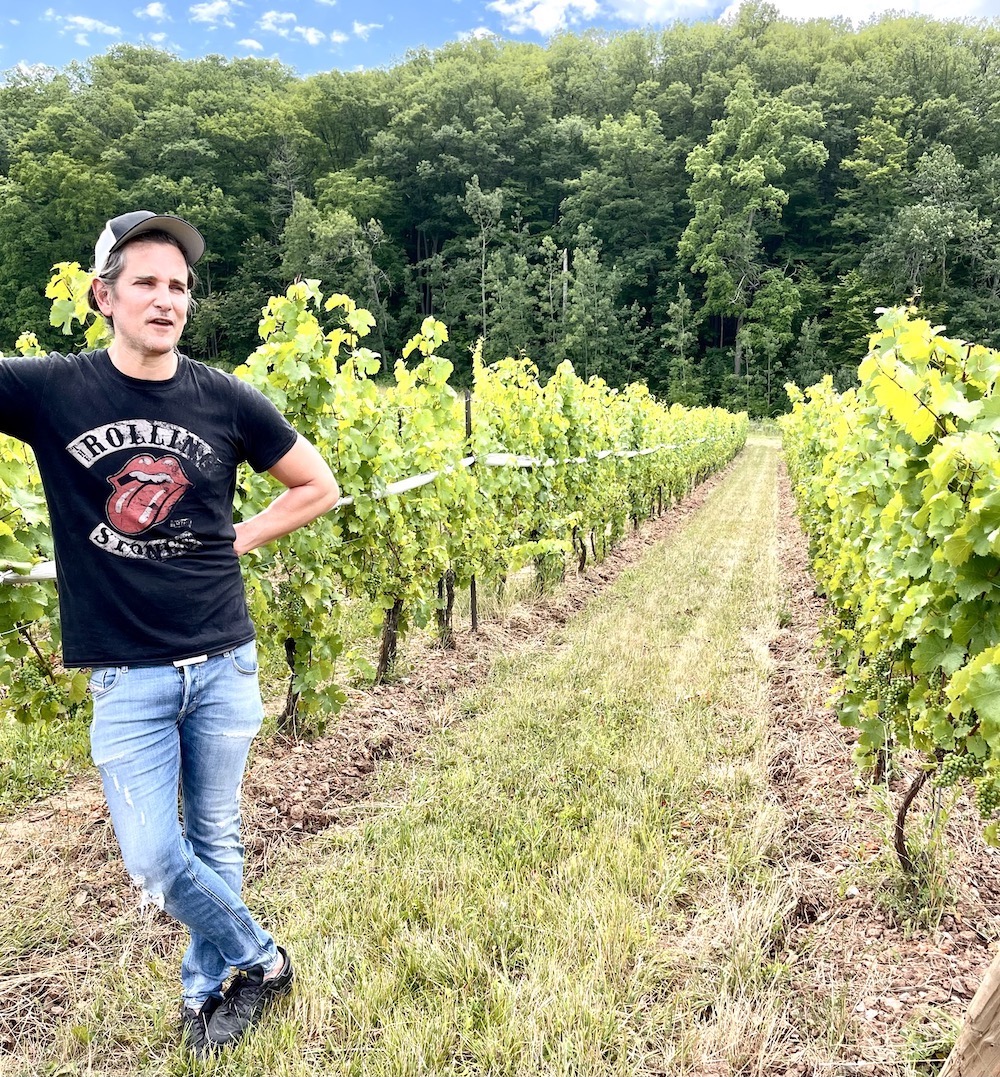
Paul Franciosa, co-owner of Grimsby Hillside Vineyard,
Lincoln Lakeshore sub-appellation
2023 was definitely a rollercoaster ride for us at Grimsby Hillside Vineyard. In some ways, it was almost the inverse of 2021, which started out great – sunny and warm most of the spring and summer – but went downhill quickly with seemingly constant rain from late August through to November. In contrast, 2023 featured a cool, wet, and challenging start to the season, followed by what was probably the best late summer and fall we can remember.
We have had great success with our expanding organic viticulture program in the past two years – we have been able to manage disease pressure very well in 2022 (admittedly, a low pressure year), and with relatively minimal pressure in 2021 despite that year’s late-season challenges – so we started out the season with a very ambitious expansion of our organic farming practices, increasing from about 20 acres in 2022 to nearly 60 acres at the start of 2023.
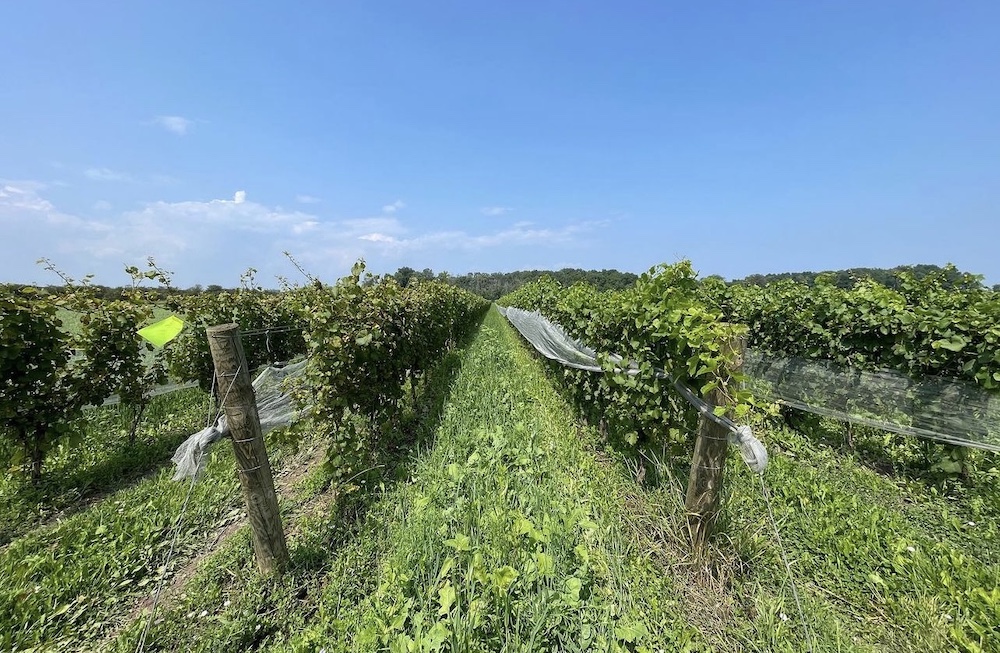
Unfortunately, the early summer brought cool temperatures, wet weather, and smoke-filled skies which blocked the sun – nearly optimal conditions for the development of downy mildew. We noticed some pressure in the western edge of our vineyard in late June, and before we knew it, evidence of it was popping up all over. We made the decision to revert to conventional sprays except where customers have requested organic farming practices and where we were in transition towards certification. Fortunately, we were able to bring the pressure down substantially in most of the vineyard, although in the organically treated blocks, we had to rely on the more liberal use of copper-based sprays than we would have liked, especially after having managed the previous two vintages with little to no copper at all.
Ultimately, it seemed like the early-season mildew pressure contributed to plant stress during flowering and fruit set, which seems to have led to smaller clusters, smaller berries, and substantially reduced yields – especially in the organic blocks, and those that started the year organic. The wet summer created quite a lot of anxiety, as we seemed to be constantly playing catch up, trying to hold back disease pressure, and living on the edge until late summer.
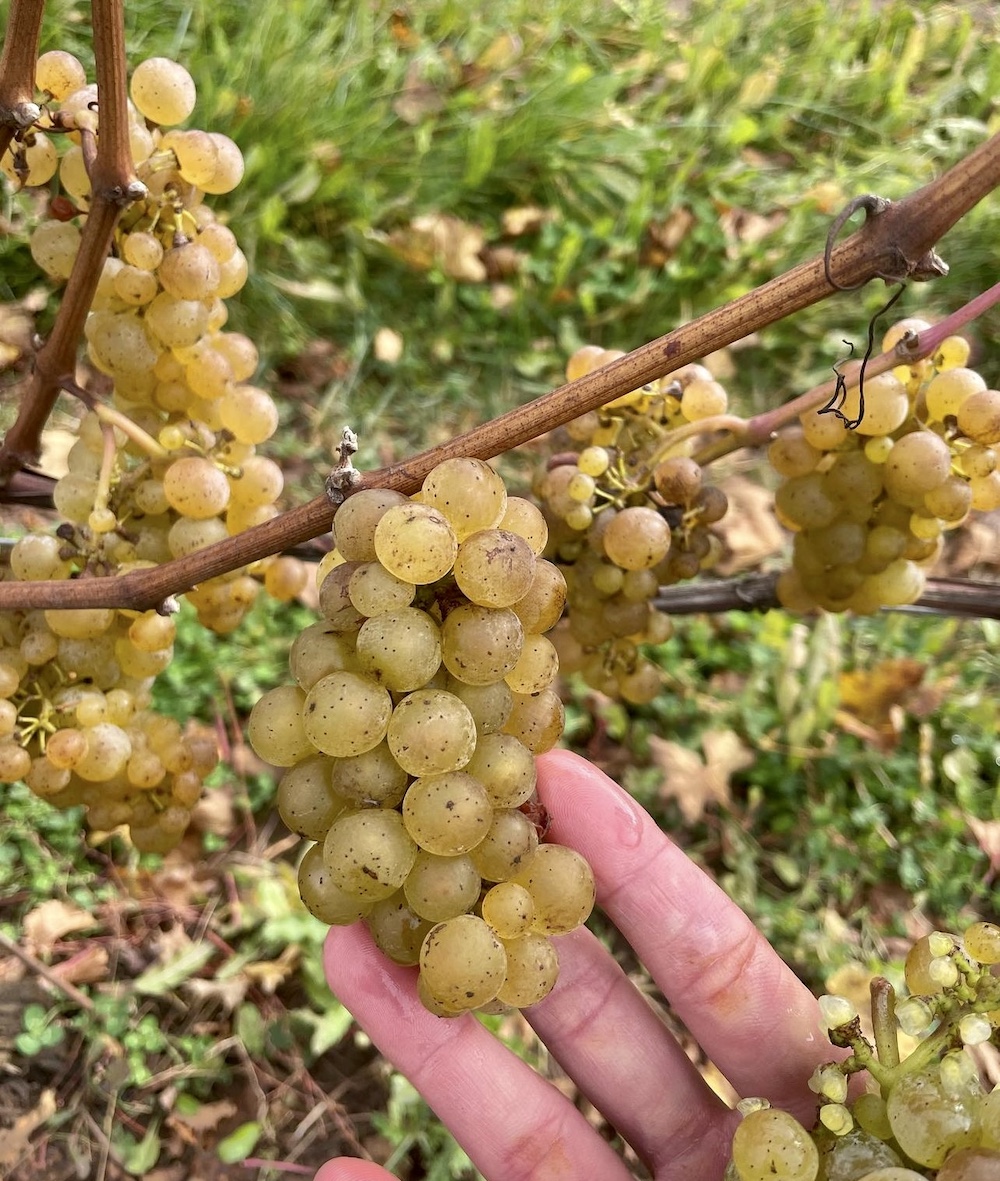
The late summer and fall were amazing … they definitely saved what was otherwise set to be a pretty unremarkable vintage. In some ways, the 2023 vintage is likely going to turn out better than 2022, and depending on your preference for wine style, maybe better than 2020. Sugar development was good, but not excessive, with lots of late season warmth and sun contributing to very good phenolic development – especially in our organic Cabernets, which we think were as good as we’ve tasted in recent years. We think the later season reds might be even better than early season varieties given the additional hang time during perfect fall conditions. For lovers of ‘classic’ vintages, I think they’ll love 2023’s restrained alcohol, but also great tasting fruit that will likely produce wines with intensity, complexity, body, and tannic structure, with good acid levels to keep wines vibrant and give them long lives in the cellar.
As it turns out, those smaller berries, clusters and yields turned out to be great for our customers, producing grapes with a ton of concentration and complexity, although probably not so advantageous for us as a grower, as it meant we fell substantially short of our harvest projections. After producing the smallest harvest on record in our vineyard in 2022, with only 67 tonnes harvested (compared to an average of 190 tonnes over the prior 18 years), 2023 ranked as the second smallest harvest we’ve produced, at only 92 tonnes.
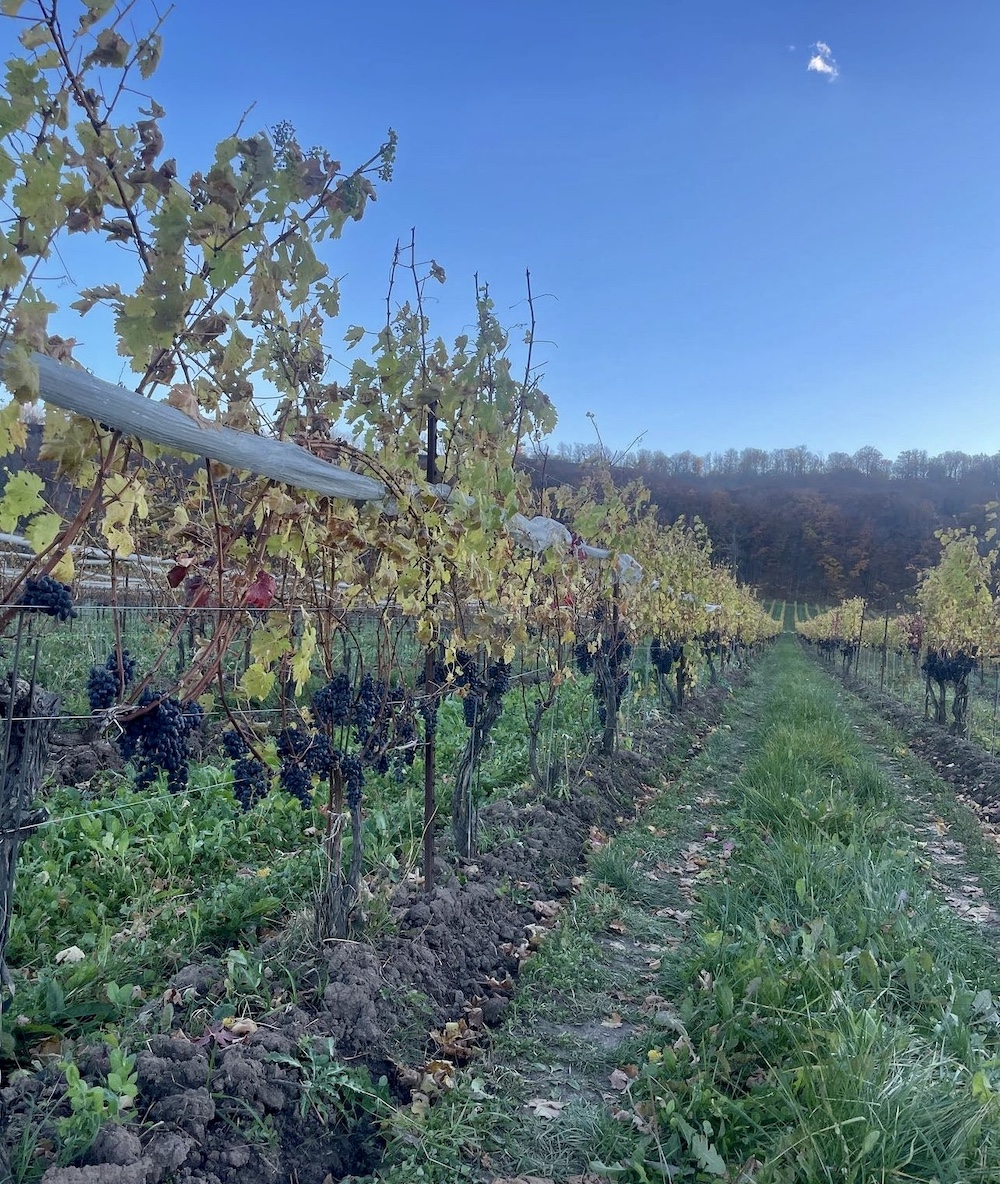
Feedback from our customers was generally quite positive at harvest and during early stages of winemaking. For lovers of Frontier Block Chardonnay, some customers were telling us it was the best fruit they had ever tasted from the block, and even our younger vines Clone 548 block is getting rave reviews early in its wine life. Our old vines Cab Franc and Cab Sauv also showed great development and complexity, and our younger vines Cab Franc from the blocks with mixed 2017/2020 plantings are really starting to come into their own, picking up a lot of density and concentration.
Overall, we’re very happy with the quality from 2023, disappointed with the yields, and would love to never see another anxiety-inducing year like that again.

Matthias Oppenlaender, GM, Huebel Grapes Estates,
Niagara-on-the-Lake
In Niagara, the growing season began favourably, with cool and dry conditions. May saw a few chilly nights requiring the need to run wind machines, while forest fires brought a new challenge, blocking sunlight and delaying bloom slightly.
Despite a late start, the month ended with intense heat and dryness. July and August proved unpredictable, marked by thunderstorms, cooler temperatures, and ample rain. However, September redeemed the season with dry, warm, and sunny weather. Harvest was delayed by approximately 10 days, allowing for an extended ripening period.
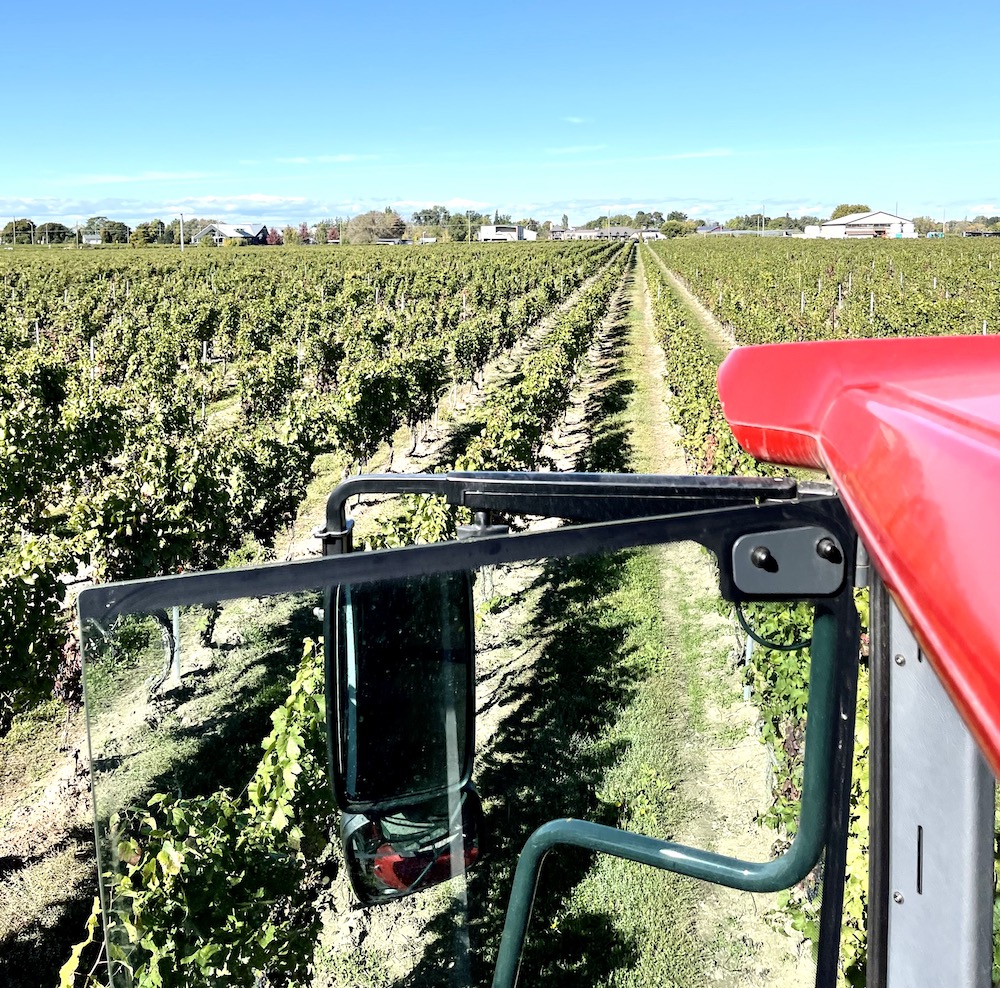
Looking ahead, 2023 holds promise for high-quality, concentrated flavours, and I’m excited to taste the Rieslings, Sauvignon Blancs, and Gamays. Overall, the season was challenging yet ultimately rewarding, showcasing the resilience of Niagara’s grape-growing and winemaking community in the face of varying weather conditions.
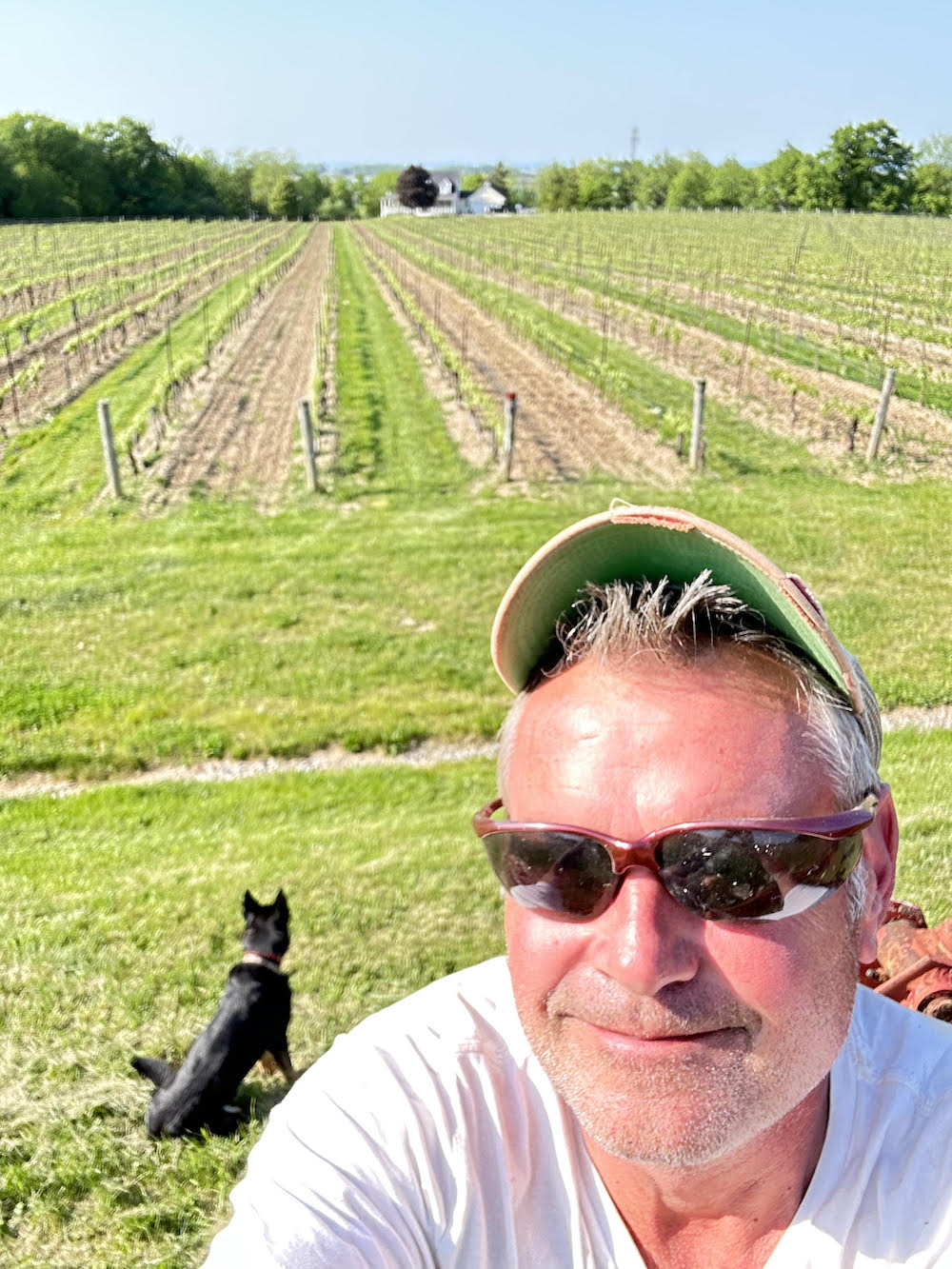
Bob Nedelko, Nedelko Vineyard, Twenty Mile Bench
The 2023 season started off with cooler than normal temperatures, but also drier than usual. However, as the season pushed into June-August, we experienced quite a bit of moisture and humidity, which necessitated plenty of spraying.
The historical average yield actually helped in that regard. My key takeaway from 2023 vintage was the incredible arrival of the hot dry weather in early September through to October, that really helped turn things around. I consider that stretch of weather the equalizer for the vintage.
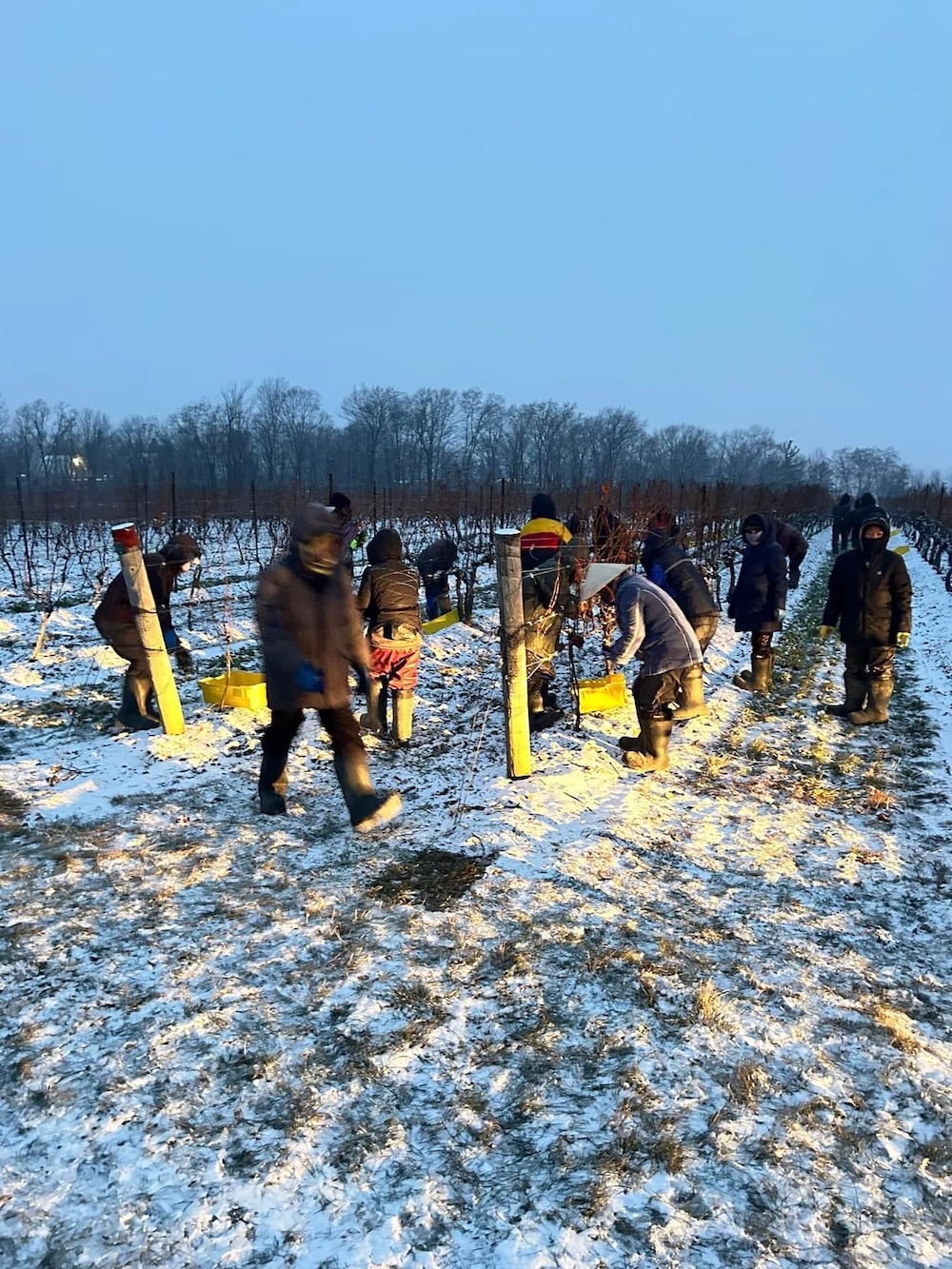
I anticipate that we will have some excellent Chardonnays, Rieslings, and Pinot Noirs from 2023. I anticipate the Cabernet Sauvignons and Merlots to be more challenged as well. We can’t have 2021 every year, unfortunately.
Prince Edward County
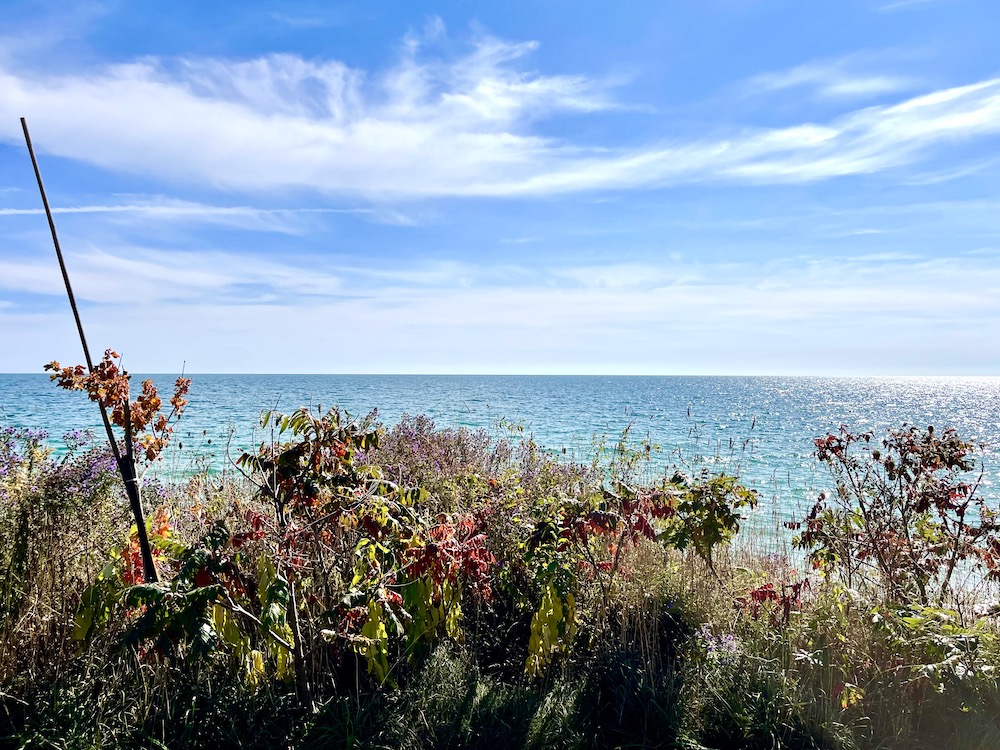
The 2023 vintage in Prince Edward County unfolded as a tale of resilience and excellence according to VQA. “Despite the challenges presented by weather fluctuations and climatic nuances, the region’s winemakers have once again demonstrated their skill and commitment to producing exceptional wines.”
The weather in Prince Edward County during the 2023 growing season was marked by a combination of factors that influenced grape development. Spring arrived with a slightly delayed bud break, attributed to a cooler-than-average start. However, a warm and dry summer, with consistent sunshine, facilitated optimal grape maturation. This was followed by a mild and extended fall, allowing for a gradual harvest and optimal ripening across different varietals.
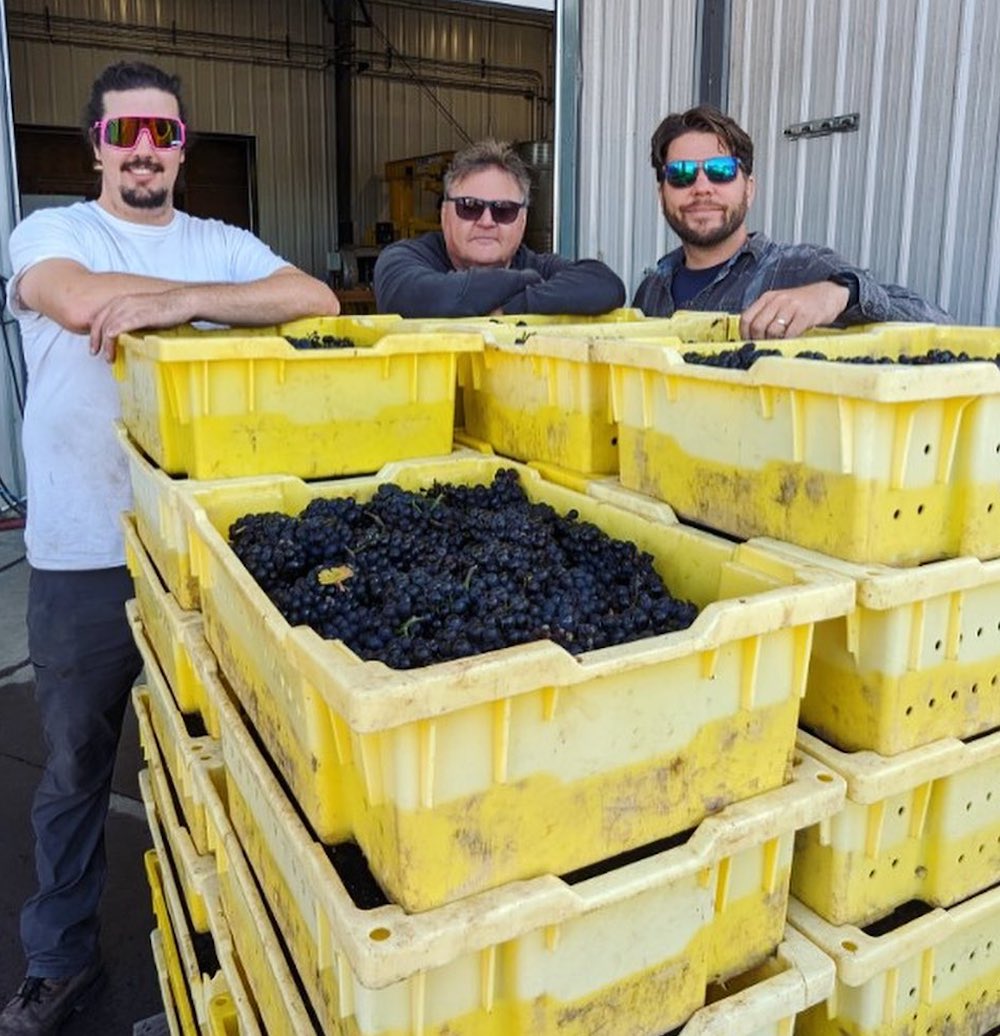
Dan Sullivan, winemaker (middle in photo),
Rosehall Run Vineyards, Prince Edward County
The 2023 growing season began a little later than usual with cool spring temperatures delaying bud break. Early season dryness allowed us to get on the vineyard early, however, to get a jump on unburying the vines well ahead of bud push in mid-May.
From mid-June, however, the weather became more challenging as high humidity and frequent July rains increased pressure on growers to stay on top of our vineyard management duties.
Flowering under these humid conditions necessitated early leaf pulling and judicious, well timed spray programs to stay ahead of the game. Post bloom it became apparent that our crop was going to be a bit lighter than I had expected but larger than that of the 2022 vintage.
In hindsight, this turned out to be a blessing as the humid, wet July conditions gave way to exceptionally dry conditions in August when there was virtually no rain. This extended into the first half of September with one 10 mm episode in early September being the only respite to the arid stretch. Random thunderstorm activity generalized statements about rainfall more difficult, but I think extended drought-like conditions are becoming an increasingly common feature of summer weather patterns in PEC.
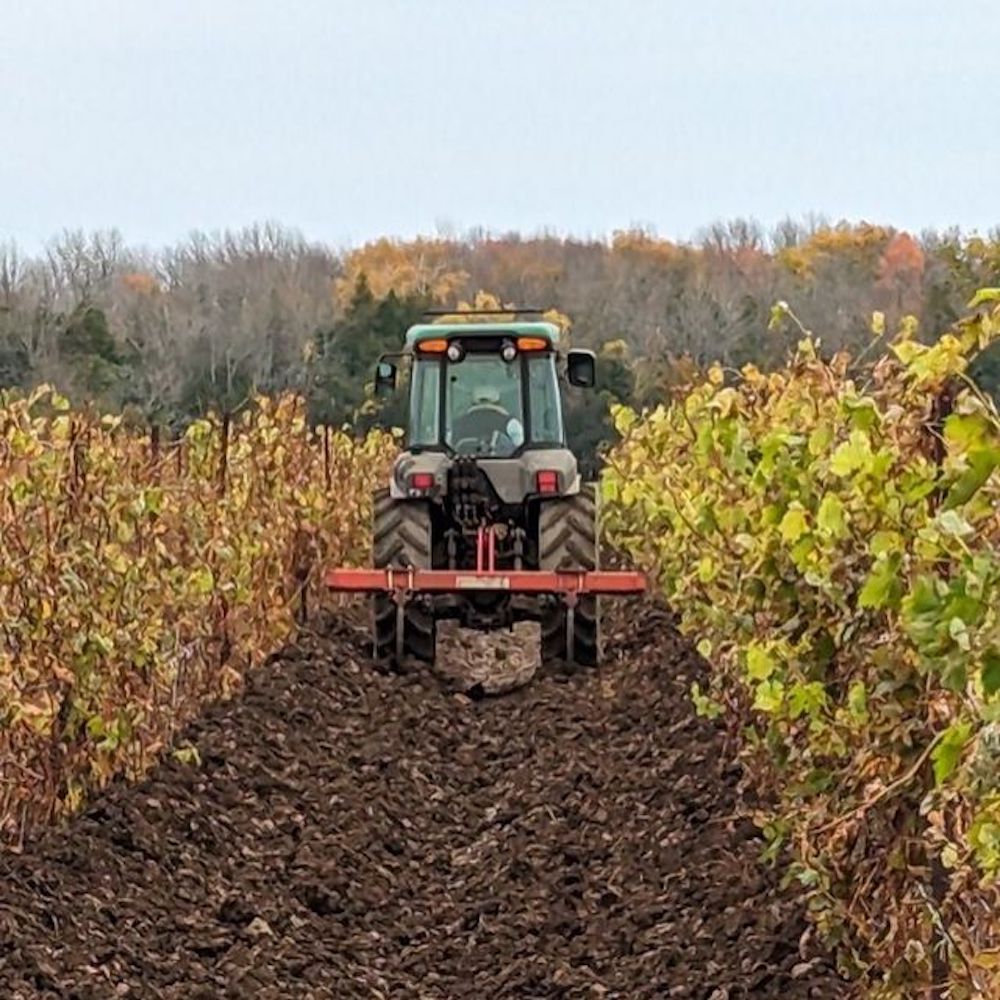
In years such as 2023, site-to-site conditions like soil type and depth, as well as varietal and rootstock selections all play significant roles in weathering drought and wet conditions.
The dry conditions were exceptionally kind to earlier season varietals. Our Pinot Noir, Pinot Gris and Chardonnay were harvested in perfectly ripe and clean condition with yields off about 20% from historical averages here at Rosehall Run. At this point the wines appear to be excellent, making both the 2022 and 2023 harvests fine in my books, with the slight edge going to 2022.
I expect consumers will be treated to an extended run of fine bottlings from the north shore of Lake Ontario over the next half decade or longer.
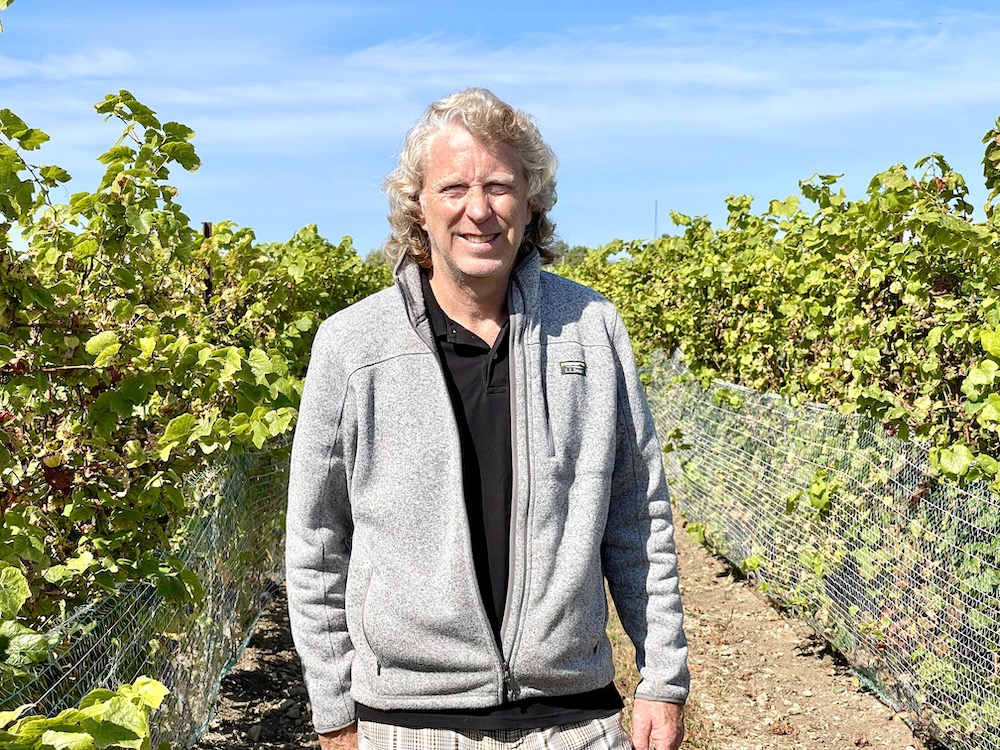
Andre Gagne, Last House Vineyard, Prince Edward County
Harvest 2023 was the fifth harvest for Last House Vineyard. It was the third harvest with a full complement of grapes coming from the newer vineyard planted in 2018.
The 2023 season started with a normal winter, with some lower temps in February. The tied down canes were well buried under soil and adequately protected. All exposed aerial canes experienced bud kill and had to be cut out in the spring.
The 2023 growing season was a bit slow to start with a cool spring and some wet conditions. Vineyard prep continued as per the schedule. During the third week of May the Hillier area was hit with a frost. Some vineyards experienced losses but at my site by the lake, it was just a single sweet cherry tree that saw damage. Moisture landed on the baby vine shoots, but temps did not dip quite low enough to kill.

Coming out of the near frost event fruit set showed itself to be quite heavy for the Chardonnay, and average for the Pinot Noir. Then the fun started …
June and July were extremely rainy. Sections of the vineyard were turned into ponds. That combined with heavy overnight dews and mist from Lake Ontario resulted in very high disease pressure. I endeavour to be fully organic in my spray regimen and started in this manner with my normal application rates. I thought things were under control but when leaf pulling was started, I began noticing damage to the berries. It turned out that both black rot and downey mildew had infected the fruit clusters. I was flabbergasted as the canopy looked OK and I had seen no signs of disease in neighbouring vineyards. Well, within I week I was spraying to save the canopy.
I now realize my site made my vineyard a canary in the coal mine for Hillier. Downey mildew creeped into the other vineyards in the area over the next month, just with a delayed timing.
The rains and quasi-military spray campaign continued into August. Then, on about Aug. 9, the rains stopped. Would they start up again? It turns out we had a dry, sunny eight weeks that saved what was left of the vintage. Due to the damaged berries, about 1/3 of clusters had to be dropped. Of those remaining clusters many had damaged berries. We gambled that the damaged berries would dry up and allow the rest of the cluster to ripen. Well, the canopy recovered, and the gamble paid off.
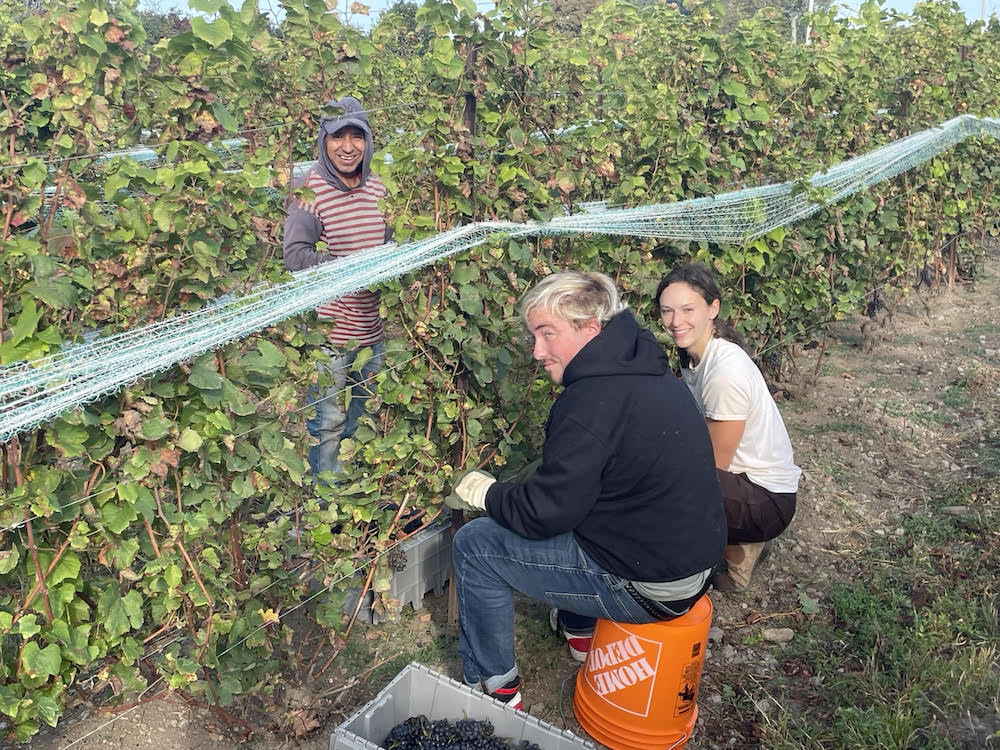
Harvest started on Sept. 30 with both the Daniel and Christian mature blocks picked over two days. A week later the younger blocks of Pinot Noir and Chardonnay were picked. Heavy triage was required both in the field and on the crush pad. Overall yield was just under 50% of the long-term target.
Sugar and phenolic ripeness were outstanding. Two versions of Pinot Noir and two versions of Chardonnay were made. I have never had better fruit to work with and I predict the vintage will be talked about for many years to come. “From a sow’s ear to a silk purse.”
For 2023, we also took off a full crop of golden Russet apples from our orchard. The fruit came in at 19 brix! This cider will be bottle-conditioned to be mildly effervescent.
We are still quite new at this and looking back on the 2023 harvest, we realize that things can go in any direction each year. No year has ever been the same. But that is real winemaking and there will always be vintage challenges. We will make the wines that the fruit allows us to make each year and we will make them honestly.
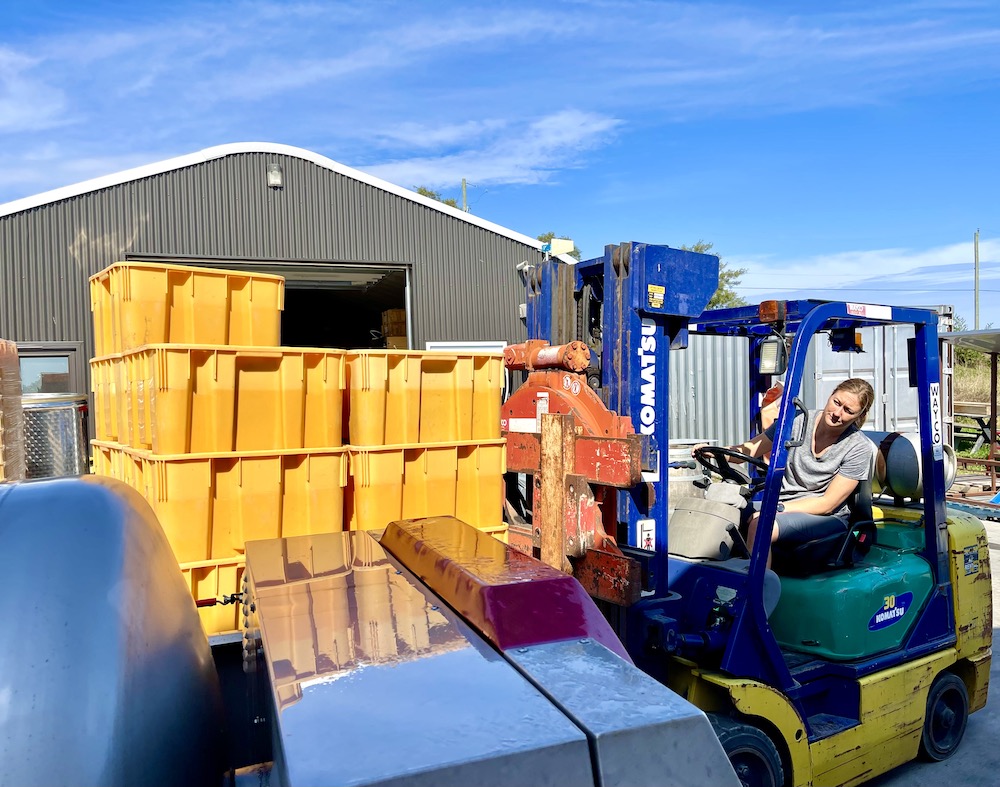
Mackenzie Brisbois, winemaker/vineyard manager,
Trail Estate Winery
What a year 2023 was. It was the best of times; it was the worst of times! We had a later spring frost in Prince Edward County and some of our earlier budding varieties showed slight damage. Most of our estate vineyard suffered little to no damage, but depending on location, some vineyards in PEC were hit harder.
The summer months were challenging with plenty of rain and humidity, but the vines seemed to come out the other side flourishing. The fall was lovely and warm. We had good yields and exceptional flavours and celebrated our Chardonnay and Pinot Noir pick as the harvest full moon rose over our table of volunteer pickers.
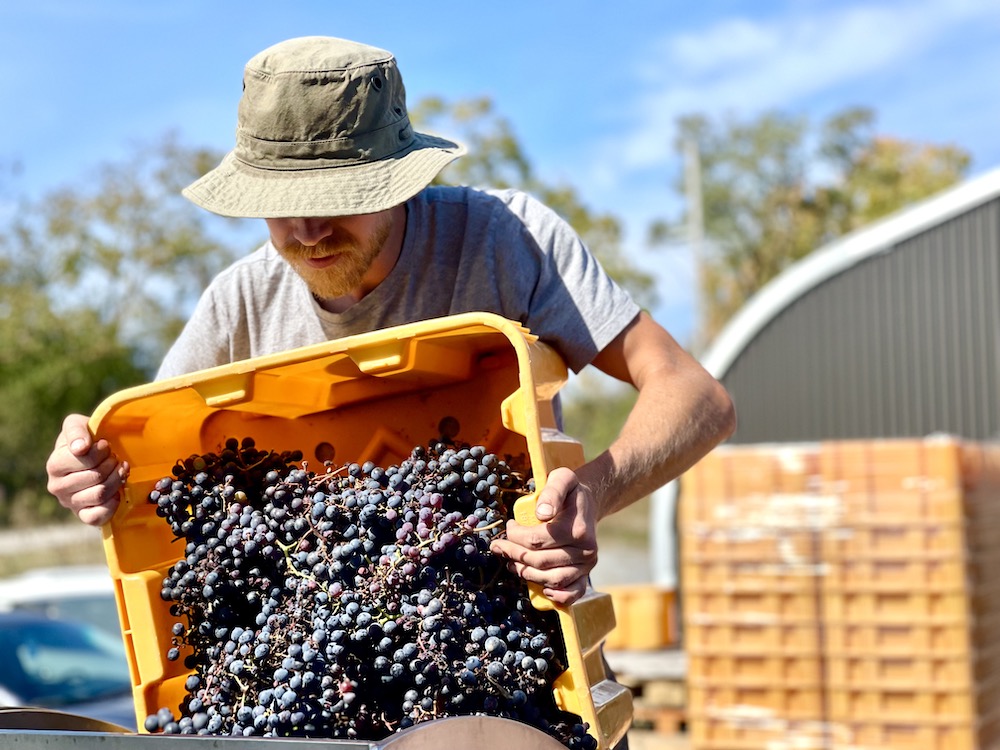
For PEC, this has been one of my favourite harvests and I’m excited about the wines in barrel — plenty of complexity, texture, and beautiful flavours.
Other regions
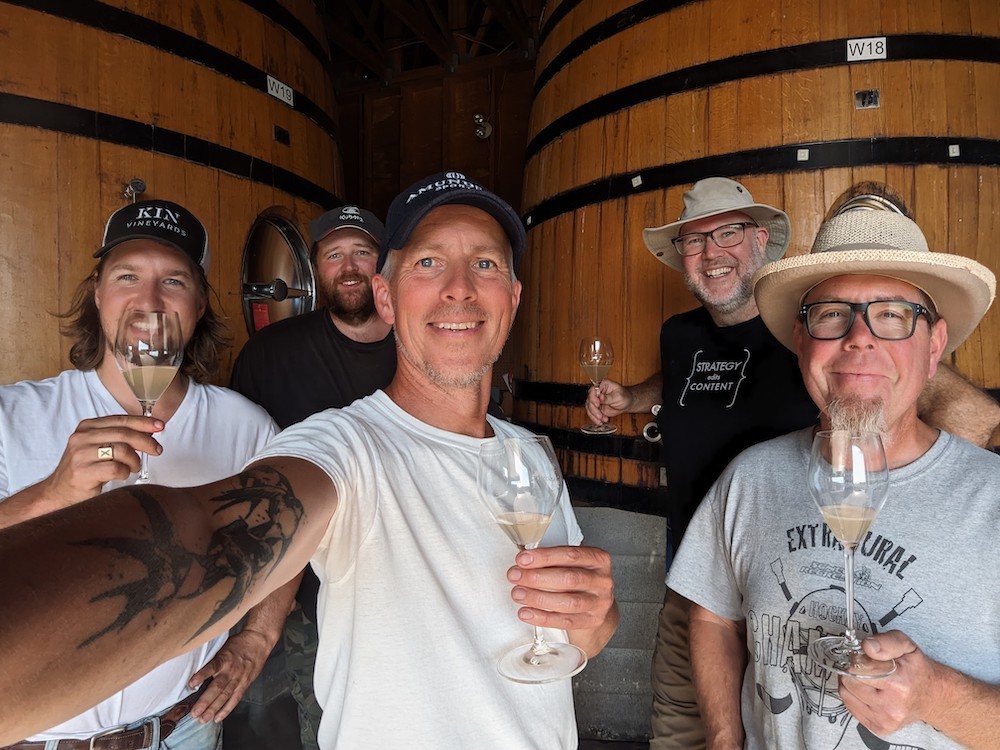
Brian Hamilton (middle), winemaker, KIN Vineyards, Ottawa Valley
The vintage year began May 10 with the unburial of our vines in the higher elevation Top and Middle Blocks of Chardonnay and Pinot Noir. The lower elevation Middle Block Pinot Noir and Bottom Block Chardonnay were left buried until the risk of frost had passed. We have learned, over the nine years since this vineyard was planted, that the lower elevation blocks are 95 vertical feet below our highest elevation site and prone to frost damage, despite many frost mitigation measures using fans, propane burners and candles.
On May 17, we did experience a light frost cold event with no significant bud damage in the unburied vines. Thankfully, the still buried lower elevation sites were unaffected.
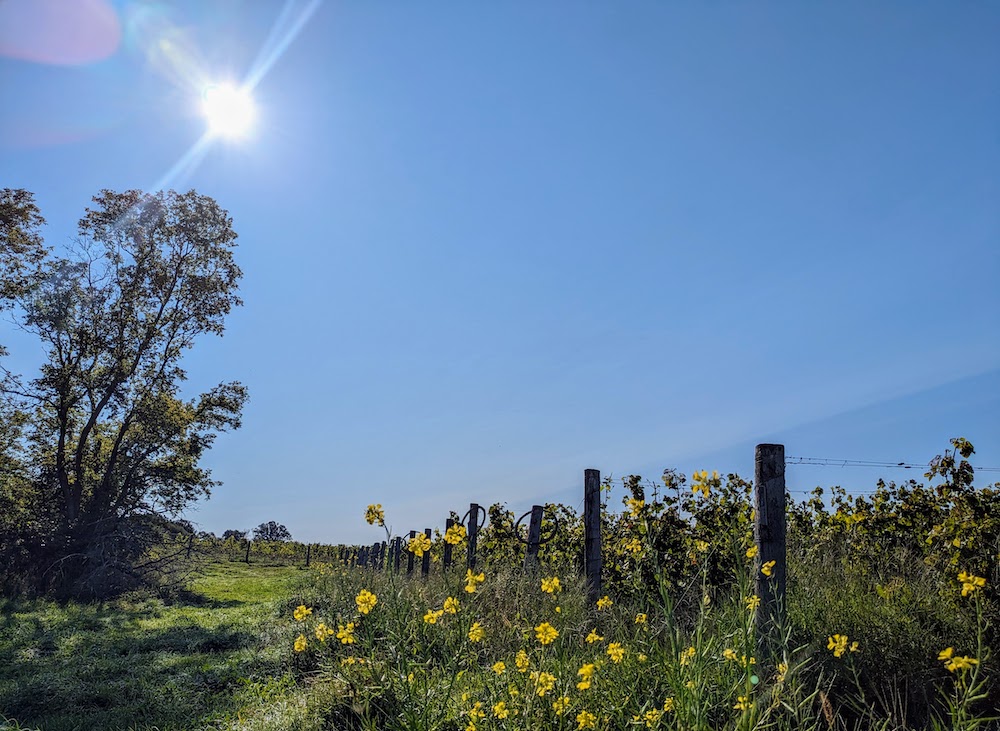
On May 19, our lower elevation sites’ vines were unburied, and their canes tied to the fruiting wires. No further cold events occurred.
The spring saw seasonal temperatures and precipitation. Flowering began in the third week in June and despite some periodic rainy periods, fruit set was excellent.
Our vineyard crew meticulously managed tucking of the vine shoots as well as a thinning of leaves around the fruiting zones following mechanical first pass through the vineyard. Chardonnay vines were leaf thinned on only one side of the vines but alternated between east and west exposure. The Pinot Noir vines were leaf thinned on both sides of the fruiting zone to help control disease and increase sun exposure.
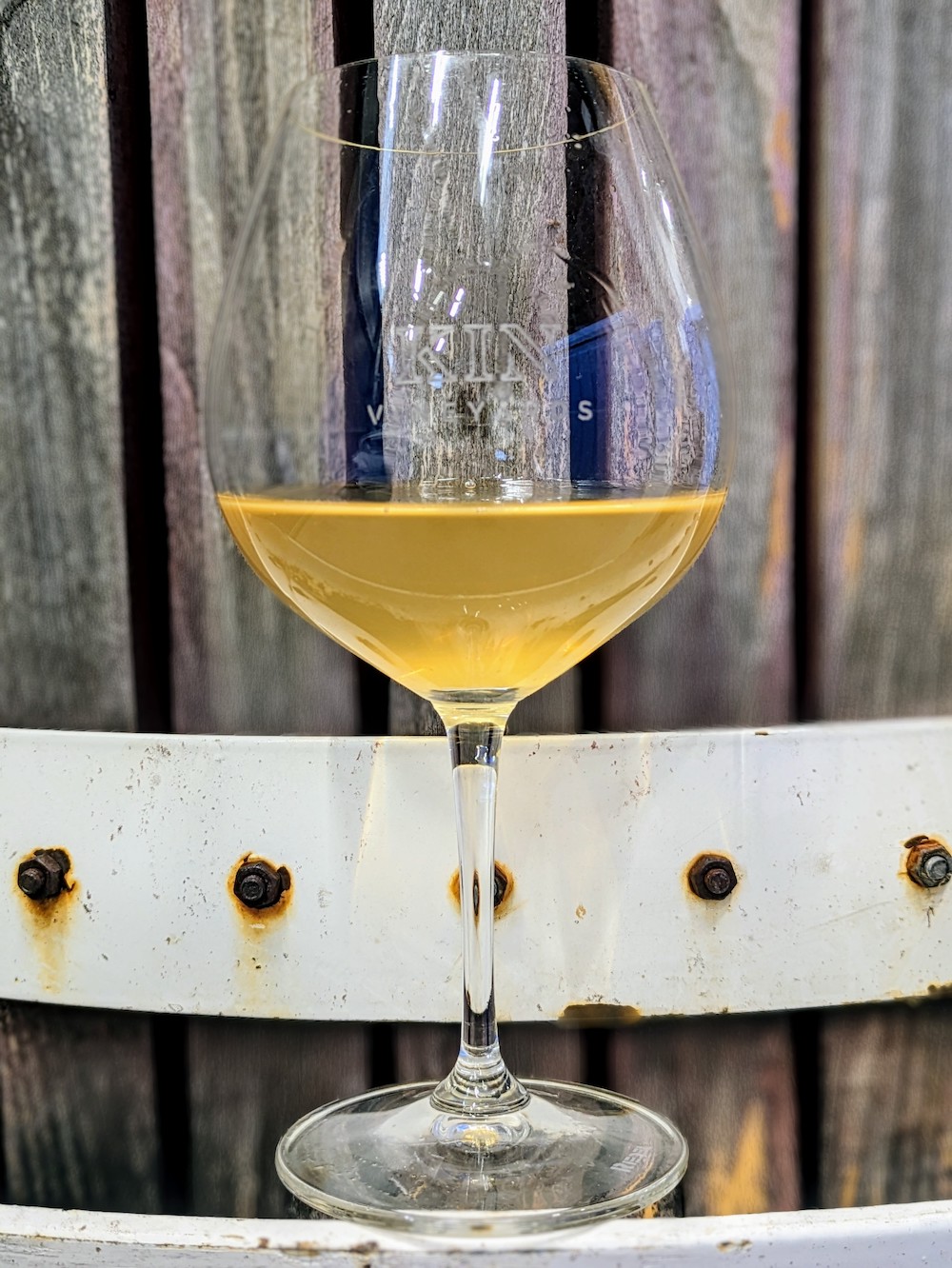
Our disease management approach, in the vineyard, is based on a sustainable farming philosophy incorporating organic, biodynamic, and conventional tools where indicated. We have seen a significant increase in vine health, yield, and quality of the fruit over the last nine years and realized our most fruitful harvest in 2023 with terrific ripeness, concentration, and freshness.
September was a perfect month with copious sunshine and dry conditions allowing for ideal conditions for continued ripening before harvest began Sept. 23 with Chardonnay for our first Carp Ridge Blanc de Blancs. Custom pressing at Closson Chase Vineyards is always a highlight of our harvest as we catch up with awesome winemaker, Keith Tyers.
Chardonnay harvest for both Carp Ridge Barreled Chardonnay and Skin Fermented styles followed on Sept. 30. Pinot Noir harvest occurred over the span of a few days from Sept. 29 to Oct. 3. Carp Ridge Chardonnay yielded 1.4 tonnes/acre while Carp Ridge Pinot Noir ranged from 0.6 tonnes/acre to 1.7 tonnes/acre depending on site, aspect, and clone.
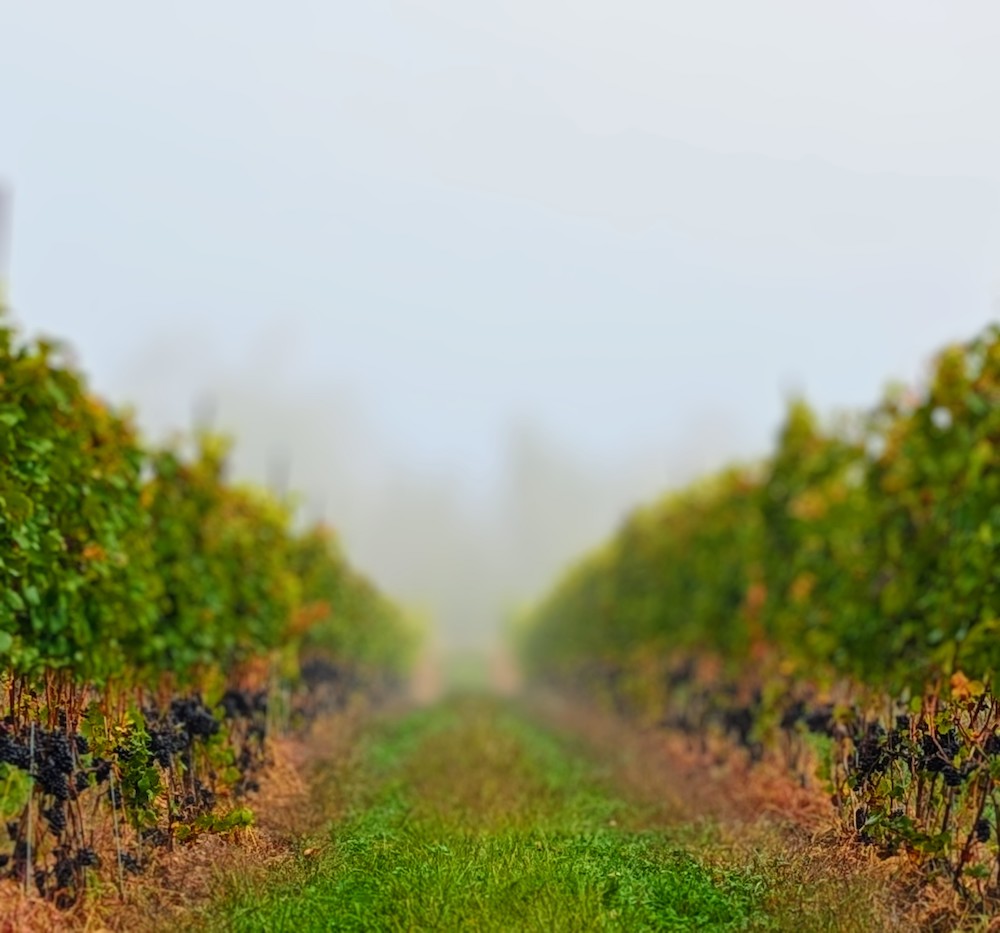
Our vineyard crew had the vines pruned, canes mulched, and canes buried by Nov. 8, keeping them safe from winter’s cold until unburial in May 2024. Our Carp Ridge wines will see 10 months elevage before blending and bottling in Sept. 2024 with an anticipated 2 years (or longer) bottle aging before release.
Lake Erie North Shore
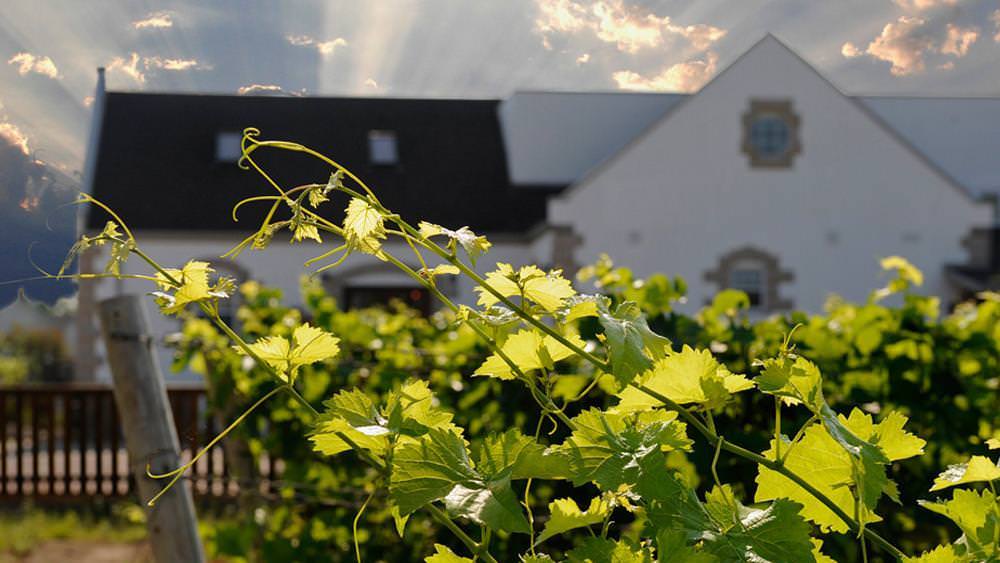
While no wineries in Lake Erie North Shore responded to Wines in Niagara’s request for their reports on the harvest, VQA had this to say about the region …
The climatic conditions during the 2023 growing season exhibited a mix of challenges and opportunities. The spring started with moderate temperatures, encouraging early bud break and a promising start to the growing cycle. However, this was followed by sporadic temperature fluctuations, presenting some concerns for frost damage.
Vineyard managers and winemakers employed various protective measures, including frost fans to safeguard the delicate buds during critical stages.
Summer brought warm and sunny periods, promoting healthy vine growth and fruit development. Adequate rainfall throughout the season contributed to well-hydrated vines, ensuring a balanced ripening process. While some regions experienced occasional heavy rainfall, diligent vineyard management mitigated the risk of disease and ensured optimal grape quality.
White wines from this vintage exhibit vibrant acidity, showcasing the bright fruit character and minerality inherent in the grapes. Riesling stands out with its crisp acidity and aromatic profile, reflecting the unique microclimates of the region. Red wines from 2023 showcase rich fruit expression, well-integrated tannins, and a balanced structure. Cabernet Franc and Merlot have excelled in this vintage, presenting a harmonious blend of dark fruit flavours and subtle earthy notes.
About Grape Growers of Ontario
Grape Growers of Ontario is the official organization that represents over 500 grape growers and 18,000 acres of vineyards for processing grapes in the three Designated Viticulture Areas in Ontario: Niagara Peninsula, Lake Erie North Shore, Prince Edward County, and emerging regions such as Norfolk, Ottawa and Simcoe.
For 75 years it has served as the voice and authority for our passionate and hard-working growers, and continue to endorse relevant topics of viticulture, grapes, and wine occurring in our growing industry. We are an independent, self-governing farming organization acting under the authority of the Ontario Farm Products Marketing Act and are funded entirely by grape growers who pay a fee per metric tonne of grapes sold. These funds are used to support the grape-growing system and to promote the grape and wine industry in the province.
Note: Coming up soon on Wines in Nagara, our annual Vintage Chart updated to include the 2023 vintage and drinking window of vintages dating back to 1998.






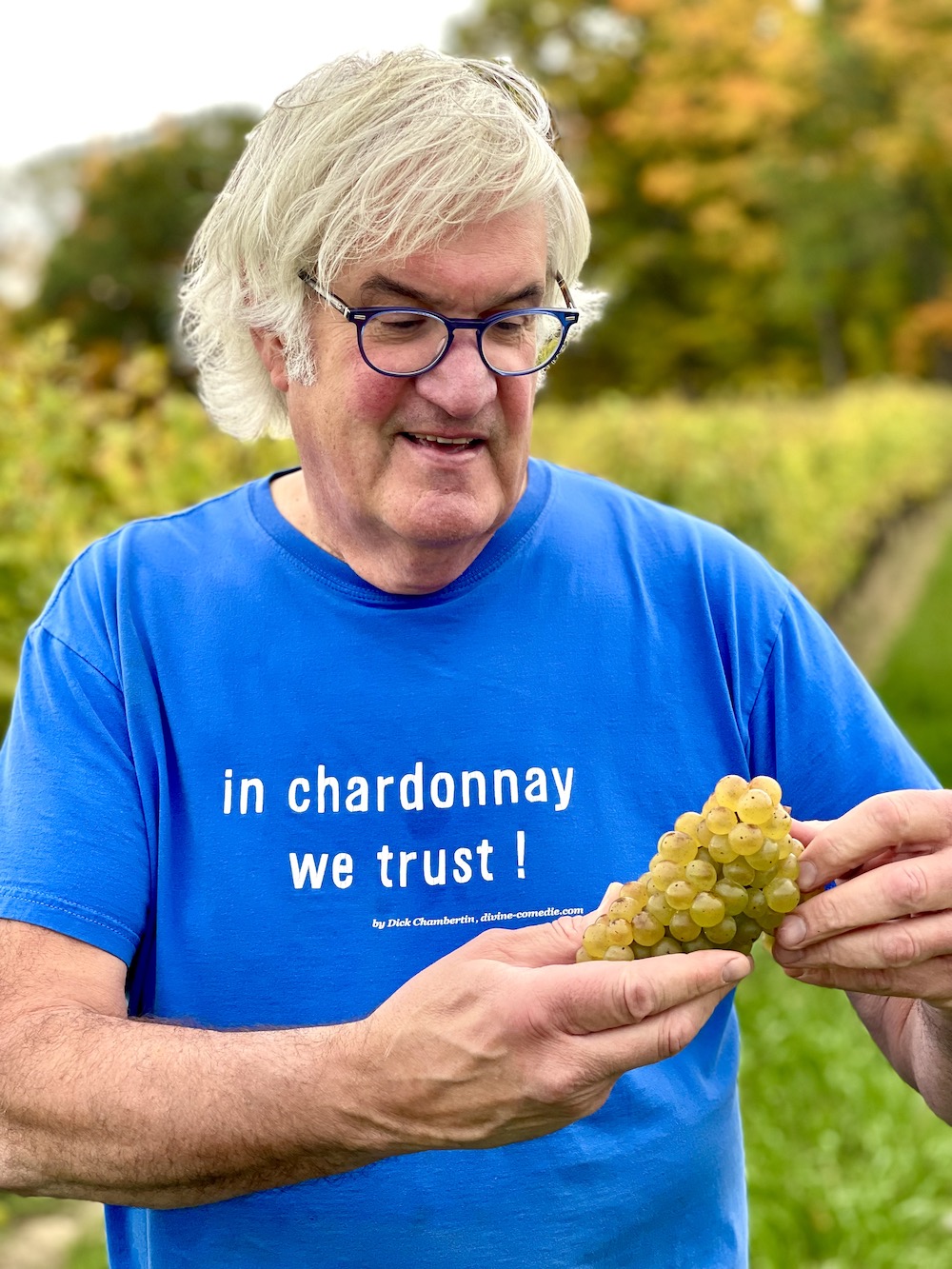

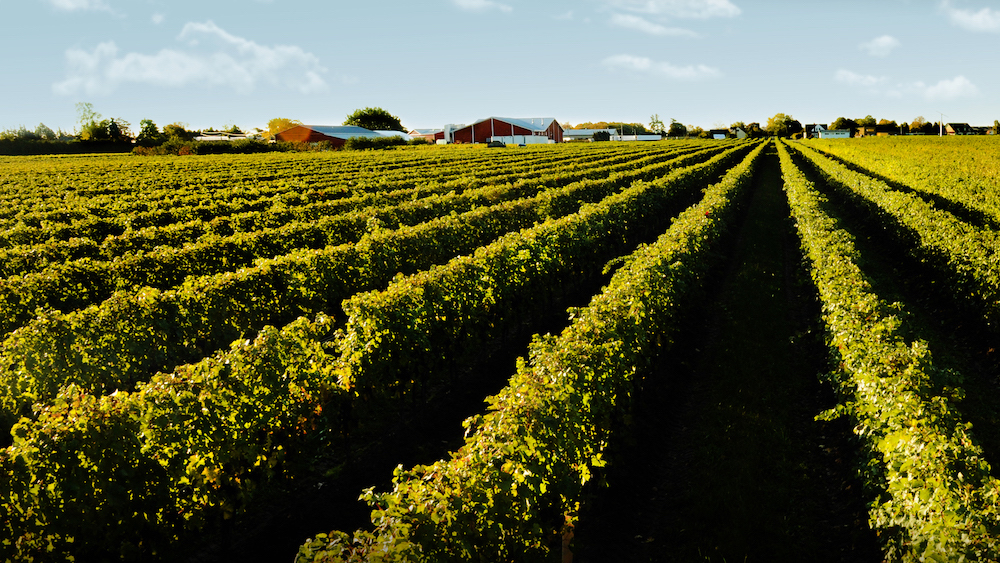

Very Impressive Rick! Such great broad spectrum of the wine industry for the 2023 vintage.
Jamie, thanks so much, you are always a huge part of the report. For that I am grateful to you and all in the Ontario wine industry who take the time to write down your thoughts. Cheers!